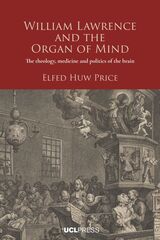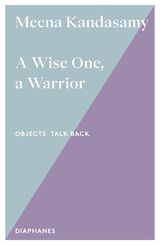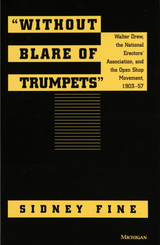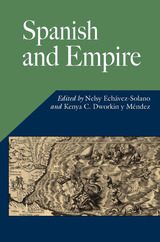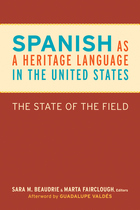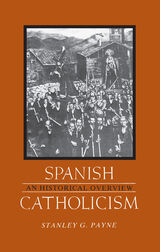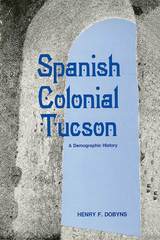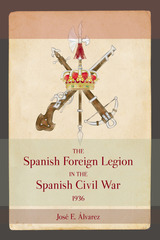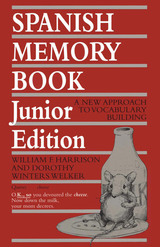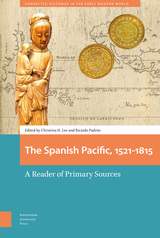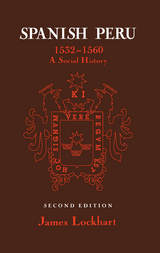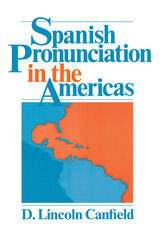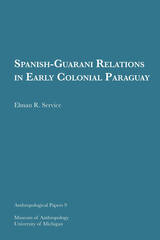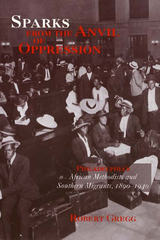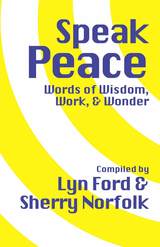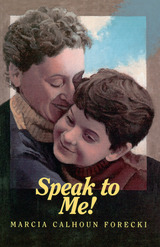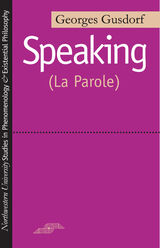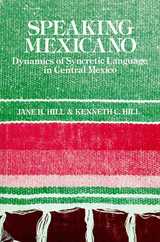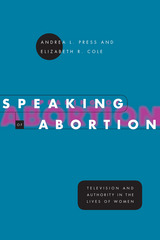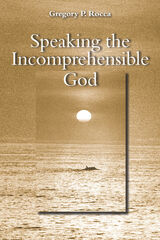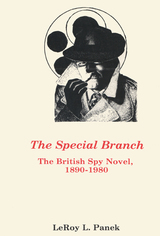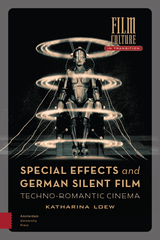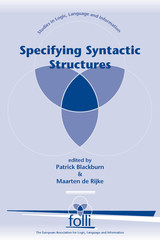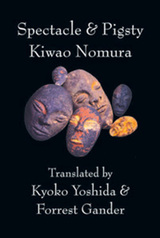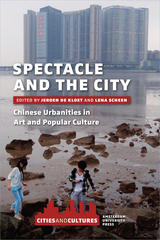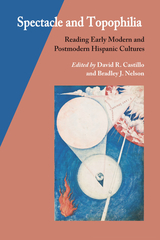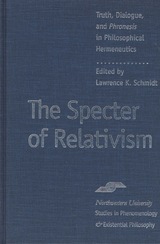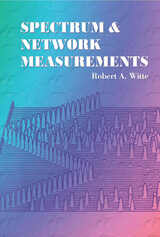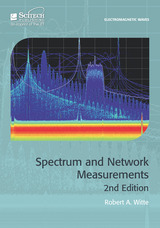Spanish and Empire
Nelsy Echavez-Solano
Vanderbilt University Press, 2007 Essays in this volume deal with the historical, linguistic, and ideological legacy of the Spanish Empire and its language in the New World.
Spanish as a Heritage Language in the United States: The State of the Field
Sara M. Beaudrie and Marta Fairclough, Editors. Afterword by Guadalupe Valdés
Georgetown University Press, 2012 There is growing interest in heritage language learners—individuals who have a personal or familial connection to a nonmajority language. Spanish learners represent the largest segment of this population in the United States. In this comprehensive volume, experts offer an interdisciplinary overview of research on Spanish as a heritage language in the United States. They also address the central role of education within the field. Contributors offer a wealth of resources for teachers while proposing future directions for scholarship.
Spanish Catholicism: An Historical Overview
Stanley G. Payne
University of Wisconsin Press, 1984 “This is the first complete history of Spanish Catholicism in English. The history of the Spanish church is rich, complex, and controversial, and this enormous undertaking by Stanley Payne is all the more praiseworthy in view of his determination not to limit his study to the church alone, but to investigate the relationship between the Catholic Church and Spanish culture and nationhood in general.”—Isaac Aviv, Mediterranean Historical Review
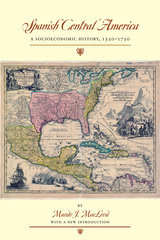 Spanish Central America: A Socioeconomic History, 1520–1720
By Murdo J. MacLeod
University of Texas Press, 2007 The seventeenth century has been characterized as "Latin America's forgotten century." This landmark work, originally published in 1973, attempted to fill the vacuum in knowledge by providing an account of the first great colonial cycle in Spanish Central America. The colonial Spanish society of the sixteenth century was very different from that described in the eighteenth century. What happened in the Latin American colonies between the first conquests, the seizure of long-accumulated Indian wealth, the first silver booms, and the period of modern raw material supply? How did Latin America move from one stage to the other? What were these intermediate economic stages, and what effect did they have on the peoples living in Latin America? These questions continue to resonate in Latin American studies today, making this updated edition of Murdo J. MacLeod's original work more relevant than ever. Colonial Central America was a large, populous, and always strategically significant stretch of land. With the Yucatán, it was home of the Maya, one of the great pre-Columbian cultures. MacLeod examines the long-term process it underwent of relative prosperity, depression, and then recovery, citing comparative sources on Europe to describe Central America's great economic, demographic, and social cycles. With an updated historiographical and bibliographical introduction, this fascinating study should appeal to historians, anthropologists, and all who are interested in the colonial experience of Latin America.
Spanish Cinema of the New Millennium: And the Winner Is...
Thomas G. Deveny
Intellect Books, 2019 Spanish Cinema of the New Millennium provides a new approach to the study of contemporary Spanish cinema between 2000 and 2015 through the analysis of films that represent both "high" culture and "popular" culture. The two film cultures are represented by Goya Award–winning films and box-office successes. Thomas G. Deveny's examination of the country's most important films in this 16-year period provides a rigorous academic analysis of contemporary Spain's film industry, identity, and culture.
Spanish Colonial Tucson: A Demographic History
Henry F. Dobyns
University of Arizona Press, 1976 “[Dobyns] has written a fascinating account of the ethnic development of early Tucson. Using a variety of methods and sources, he reveals how Spaniards, mestizos from New Spain, and Native Americans from many tribes laid the ethnic foundations for the modern city. The book also provides much insight into the general history of Spanish colonial society as it evolved in the Tucson area to 1821. . . . Dobyns, utilizing previously unpublished primary sources, allows the early inhabitants of the Tucson area to speak for themselves, and their comments add much to a very colorful and exciting but often grim story. . . . And his penetrating look at the ethnic development of early Tucson should attract attention from anyone interested in a better understanding of how the nation as a whole achieved its multi-cultural character.” —The Journal of American History
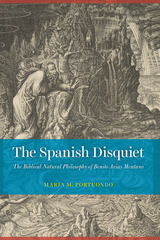 The Spanish Disquiet: The Biblical Natural Philosophy of Benito Arias Montano
María M. Portuondo
University of Chicago Press, 2019 In this book, historian María M. Portuondo takes us to sixteenth-century Spain, where she identifies a community of natural philosophers and biblical scholars. They shared what she calls the “Spanish Disquiet”—a preoccupation with the perceived shortcomings of prevailing natural philosophies and empirical approaches when it came to explaining the natural world.
Foremost among them was Benito Arias Montano—Spain’s most prominent biblical scholar and exegete of the sixteenth century. He was also a widely read member of the European intellectual community, and his motivation to reform natural philosophy shows that the Spanish Disquiet was a local manifestation of greater concerns about Aristotelian natural philosophy that were overtaking Europe on the eve of the Scientific Revolution. His approach to the study of nature framed the natural world as unfolding from a series of events described in the Book of Genesis, ultimately resulting in a new metaphysics, cosmology, physics, and even a natural history of the world. By bringing Arias Montano’s intellectual and personal biography into conversation with broader themes that inform histories of science of the era, The Spanish Disquiet ensures an appreciation of the variety and richness of Arias Montano’s thought and his influence on early modern science.
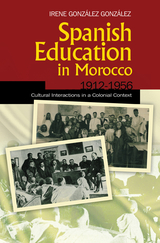 Spanish Education in Morocco, 1912-1956: Cultural Interactions in a Colonial Context
Irene Gonzalez
Sussex Academic Press, 2022 After establishing the Spanish Protectorate in Northern Morocco (1912-1956), Spain needed to create a system of colonial policies for the territory it was now to govern. Education became one instrument among many at the service of colonization. Spain created its own colonial educational model based on Spanish schools, Spanish-Arab schools and Spanish-Jewish schools, which coexisted with Koranic madrasas and Talmudic, Alliance Israelite Universelle and nationalist schools. The institutions created for Moroccans by the Spaniards united tradition -the Arabic and Hebrew languages and Muslim and Jewish religions- with the models and principles of the schools in Spain at the time. The end goal was to instruct the population according to a pro-Spanish, colonizer-friendly ideology in order to control the society and territory in a way that complemented military policies. The coup d'etat led by General Franco in Spain in 1936 brought about a change in policy in the Spanish Protectorate in Morocco. The Franco government's innovation was to Moroccanize the teaching paradigm, which transformed the Spanish-Arab educational model into a Moroccan model. The Spanish-Arab concept gave way to a Moroccan concept, which entailed the recognition of a national identity based on linguistic and religious precepts on the part of Spain. This process of Moroccanization did not develop under the same terms in other parts of the country, which gave the Spanish Protectorate its distinctive traits. Spain developed a policy that combined educational and cultural aspects through a discourse of Spanish-Arab brotherhood. The establishment of cultural institutions was a sign of this symbiosis and the policy became an important part of how the regime presented itself abroad.
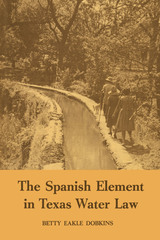 The Spanish Element in Texas Water Law
By Betty Eakle Dobkins
University of Texas Press, 1959 The Spanish element in Texas water law is a matter of utmost importance to many landholders whose livelihood is dependent on securing water for irrigation and to many communities particularly concerned about water supply. Titles to some 280,000 acres of Texas land originated in grants made by the Crown of Spain or by the Republic of Mexico. For these lands, the prevailing law, even today, is the Hispanic American civil law. Thus the question of determining just what water rights were granted by the Spanish Crown in disposing of lands in Texas is more than a matter of historical interest. It is a subject of great practical importance. Spanish law enters directly into the question of these lands, but its influence is by no means confined to them. Texas water law in general traces its roots primarily to the Spanish law, not to the English common law doctrine of riparian rights or to the Western doctrine of prior appropriation (both of which were, however, eventually incorporated in Texas law). A clear understanding of this background might have saved the state much of the current confusion and chaos regarding its water law. Dobkins’s book offers an intensive and unusually readable study of the subject. The author has traced water law from its origin in the ancient world to the mid-twentieth century, interpreting the effect of water on the counties concerned, setting forth in detail the development of water law in Spain, and explaining its subsequent adoption in Texas. Copious notes and a complete bibliography make the work especially valuable. The idea for this book came in the midst of the great seven-year drought in Texas, from 1950 to 1957. The author gave two reasons for her study: “One was my belief that the water problems, crucial to all Texas, can be solved only when Texans become conscious of their imperative needs and only if they become informed and aroused enough to act. “The second reason came from a realization that water—common, universal, and ordinary as it is—had been overlooked by the historian. It is high time that this oversight be corrected. In American history the significance of land, especially in terms of the frontier, has been spelled out in large letters. The importance of water has been recognized by few.”
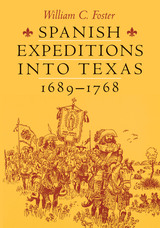 Spanish Expeditions into Texas, 1689-1768
By William C. Foster
University of Texas Press, 1995 Mapping old trails has a romantic allure at least as great as the difficulty involved in doing it. In this book, William Foster produces the first highly accurate maps of the eleven Spanish expeditions from northeastern Mexico into what is now East Texas during the years 1689 to 1768. Foster draws upon the detailed diaries that each expedition kept of its route, cross-checking the journals among themselves and against previously unused eighteenth-century Spanish maps, modern detailed topographic maps, aerial photographs, and on-site inspections. From these sources emerges a clear picture of where the Spanish explorers actually passed through Texas. This information, which corrects many previous misinterpretations, will be widely valuable. Old names of rivers and landforms will be of interest to geographers. Anthropologists and archaeologists will find new information on encounters with some 139 named Indian tribes. Botanists and zoologists will see changes in the distribution of flora and fauna with increasing European habitation, and climatologists will learn more about the "Little Ice Age" along the Rio Grande.
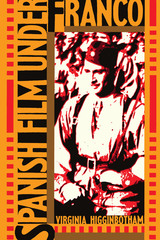 Spanish Film Under Franco
By Virginia Higginbotham
University of Texas Press, 1988 How does a totalitarian government influence the arts, and how do the arts respond? Spanish Film Under Franco raises these important questions, giving English speakers a starting point in their study of Spanish cinema. After a brief overview of Spanish film before Franco, the author proceeds to a discussion of censorship as practiced by the Franco regime. The response of directors to censorship—the “franquista aesthetic,” or “aesthetic of repression,” with its highly metaphorical, oblique style—is explored in the works of Luis Buñuel, Carlos Saura, Juan Antonio Bardem, Luis García Berlanga, and other important directors. Virginia Higginbotham combines historical perspective with detailed critical analysis and interpretation of many famous Franco-era films. She shows how directors managed to evade the censors and raise public awareness of issues relating to the Spanish Civil War and the repressions of the Franco regime. Film has always performed an educational function in Spain, reaching masses of poor and uneducated citizens. And sometimes, as this study also reveals, Spanish film has been ignored when the questions it raised became too painful or demanding. The author concludes with a look at post-Franco cinema and the directions it has taken. For anyone interested in modern Spanish film, this book will be essential reading.
The Spanish Foreign Legion in the Spanish Civil War, 1936
José E. Alvarez
University of Missouri Press, 2016 In 1936, the Spanish Foreign Legion was the most well equipped, thoroughly trained, and battle-tested unit in the Spanish Army, and with its fearsome reputation for brutality and savagery, the Legion was not only critical to the eventual victory of Franco and the Nationalists, but was also a powerful propaganda tool the Nationalists used to intimidate and terrorize its enemies. Drawing upon Spanish military archival sources, the Legion’s own diary of operations and relevant secondary sources, Alvarez recounts the pivotal role played by the Spanish Foreign Legion in the initial months of the Spanish Civil War, a war that was not only between Spaniards, but that pitted the political ideology of Communism and Socialism against that of Fascism and Nazism.
 Spanish in Four Continents: Studies in Language Contact and Bilingualism
Carmen Silva-Corvalán, Editor
Georgetown University Press This collection is the first to examine the effects of bilingualism and multilingualism on the development of dialectal varieties of Spanish in Africa, America, Asia and Europe. Nineteen essays investigate a variety of complex situations of contact between Spanish and typologically different languages, including Basque, Bantu languages, English, and Quechua. The overall picture that evolves clearly indicates that although influence from the contact languages may lead to different dialects, the core grammar of Spanish remains intact. Silva-Corvalán's volume makes an important contribution both to sociolinguistics in general, and to Spanish linguistics in particular. The contributors address theoretical and empirical issues that advance our knowledge of what is a possible linguistic change, how languages change, and how changes spread in society in situations of intensive bilingualism and language contact, a situation that appears to be the norm rather than the exception in the world.
Spanish In the Americas
Eleanor Greet Cotton and John M. Sharp, Editors
Georgetown University Press This encyclopedic text focuses on the nature of Hispanic dialects, the spread of Spanish, and contemporary Spanish dialects in the Americas.
Spanish in the United States: Sociolinguistic Issues
John J. Bergen
Georgetown University Press, 1990 Fifteen research linguists discuss the varieties of Spanish spoken in California, Iowa, Indiana, Louisiana, New Jersey, New Mexico, New York, and Texas. They variously address language maintenance, syntactic variation, lexicography, language use and language teaching, and include studies on socioeconomic, political, and cultural aspects of language in the Spanish-speaking communities in the United States.
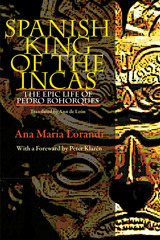 Spanish King Of The Incas: The Epic Life Of Pedro Bohorques
Ana Maria Lorandi
University of Pittsburgh Press, 2005
Described in his lifetime as “mad,” “a dreamer,” “quixotic,” and “a lunatic,” Pedro Bohorques is one of the most fascinating personalities of Spanish colonial America. A common man from an ordinary Andalusian family, he sought his fortune in the new world as a Renaissance adventurer.
Smitten with the idea of the mythical cities of gold, Bohorques led a series of expeditions into the jungles of Peru searching for the paradise of El Dorado. Having mastered the Quechua language of the countryside, he presented himself as a descendent of Inca royalty and quickly rose to power as a king among the Calchaquíes of Tucumán. He was later arrested and executed by the crown for his participation in a peasant revolt against Spanish rule.
In Spanish King of the Incas, Ana María Lorandi examines Bohorques as a character whose vision, triumphs, and struggles are a reflection of his seventeenth-century colonial world. In this thoroughly engaging ethnohistory, Lorandi brings to light the many political and cultural forces of the time. The status of the Inca high nobility changed dramatically after the Spanish conquest, as native populations were subjugated by the ruling class. Utopian ideals of new cities of riches such as El Dorado prevailed in the public imagination alongside a desire to restore an idealized historic past. As the Middle Ages gave way to the new belief systems of the Renaissance, ingenuousness about mythical creatures became strong, and personal success was measured by the performance of heroic deeds and the attainment of kingdoms. Charismatic and bold, Pedro Bohorques flourished in the ambiguous margins of this society full of transition and conflict.
Ann de León's artful translation preserves both the colorful details of the story and the clarity of expression in Lorandi's complex analyses.
Spanish Memory Book: A New Approach to Vocabulary Building
By William F. Harrison and Dorothy Winters Welker
University of Texas Press, 1990 Using mnemonics is an age-old technique for remembering names, numbers, and many other things. In Spanish Memory Book, William Harrison and Dorothy Welker offer original mnemonic rimes that are by turns amusing, ironic, pathetic, sentimental, and sardonic to help students and independent learners acquire and remember Spanish vocabulary. Included are mnemonic jingles for 700 of the 2,000 most commonly used Spanish words. Each jingle contains both the sound of the Spanish word and its English meaning. The authors have included a general pronunciation guide to Spanish vowels and consonants. This innovative approach, which the authors have used successfully with their own students, is simple, effective, and entertaining. In the words of one student, "This book teaches me not only Spanish words but English words as well."
Spanish Memory Book: A New Approach to Vocabulary Building, Junior Edition
By William F. Harrison and Dorothy Winters Welker
University of Texas Press, 1990 Mnemonics is an age-old technique for remembering names, numbers, and many other things. In Spanish Memory Book, Junior Edition, William Harrison and Dorothy Welker offer onginal mnemonic rimes appropriate in subject matter and skill level for junior high and high school students to help them acquire and remember Spanish vocabulary. Included are mnemonic jingles for several hundred of the 2,000 most commonly used Spanish words. Each jingle contains both the sound of the Spanish word and its English meaning. The authors have also included a general pronunciation guide to Spanish vowels and consonants. This innovative approach, which the authors have used successfully with their own students, is simple, effective, and entertaining. In the words of one student, "This book teaches me not only Spanish words but English words as well."
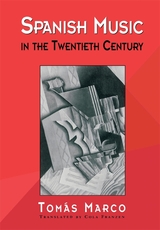 Spanish Music in the Twentieth Century
Tomas Marco
Harvard University Press, 1993 From the exhilarating impact of Isaac Albeniz at the beginning of the century to today's complex and adventurous avant-garde, this complete interpretive history introduces twentieth-century Spanish music to English-speaking readers. With graceful authority, Tomas Marco, award-winning composer, critic, and bright light of Spanish music since the 1960s, covers the entire spectrum of composers and their works: trends and movements, critical and popular reception, national institutions, influences from Europe and beyond, and the effect of such historic events as the Spanish Civil War and the death of Franco. Marco's penetrating aesthetic critiques are threaded throughout each phase of this rich account.
Marco provides detailed coverage of the key figures, induding a chapter devoted entirely to Manuel de Falla—Spain's most celebrated twentieth-century composer—and a panoramic survey of recent arrivals on the contemporary music scene. Exploring the rise and fall of the zarzuela, the author highlights innovative works in this authentic Spanish genre. He analyzes the attempts to find an audience for Spanish opera; demonstrates the flowering of symphonic and chamber music at the beginning of this century; traces currents such as romanticism, impressionism, and neoclassicism; and tracks the influence of Spain's distinctive regional folk traditions. Covering musical innovation after Spain's emergence from its period of isolation, Marco notes the speed with which many composers absorbed the work of Stravinsky and Bartok, the twelve-tone system, aleatory forms, electronic techniques, and other European developments.
English-speaking scholars, musicians, critics and general readers have for decades been without full information on the rich and varied work coming out of Spain in this century. This lively history fills a long-felt need and fills it superbly, with the knowledge and insights of a major figure in the musical world.
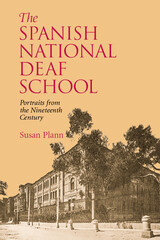 The Spanish National Deaf School: Portraits from the Nineteenth Century
Susan Plann
Gallaudet University Press, 2007 In nineteenth-century Spain, the education of deaf students took shape through various contradictory philosophies and practices. Susan Plann depicts this ambivalence by profiling a select group of teachers and students in her detailed history The Spanish National Deaf School: Portraits from the Nineteenth Century.
Plann’s subjects reveal the political, financial, and identity issues that dominated the operation of the National School for Deaf-Mutes and the Blind in Madrid from 1805 to1899. Roberto Francisco Prádez y Gautier, the first deaf teacher in Spain, taught art from 1805–36; he also was the last deaf teacher for the next 50 years. Juan Manuel Ballesteros, the hearing director from 1835 to1868, enacted an “ableist” policy that barred deaf professors. At the same time, another hearing teacher, Francisco Fernández Villabrille, wrote the first Spanish Sign Language dictionary. In the 1870s, two deaf students, Manuel Tinoco and Patricio García, resisted the physical abuse they received and set the stage for the growth of a Deaf identity that opposed the deprecating medical model of deafness. Marcelina Ruiz Ricote y Fernández a hearing female teacher who taught from 1869 to 1897, combated the school’s sexist polices. The Spanish National Deaf School concludes with Martín de Martín y Ruiz, the most famous deaf-blind student from the Madrid school. Through these portraits, Plann has brought life to the major issues that defined education in nineteenth-century Spain, themes that have influenced the status of deaf Spaniards today.
The Spanish Pacific, 1521-1815: A Reader of Primary Sources
Christina Lee
Amsterdam University Press, 2020 The Spanish Pacific designates the space Spain colonized or aspired to rule in Asia between 1521 -- with the arrival of Ferdinand Magellan -- and 1815 -- the end of the Manila-Acapulco galleon trade route. It encompasses what we identify today as the Philippines and the Marianas, but also Spanish America, China, Japan, and other parts of Asia that in the Spanish imagination were extensions of its Latin American colonies. This reader provides a selection of documents relevant to the encounters and entanglements that arose in the Spanish Pacific among Europeans, Spanish Americans, and Asians while highlighting the role of natives, mestizos, and women. A-first-of-its-kind, each of the documents in this collection was selected, translated into English, and edited by a different scholar in the field of early modern Spanish Pacific studies, who also provided commentary and bibliography.
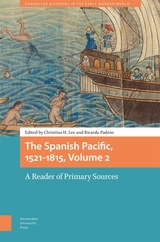 The Spanish Pacific, 1521-1815, Volume 2: A Reader of Primary Sources
Christina Lee
Amsterdam University Press, 2024 This second collection of primary sources in English translation ranges across a gamut of places and moments in the early modern Spanish Pacific. It may be used in conjunction with Volume 1 or on its own. While its focus continues to be on the encounters and entanglements that arose in the Spanish Pacific, it more strongly emphasizes the challenges faced by secular and ecclesiastical authorities in their attempts to control a distant colony and reshape its culture, from the complex forms of identify formation in the diverse world of the colonial Philippines to the complexities of inter-imperial rivalry in East and Southeast Asia as a whole. As with Volume 1, each document is introduced by a specialist in the field and includes a list of suggestions for further reading. An introductory essay surveys current work in the field of early modern Spanish Pacific studies and provides a lengthy bibliography.
Spanish Peaks: Land and Legends
Conger Beasley, Jr.
University Press of Colorado, 2006 The Spanish Peaks stand alone some distance from the main cordillera of the Sangre de Cristo Mountains, south of Pueblo, Colorado. The towering twin mountains have served as beacons for Native Americans, Spaniards, trappers, traders, travelers on the Santa Fe trail, miners, and homesteaders. Spanish Peaks shares the legends the mountains have inspired and tells of the peoples drawn to the peaks' shelter. Author Conger Beasley Jr. and photographer Barbara Sparks portray the people who struggle to sustain their lives here and document traditional events such as the Ute Bear Dance and Holy Week among the penitentes of Huerfano Church. Beasley's vivid writing and Sparks's photographs offer tribute to a rugged, mysterious place.
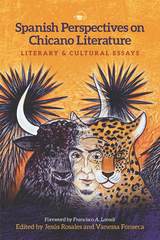 Spanish Perspectives on Chicano Literature: Literary and Cultural Essays
Vanessa Fonseca and Jesús Rosales
Ohio State University Press, 2017 In their comprehensive study Spanish Perspectives on Chicano Literature: Literary and Cultural Essays, editors Jesús Rosales and Vanessa Fonseca provide a fresh set of perspectives on the field of Chicano literary and cultural studies. Composed of essays by scholars who live and work in the United States in addition to those who work primarily in Spain, the book examines how Spanish literary critics view and study Chicano literature. In general, these critics demonstrate a deep interest in Chicano culture in relation to its American, Mexican, and Spanish identities, or multiple cultural mestizajes.
For Chicanos this interest is intriguing, for they see Spain’s vision of the Chicano both with inviting enthusiasm and justifiable reservation—enthusiasm because this interest shows a humanistic concern in understanding their social issues (national identity, bilingualism, immigration, feminism, and so on) in relation to Spain’s own, and reservation because there still prevails an “open wound” from their historical connection with that country. In other words, a lingering Spanish colonial presence still exists in the Chicano psyche. These Spanish perspectives are important to consider as Chicano literature reflects on its place in twenty-first-century America and its transnational and global aspirations.
Spanish Peru, 1532–1560: A Social History
James Lockhart
University of Wisconsin Press, 1994 When Spanish Peru, 1532–1560 was published in 1968, it was acclaimed as an innovative study of the early Spanish presence in Peru. It has since become a classic of the literature in Spanish American social history, important in helping to introduce career-pattern history to the field and notable for its broad yet intimate picture of the functioning of an entire society. In this second edition, James Lockhart provides a new conclusion and preface, updated terminology, and additional footnotes.
 Spanish Phonology: A Syllabic Perspective
Sonia Colina
Georgetown University Press, 2010 Spanish Phonology offers a comprehensive analysis of a variety of crucial issues in the phonology and morphophonology of various dialects of Spanish including syllable types, syllabification algorithms, syllable repair mechanisms, syllable mergers, nasal assimilation, obstruent vocalization and spirantization, obstruent neutralization, diphthongs and hiatuses, glide formation, onset strengthening, aspiration, rhotics, velarization, plural formation, word classes, and diminutives. Written from the perspective of optimality theory and with syllabic structure at its core, this volume highlights recent advances in Spanish phonology. The book includes margin notes to highlight key points and a glossary of constraints. Each chapter includes study questions, lists of the most influential sources for each chapter, and topics for further research. Spanish Phonology is intended as core reading for advanced phonology courses in Spanish linguistics, general linguistics, and related areas such as bilingualism, language variation, language acquisition, and speech and hearing.
Spanish Pronunciation in the Americas
D. Lincoln Canfield
University of Chicago Press, 1981 This book represents the culmination of a lifetime of research in the spoken Spanish dialects of the Americas by one of the foremost experts in this field. Based on more than sixty years of residence, travel, research, and teaching among Spanish-speaking people, Canfield's study of the phonological phenomena that have created dialects of Spanish in the Americas makes use of historical treatises, contemporary accounts, and the author's own observations. Bibliographies for each area and a main bibliography of some three hundred pertinent books and articles make this book valuable both as a text and as a reference work.
 Spanish Second Language Acquisition: State of the Science
Barbara A. Lafford and Rafael Salaberry, Editors
Georgetown University Press, 2003 Spanish Second Language Acquisition provides a panoramic overview of previous studies on the acquisition of Spanish as a second or foreign language, the theoretical approaches used in these studies, and the effects of various pedagogical approaches on the development of Spanish interlanguage systems. Barbara Lafford and Rafael Salaberry have compiled the first volume to provide a comprehensive critical overview of the research done and data compiled on how adults acquire Spanish as a second language. Major scholars in the field of SLA have contributed chapters having to do with a wide range of "products" (phonology, tense/aspect, subjunctive, clitics, lexicon, discourse/pragmatics) and "processes" (generative, cognitive and sociocultural theories) involved in the acquisition process-concluding with a discussion of the effects of instruction on Spanish interlanguage development. While being an invaluable reference tool for undergraduate and graduate programs that focus on the acquisition of Spanish as a second language, due to the extraordinary range of the review research on theoretical and methodological issues, this is also an extremely useful volume for second language theoreticians and practitioners involved in all aspects of the pedagogy of other second languages. It is the editors' desire that students, teachers, program administrators and scholars alike will benefit from the insights that the contributors bring to the myriad issues that language professionals confront.
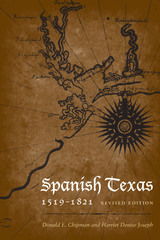 Spanish Texas, 1519–1821: Revised Edition
By Donald E. Chipman and Harriett Denise Joseph
University of Texas Press, 2010 Winner, Kate Broocks Bates Award, Texas State Historical Association
Presidio La Bahía Award, Sons of the Republic of Texas
A Choice Magazine Outstanding Academic Book Modern Texas, like Mexico, traces its beginning to sixteenth-century encounters between Europeans and Indians who contested control over a vast land. Unlike Mexico, however, Texas eventually received the stamp of Anglo-American culture, so that Spanish contributions to present-day Texas tend to be obscured or even unknown. The first edition of Spanish Texas, 1519–1821 (1992) sought to emphasize the significance of the Spanish period in Texas history. Beginning with information on the land and its inhabitants before the arrival of Europeans, the original volume covered major people and events from early exploration to the end of the colonial era. This new edition of Spanish Texas has been extensively revised and expanded to include a wealth of discoveries about Texas history since 1990. The opening chapter on Texas Indians reveals their high degree of independence from European influence and extended control over their own lives. Other chapters incorporate new information on La Salle's Garcitas Creek colony and French influences in Texas, the destruction of the San Sabá mission and the Spanish punitive expedition to the Red River in the late 1750s, and eighteenth-century Bourbon reforms in the Americas. Drawing on their own and others' research, the authors also provide more inclusive coverage of the role of women of various ethnicities in Spanish Texas and of the legal rights of women on the Texas frontier, demonstrating that whether European or Indian, elite or commoner, slave owner or slave, women enjoyed legal protections not heretofore fully appreciated.
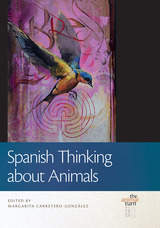 Spanish Thinking about Animals
Margarita Carretero-González
Michigan State University Press, 2020 Traditional cultural practices involving animals are being seriously questioned, heavily regulated, and, in some cases, even abolished in Spain. This essential and timely text brings together prominent scholars working in the ever-expanding field of animal studies in Spain, drawing from a variety of disciplines within the humanities and social sciences to provide an interdisciplinary look at the animal question. In choosing an angle to approach the study of ethical, aesthetic considerations, and cultural representations of animals, this collection moves away from the ideology of human exceptionalism that is still predominant but progressively losing force in the field of animal ethics in Spain. It instead includes contributions by scholars who have chosen to look at animals, to a lesser or greater degree, through an antispeciesist lens, displaying the committed attention to and respect for animal life that characterizes critical animal studies.
 Spanish Verbs Made Simple(r)
By David Brodsky
University of Texas Press, 2005 It's time for a new approach to learning Spanish verbs. Unlike popular verb guides that require the rote memorization of hundreds of verb forms, this book clearly explains the rules that govern the conjugation of all classes of Spanish verbs—especially the irregular ones that give second-language learners the most trouble. These simple, easy-to-understand rules for conjugating Spanish verbs are effective learning tools for both beginning students and more advanced speakers who want to perfect their usage of Spanish verb forms. Spanish Verbs Made Simple(r) has many helpful features that you won't find in any other verb guide: - Clear explanations of all verb tenses and forms.
- The simple rules that govern the conjugation of all verbs—including the 90% of irregular verbs whose irregularities are entirely predictable.
- A detailed discussion of how each verb form is used, with numerous examples.
- A full explanation of the distinction between ser and estar—the single most confusing element in the Spanish verbal system.
- An extended treatment of the subjunctive that will help you understand why it is used in some situations but not others.
- Conjugations for 35 model Spanish verbs and a comprehensive listing of 4,800 verbs that indicates which of the models each verb follows.
Going well beyond any other guide in the clarity and detail of its explanations—as well as the innovative manner in which individual verbs are linked to model conjugations—Spanish Verbs Made Simple(r) is the only guide to Spanish verbs a learner needs.
 Spanish Vocabulary: An Etymological Approach
By David Brodsky
University of Texas Press, 2008 Unlike other vocabulary guides that require the rote memorization of literally thousands of words, this book starts from the premise that using the etymological connections between Spanish and English words—their common derivations from Latin, Greek, and other languages—is the most effective way to acquire and remember vocabulary. This approach is suitable for beginners as well as for advanced students. Teachers of the language will also find much material that can be used to help motivate their students to acquire, and retain, Spanish vocabulary. Spanish Vocabulary is divided into four parts and four annexes: - Part I provides background material on the origins of Spanish and begins the process of presenting Spanish vocabulary.
- Part II presents "classical" Spanish vocabulary—words whose form (in both Spanish and English) is nearly unchanged from Latin and Greek.
- Part III deals with "popular" Spanish vocabulary, which underwent significant changes in form (and often meaning) during the evolution from Latin to Spanish. A number of linguistic patterns are identified that will help learners recognize and remember new vocabulary.
- Part IV treats a wide range of themes, including words of Germanic and Arabic origin, numbers, time, food and animals, the family, the body, and politics.
- Annex A: Principal exceptions to the "Simplified Gender Rule"
- Annex B: 700 words whose relations, if any, to English words are not immediately obvious
- Annex C: -cer verbs and related words
- Annex D: 4,500 additional words, either individually or in groups, with English correspondences
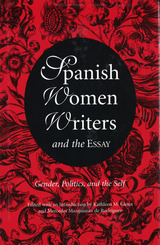 Spanish Women Writers and the Essay: Gender, Politics, and the Self
Kathleen M. Glenn and Mercedes Mazquirán de Rodríguez
University of Missouri Press, 1998
Never before has a book examined Spanish women and their mastery of the essay. In the groundbreaking collection Spanish Women Writers and the Essay, Kathleen M. Glenn and Mercedes Mazquiarán de Rodríguez help to rediscover the neglected genre, which has long been considered a "masculine" form. Taking a feminist perspective, the editors examine why Spanish women have been so drawn to the essay through the decades, from Concepción Arenal's nineteenth-century writings to the modern works of Rosa Montero.
Spanish women, historically denied a public voice, have discovered an outlet for their expression via the essay. As essayists, they are granted the authority to address subjects they personally deem important, discuss historical and sociopolitical issues, and denounce female subordination. This genre, which attracts a different audience than does the novel or poem, allows Spanish women writers to engage in a direct dialogue with their readers.
Featuring twelve critical investigations of influential female essayists, Spanish Women Writers and the Essay illustrates Spanish women writers' command of the genre, their incorporation of both the ideological and the aesthetic into one concise form, and their skillful use of various strategies for influencing their readers. This fascinating study, which provides English translations for all quotations, will appeal to anyone interested in nineteenth- and twentieth-century Spanish literature, comparative literature, feminist criticism, or women's studies.
 Spanish/English Contrasts: A Course in Spanish Linguistics, Second Edition
M. Stanley Whitley
Georgetown University Press, 2002 An invaluable text in language and linguistics because it has a unique scope: a one-volume description of the Spanish language and its differences from English, and ranges from pronunciation and grammar to word meaning, language use, and social and dialectical variation. Designed for survey courses in Spanish linguistics with technical concepts explained in context for beginners in the field, Spanish/English Contrasts brings out the ways in which insights into the two languages have evolved as scholars have built on the work and research of others in the field. A bilingual glossary of linguistic terms is provided to facilitate discussion in either language. This second edition is thoroughly updated to incorporate insights and issues that have come to the fore from the explosion of research in the past twenty-five years in all of the areas covered by the book. It includes an expanded bibliography and index, and adds new exercises for student application and class discussion. Its approach remains broadly based however, in order to accommodate a range of areas and data rather than focusing narrowly on one single theory or research area, and it continues to emphasize implications for language teaching, translation, and other practical applications.
Spanish-Guarani Relations in Early Colonial Paraguay
Elman R. Service
University of Michigan Press, 1954 In this volume, Elman R. Service describes the Guarani culture at the time of Spanish colonization in Paraguay and explores the reasons why the encomienda system resulted in the rapid acculturation of the Guarani in this region.
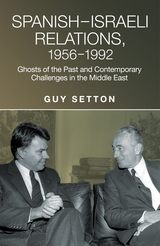 Spanish-Israeli Relations, 1956-1992: Ghosts of the Past and Contemporary Challenges in the Middle East
Guy Setton
Sussex Academic Press, 2022 Despite a common heritage dating back centuries and mutual national interests, such as their joint fear of Soviet influence across the Mediterranean, it took 38 years after the establishment of the State of Israel (1948) and a decade after Franco's death (1975) for relations to be established between Jerusalem and Madrid (1986). The absence of ties between both countries prior to 1986 was an anomaly that requires explanation. There was no apparent reason why both countries should not have established full diplomatic ties prior. Indeed, during the first years of Israeli statehood until 1952, Spain sought unsuccessfully to establish official ties with Israel as a means to overcome international isolation. But adhering to a moral foreign policy standard, Israel refused formal ties with the former Axis supporter. By 1953, however, Israel began adopting a more pragmatic view. Five centuries after the expulsion of the Jews from Spain bilateral ties were formalised after Spain's successful transition from Franco's dictatorship to democracy and Madrid's ascension to the EEC in 1986. Once in the Community, Madrid had to align its foreign policy with Brussels which necessitated diplomatic relations with Israel. Without this systematic pressure on Madrid, the anomaly of Israeli-Spanish relations would have likely continued. Post 1986 the ties between the two countries were overshadowed by strong international political forces -- the Arab-Israeli conflict and the Israeli-Palestinian struggle -- which delayed bilateral progress. Explaining the impact of these forces is key to understanding the relationship. Although many positive milestones have been reached there are substantive issues of concern for both sides, and a feeling that much work remains if the relationship, and indeed friendship, is to become worthy and rewarding.
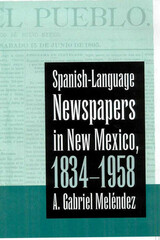 Spanish-Language Newspapers in New Mexico, 1834-1958
A. Gabriel Meléndez
University of Arizona Press, 2005 For more than a century, Mexican American journalists used their presses to voice socio-historical concerns and to represent themselves as a determinant group of communities in Nuevo México, a particularly resilient corner of the Chicano homeland. This book draws on exhaustive archival research to review the history of newspapers in these communities from the arrival of the first press in the region to publication of the last edition of Santa Fe’s El Nuevo Mexicano.
Gabriel Meléndez details the education and formation of a generation of Spanish-language journalists who were instrumental in creating a culture of print in nativo communities. He then offers in-depth cultural and literary analyses of the texts produced by los periodiqueros, establishing them thematically as precursors of the Chicano literary and political movements of the 1960s and ’70s.
Moving beyond a simple effort to reinscribe Nuevomexicanos into history, Meléndez views these newspapers as cultural productions and the work of the editors as an organized movement against cultural erasure amid the massive influx of easterners to the Southwest. Readers will find a wealth of information in this book. But more important, they will come away with the sense that the survival of Nuevomexicanos as a culturally and politically viable group is owed to the labor of this brilliant generation of newspapermen who also were statesmen, scholars, and creative writers.
 Spanish-Language Television: Cultural and Industrial Transformations
Manuel G. Avilés-Santiago and Jillian M. Báez
University of Texas Press, 2025 How Spanish-language television networks continue to thrive in a rapidly changing media landscape. The US television industry has suffered blow after blow amid media convergence and the rise of streaming. Those legacy broadcasters that survive are much diminished and highly dependent on live programming—the last redoubt of old media. There is an exception, though: Spanish-language television is thriving. Spanish-Language Television surveys the Latinx media landscape to better appreciate why Univision and Telemundo have flourished while others faltered. Manuel G. Avilés-Santiago and Jillian M. Báez show that the major Spanish-language networks are unusually flexible and open to innovation in hopes of reaching new demographics. Univision and Telemundo were early to streaming. To appeal to “billennial” audiences—bilingual millennials—who threatened to stray from TV, they rebuilt the telenovela, which now features social commentary, diverse characters, and genre crossovers. Today’s reality programs defy old norms of linguistic correctness, and the airwaves are becoming less hospitable to racism and sexism, resulting in rising ratings and ad revenues. The first book-length treatment of reception patterns in Latinx TV, Spanish-Language Television deepens our understanding of new media in a moment of transformation and possibility.
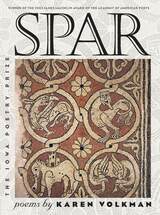 Spar
Karen Volkman
University of Iowa Press, 2002 Karen Volkman’s award-winning collection Spar has as its central form a highly compressed, musical variant of the prose poem. Volkman develops a new lyric density that marries the immediacy of image-centered poetry to the rhythmic resources of prose. Her first poem begins, “Someone was searching for a Form of Fire,” and this wild urge to seek form—and thus definition—in the most uncontainable of elements propels the book forward; each poem maps the mind’s evolving positions in response to its variable and perilous encounters. Sometimes the encounter is romantic or purely carnal, a sensual landscape of human relations. At other times, nature itself has an almost humanly emotional connection to the speaker. While very much a living voice, the poems’ speaker is not a consistent self but a mutable figure buffeted by tenderness, terror, irony, or lust into elaborate evasions, exclamations, verbal hijinks, and lyric flights. As its title suggests, Spar embodies both resistance and aspiration, while its epigraphs further emphasize the simultaneous allure and danger of the unknown within the sensual and material worlds and in the mind itself.
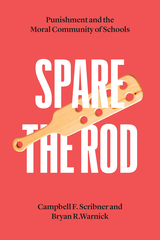 Spare the Rod: Punishment and the Moral Community of Schools
Campbell F. Scribner and Bryan R. Warnick
University of Chicago Press, 2021 Spare the Rod traces the history of discipline in schools and its ever increasing integration with prison and policing, ultimately arguing for an approach to discipline that aligns with the moral community that schools could and should be.
In Spare the Rod, historian Campbell F. Scribner and philosopher Bryan R. Warnick investigate the history and philosophy of America’s punishment and discipline practices in schools. To delve into this controversial subject, they first ask questions of meaning. How have concepts of discipline and punishment in schools changed over time? What purposes are they supposed to serve? And what can they tell us about our assumptions about education? They then explore the justifications. Are public school educators ever justified in punishing or disciplining students? Are discipline and punishment necessary for students’ moral education, or do they fundamentally have no place in education at all? If some form of punishment is justified in schools, what ethical guidelines should be followed? The authors argue that as schools have grown increasingly bureaucratic over the last century, formalizing disciplinary systems and shifting from physical punishments to forms of spatial or structural punishment such as in-school suspension, school discipline has not only come to resemble the operation of prisons or policing, but has grown increasingly integrated with those institutions. These changes and structures are responsible for the school-to-prison pipeline. They show that these shifts disregard the unique status of schools as spaces of moral growth and community oversight, and are incompatible with the developmental environment of education. What we need, they argue, is an approach to discipline and punishment that fits with the sort of moral community that schools could and should be.
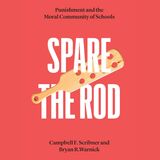 Spare the Rod: Punishment and the Moral Community of Schools
Campbell F. Scribner and Bryan R. Warnick
University of Chicago Press, 2021 This is an auto-narrated audiobook edition of this book. Spare the Rodtraces the history of discipline in schools and its ever increasing integration with prison and policing, ultimately arguing for an approach to discipline that aligns with the moral community that schools could and should be.
In Spare the Rod, historian Campbell F. Scribner and philosopher Bryan R. Warnick investigate the history and philosophy of America’s punishment and discipline practices in schools. To delve into this controversial subject, they first ask questions of meaning. How have concepts of discipline and punishment in schools changed over time? What purposes are they supposed to serve? And what can they tell us about our assumptions about education? They then explore the justifications. Are public school educators ever justified in punishing or disciplining students? Are discipline and punishment necessary for students’ moral education, or do they fundamentally have no place in education at all? If some form of punishment is justified in schools, what ethical guidelines should be followed? The authors argue that as schools have grown increasingly bureaucratic over the last century, formalizing disciplinary systems and shifting from physical punishments to forms of spatial or structural punishment such as in-school suspension, school discipline has not only come to resemble the operation of prisons or policing, but has grown increasingly integrated with those institutions. These changes and structures are responsible for the school-to-prison pipeline. They show that these shifts disregard the unique status of schools as spaces of moral growth and community oversight, and are incompatible with the developmental environment of education. What we need, they argue, is an approach to discipline and punishment that fits with the sort of moral community that schools could and should be.
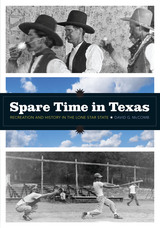 Spare Time in Texas: Recreation and History in the Lone Star State
By David G. McComb
University of Texas Press, 2008 What do Texans' pastimes and recreations say about their characters? Looking at Texas history from a new angle, David McComb starts from the premise that how people spend their leisure time may well reveal more about their true natures and interests than the work they do or their family connections. In this innovative book, McComb traces the history of various types of recreation in Texas, gathering significant insights into the characters of Texans from the pleasures they have pursued. Reflecting the frontier origins of Texas, McComb starts with the recreations that were most popular with men in a crude, still-developing society—drinking, gambling, and whoring. He goes on to show how, as Texas became more civilized, so did its diversions. He describes how Texans have connected with nature in parks and zoos; watched football and baseball in great stadiums such as the Astrodome and Cotton Bowl; discovered the pleasure of reading in public and university libraries; and enjoyed radio, TV, movies, and live theater in places such as Houston's Alley Theatre. This recreational history reveals that Texans are open-minded and generous; that they respect the land; oppose prostitution but indulge in gambling and drinking; support racial and gender rights; love zoos; champion libraries; take pride in theatrical productions; and adore sports.
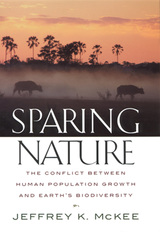 Sparing Nature: The Conflict between Human Population Growth and Earth's Biodiversity
McKee, Jeffrey K.
Rutgers University Press, 2005 Are humans too good at adapting to the earth’s natural environment? Every day, there is a net gain of more than 200,000 people on the planet—that’s 146 a minute. Has our explosive population growth led to the mass extinction of countless species in the earth’s plant and animal communities? Jeffrey K. McKee contends yes. The more people there are, the more we push aside wild plants and animals. In Sparing Nature, he explores the cause-and-effect relationship between these two trends, demonstrating that nature is too sparing to accommodate both a richly diverse living world and a rapidly expanding number of people. The author probes the past to find that humans and their ancestors have had negative impacts on species biodiversity for nearly two million years, and that extinction rates have accelerated since the origins of agriculture. Today entire ecosystems are in peril due to the relentless growth of the human population. McKee gives a guided tour of the interconnections within the living world to reveal the meaning and value of biodiversity, making the maze of technical research and scientific debates accessible to the general reader. Because it is clear that conservation cannot be left to the whims of changing human priorities, McKee takes the unabashedly neo-Malthusian position that the most effective measure to save earth’s biodiversity is to slow the growth of human populations. By conscientiously becoming more responsible about our reproductive habits and our impact on other living beings, we can ensure that nature’s services will make our lives not only supportable, but also sustainable for this century and beyond.
 Spark of Independence: The American Revolution in the Northern Colonies, 1775–1776
Michael Cecere
Westholme Publishing, 2024 The Independence Trilogy
The Independence Trilogy (Spark of Independence, United for Independence, March to Independence) seeks to answer one simple question. What happened in the thirteen colonies after bloodshed erupted at Lexington and Concord in April 1775 until independence was declared in July 1776?
For the Northern colonies, the traditional view is that they reacted as one in their opposition to Great Britain, each sending troops to Massachusetts to help form an Army of Observation that within two months of Lexington became the Continental Army. This is indeed what happened, and the events at Lexington and Concord, Bunker Hill, and the siege of Boston had a tremendous impact on each New England colony.But so too did other events that occurred in New Hampshire, Massachusetts, Rhode Island and Connecticut. Clashes with the British navy in far-away Machias, on the coast of present-day Maine, as well as in Boston Harbor, Massachusetts Bay, Buzzards Bay, Narragansett Bay, and the Long Island Sound; the destruction of Falmouth (present-day Portland, Maine), the bombardment of Stonington, Connecticut, and the threatened destruction of Portsmouth, New Hampshire, and Newport, Rhode Island, all contributed to the growing sentiment for independence that grew in New England following the outbreak of war. New Englanders, too, participated in the American effort to seize Canada in 1775 with troops under Colonel Benedict Arnold who marched through the wilderness of Maine to Quebec. New Englanders also joined General Philip Schuyler and participated in the capture of St. Jeans and Montreal. New England soldiers captured Fort Ticonderoga in New York just a few weeks after Lexington, and of course most notably, the Continental Army that besieged Boston in 1775 was comprised almost entirely of New England volunteers.
Like its companion volumes, Spark of Independence: The American Revolution in the Northern Colonies, 1775–1776 by historian Michael Cecere extensively uses primary source documents to explore both the well known and less-known clashes and events that occurred during the fifteen months between Lexington and Concord and the Declaration of Independence, and how these events contributed to the growing support across the colonies for independence from Great Britain by 1776.
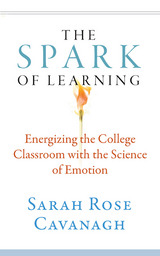 The Spark of Learning: Energizing the College Classroom with the Science of Emotion
Sarah Rose Cavanagh
West Virginia University Press, 2016 Historically we have constructed our classrooms with the assumption that learning is a dry, staid affair best conducted in quiet tones and ruled by an unemotional consideration of the facts. The field of education, however, is beginning to awaken to the potential power of emotions to fuel learning, informed by contributions from psychology and neuroscience. In friendly, readable prose, Sarah Rose Cavanagh argues that if you as an educator want to capture your students' attention, harness their working memory, bolster their long-term retention, and enhance their motivation, you should consider the emotional impact of your teaching style and course design. To make this argument, she brings to bear a wide range of evidence from the study of education, psychology, and neuroscience, and she provides practical examples of successful classroom activities from a variety of disciplines in secondary and higher education.
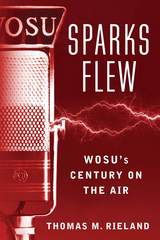 Sparks Flew: WOSU's Century on the Air
Thomas M. Rieland
Ohio State University Press, 2019 Wireless Morse code began a new age of communications, magically sending invisible waves through the ether received at some distant place. Among the first universities to experiment in this unknown world was The Ohio State University, which became one of the first educational broadcast stations and a think tank for the future of public service radio—pioneering radio audience research and serving as an innovative school of the air.
Sparks Flew is a rich story of creative, tenacious men and women working in a new medium that commercial enterprises soon dominated. At any moment in time, educational broadcasting could have failed if not for a few land-grant institutions like The Ohio State University and prominent stations like WOSU that supported the medium. Sparks Flew is the untold story, a century in the making, of one institution and one educational station that represent the roots of today’s public broadcasting system.
Sparks from the Anvil of Oppression: Philadelphia's African Methodists and Southern Migrants, 1890-1940
Robert Gregg
Temple University Press, 1998 While assuming the importance of churches within black communities, social historians generally have not studied them directly or have treated the black denominations as a single unit. Gregg focuses on the African Methodist churches and churchgoers in Philadelphia during the Great Migration and the concurrent rise of black ghettoes in the city to show the variety and richness of African American culture at that time.
 Sparks of Life: Darwinism and the Victorian Debates over Spontaneous Generation
James E. Strick
Harvard University Press, 2000 How, asks James E. Strick, could spontaneous generation--the idea that living things can suddenly arise from nonliving materials--come to take root for a time (even a brief one) in so thoroughly unsuitable a field as British natural theology? No less an authority than Aristotle claimed that cases of spontaneous generation were to be observed in nature, and the idea held sway for centuries. Beginning around the time of the Scientific Revolution, however, the doctrine was increasingly challenged; attempts to prove or disprove it led to important breakthroughs in experimental design and laboratory techniques, most notably sterilization methods, that became the cornerstones of modern microbiology and sped the ascendancy of the germ theory of disease.
The Victorian debates, Strick shows, were entwined with the public controversy over Darwin's theory of evolution. While other histories of the debates between 1860 and 1880 have focused largely on the experiments of John Tyndall, Henry Charlton Bastian, and others, Sparks of Life emphasizes previously understudied changes in the theories that underlay the debates. Strick argues that the disputes cannot be understood without full knowledge of the factional infighting among Darwinians themselves, as they struggled to create a socially and scientifically viable form of "Darwinian" science. He shows that even the terms of the debate, such as "biogenesis," usually but incorrectly attributed to Huxley, were intensely contested.
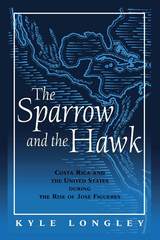 Sparrow and the Hawk: Costa Rica and the United States during the Rise of Jose Figueres
Kyle Longley
University of Alabama Press, 1997 Using Costa Rica as a example, Longley carefully examines the development of the successful relationship between a nonindustrialized country and the United States, revealing the complex forces at work in resistance and accommodation.
During World War II and the immediate postwar era, both the United States and Costa Rica experienced dramatic changes. The United States assumed world leadership and the accompanying responsibilities; Costa Rica encountered far-reaching difficulties that culminated in the Civil War of 1948 and the rise to power of José Figueres. Longley examines why the United States supported Figueres and emphasizes the history and role of Costa Ricans, primarily the figueristas, in maintaining good relations in such a difficult era. Figueres implemented economic and political nationalism, which produced domestic and international tensions, and in spite of its rejection of similar policies in Guatemala and Iran, the United States supported Figueres against domestic and foreign threats.
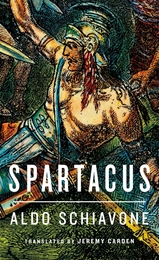 Spartacus
Aldo Schiavone
Harvard University Press, 2013 Spartacus (109?–71 BCE), the slave who rebelled against Rome, has been a source of endless fascination: the subject of myth-making in his own time, and of movie-making in ours. Hard facts about the man have always yielded to romanticized tales and mystifications. In this riveting, compact account, Aldo Schiavone rescues Spartacus from the murky regions of legend and brings him squarely into the arena of serious history.
Schiavone transports us to Italy in the first century BCE, where the pervasive institution of slavery dominates all aspects of Roman life. In this historic landscape, carefully reconstructed by the author, we encounter Spartacus, who is enslaved after deserting from the Roman army to avoid fighting against his native Thrace. Imprisoned in Capua and trained as a gladiator, he leads an uprising that will shake the empire to its foundations.
While the grandeur of the Spartacus story has always been apparent, its political significance has been less clear. What were his ambitions? Often depicted as the leader of a class rebellion that was fierce in intent but ragtag in makeup and organization, Spartacus emerges here in a very different light: the commander of an army whose aim was to incite Italy to revolt against Rome and to strike at the very heart of the imperial system. Surprising, persuasive, and highly original, Spartacus challenges the lore and illuminates the reality of a figure whose achievements, and whose ultimate defeat, are more extraordinary and moving than the fictions we make from them.
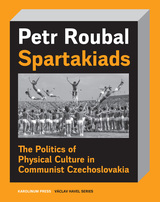 Spartakiads: The Politics of Physical Culture in Communist Czechoslovakia
Petr Roubal
Karolinum Press, 2018 Every five years from 1955 to 1985, mass Czechoslovak gymnastic demonstrations and sporting parades called Spartakiads were held to mark the 1945 liberation of Czechoslovakia. Featuring hundreds of thousands of male and female performers of all ages and held in the world’s largest stadium—a space built expressly for this purpose—the synchronized and unified movements of the Czech citizenry embodied, quite literally, the idealized Socialist people: a powerful yet pliant force directed by the regime.
In this book, Petr Roubal explores the political, social, and aesthetical dimensions of these mass physical demonstrations, with a particular focus on their roots in the völkisch nationalism of the German Turner movement and the Czech Sokol gymnastic tradition. Roubal draws on extensive interviews and archival research to investigate the many facets of this sporting tradition, from the reactions of ordinary, non-political gymnasts who appropriated and challenged official rituals to the organizational demands of the Spartakiads, such as the incredible finances involved and the knowledge and skills required from hundreds of former Sokol officials. Featuring an abundance of archival photographs, Spartakiad takes a new approach to Communist history by opening a window onto the mentality and mundanity behind the Iron Curtain.
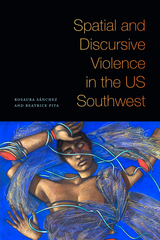 Spatial and Discursive Violence in the US Southwest
Rosaura Sánchez and Beatrice Pita
Duke University Press, 2020 In Spatial and Discursive Violence in the US Southwest Rosaura Sánchez and Beatrice Pita examine literary representations of settler colonial land enclosure and dispossession in the history of New Mexico, Texas, and Oklahoma. Sánchez and Pita analyze a range of Chicano/a and Native American novels, films, short stories, and other cultural artifacts from the eighteenth century to the present, showing how Chicano/a works often celebrate an idealized colonial Spanish past as a way to counter stereotypes of Mexican and Indigenous racial and ethnic inferiority. As they demonstrate, these texts often erase the participation of Spanish and Mexican settlers in the dispossession of Indigenous lands. Foregrounding the relationship between literature and settler colonialism, they consider how literary representations of land are manipulated and redefined in ways that point to the changing practices of dispossession. In so doing, Sánchez and Pita prompt critics to reconsider the role of settler colonialism in the deep history of the United States and how spatial and discursive violence are always correlated.
 Spatial Literacy in Public Health: Faculty-Librarian Teaching Collaborations
Laureen P. Cantwell-Jurkovic
Association of College & Research Libraries, 2024 Spatial literacy—the ability to visualize, understand, and use the properties of space to communicate, reason, and problem-solve—is relevant across a wealth of disciplines. Spatial Literacy in Public Health: Faculty-Librarian Teaching Collaborations offers ideas and plans for collaborative spatial literacy teaching and learning initiatives focusing on geographic information systems (GIS)-based and GIS-related instruction through the lens of public health topics.
Chapters include step-by-step learning activities, teaching tips, recommended readings, and four-color maps as well as other useful illustrations—these not only support student learning, but also professional development for librarians interested in spatial literacy instruction and in pitching such instruction to potential faculty collaborators. Interdisciplinary topics include supply chain management, social media campaigns, data visualization, racial disparities, and other demographic themes related to immunization patterns, epidemiology, recreation access, and community health and environmental health/environmental science.
Spatial Literacy in Public Health offers specific plans for collaborative, interdisciplinary spatial literacy instruction and activities. Chapters also connect with supplementary content in the ACRL Framework for Information Literacy Sandbox (https://sandbox.acrl.org), including activity-focused slide decks and more, all findable with the tag “#SpatialLit” and freely available. Learning activities support open-source tools, open educational resources (OER), and other institutional cost-saving initiatives, and the ability to adapt from in-person to virtual instruction settings.
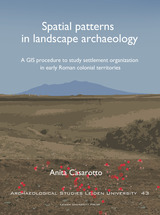 Spatial Patterns in Landscape Archaeology: A GIS Procedure to Study Settlement Organization in Early Roman Colonial Territories
Anita Casarotto
Leiden University Press, 2018 This 43rd volume of the ASLU series presents a useful GIS procedure to study settlement patterns in landscape archaeology. In several Mediterranean regions, archaeological sites have been mapped by fieldwalking surveys, producing large amounts of data. These legacy site-based survey data represent an important resource to study ancient settlement organization. Methodological procedures are necessary to cope with the limits of these data, and more importantly with the distortions on data patterns caused by biasing factors.
This book develops and applies a GIS procedure to use legacy survey data in settlement pattern analysis. It consists of two parts. One part regards the assessment of biases that can affect the spatial patterns exhibited by survey data. The other part aims to shed light on the location preferences and settlement strategy of ancient communities underlying site patterns. In this book, a case-study shows how the method works in practice. As part of the research by the Landscapes of Early Roman Colonization project (NWO, Leiden University, KNIR) site-based datasets produced by survey projects in central-southern Italy are examined in a comparative framework to investigate settlement patterns in the early Roman colonial period (3rd century B.C.).
 Spatial Prepositions: A Case Study from French
Claude Vandeloise
University of Chicago Press, 1991 This striking study of the meaning and use of the major spatial prepositions in French provides valuable insight into how the human mind organizes spatial relationships.
Most previous analyses of spatial prepositions have assumed that their semantic properties can be adequately explained by familiar logical and geometrical concepts. Thus, the standard view of the preposition "in" as it appears in the sentence "the ball is in the bag" postulates that it refers to the geometrical relation of inclusion. This paradigm, however, falters when faced with the contrast in acceptability between sentences such as "the bulb is in the socket" and "the bottle is in the cap." The force exerted by the "landmark" (a conceptually fixed object) on the "target" (a moveable object) is crucial in this difference: the functional notion of containment seems more operational in the use of the preposition "in" than inclusion. That is, what are taken to be the landmark and the target depend greatly on the functions these objects serve in the human scheme. This offers important clues to otherwise problematic linguistic quirks, such as why one sleeps in one's bed, while one is said to lie on one's deathbed.
While many of the examples apply in English as well as French, there are some noteworthy differences—in French one sits on a chair, but in a couch. Vandeloise convincingly argues that it is precisely this subjective element which makes a standard geometrical account unfeasible.
 Spatial Theories for the Americas
Fernando Luiz Lara
University of Pittsburgh Press, 2024 To study the built environment of the Americas is to wrestle with an inherent contradiction. While the disciplines of architecture, urban design, landscape, and planning share the fundamental belief that space and place matter, the overwhelming majority of canonical knowledge and the vernacular used to describe these disciplines comes from another, very different, continent. With this book, Fernando Luiz Lara discusses several theories of space—drawing on cartography, geography, anthropology, and mostly architecture—and proposes counterweights to five centuries of Eurocentrism. The first part of Spatial Theories for the Americas offers a critique of Eurocentrism in the discipline of architecture, problematizing its theoretical foundation in relation to the inseparability of modernization and colonization. The second part makes explicit the insufficiencies of a hegemonic Western tradition at the core of spatial theories by discussing a long list of authors who have thought about the Americas. To overcome centuries of Eurocentrism, Lara concludes, will require a tremendous effort, but, nonetheless, we have the responsibility of looking at the built environment of the Americas through our own lenses. Spatial Theories for the Americas proposes a fundamental step in that direction.
Spatialities: The Geographies of Art and Architecture
Edited by Judith Rugg and Craig Martin
Intellect Books, 2012 Spatialities: The Geographies of Art and Architecture draws on a distinguished panel of artists, cultural theorists, architects, and geographers to offer a nuanced conceptual framework for understanding the ever-evolving spatial orderings that materially constitute our world. With chapters covering a wide range of topics, including the interstitial, the liminal and the relational processes of networks, accumulations, and assemblage as possibilities for spatial reflection, this volume shows space to be less a defining category and more an abstract terrain whose boundaries may be continually probed and contested.
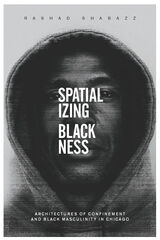 Spatializing Blackness: Architectures of Confinement and Black Masculinity in Chicago
Rashad Shabazz
University of Illinois Press, 2015 Over 277,000 African Americans migrated to Chicago between 1900 and 1940, an influx unsurpassed in any other northern city. From the start, carceral powers literally and figuratively created a prison-like environment to contain these African Americans within the so-called Black Belt on the city's South Side. A geographic study of race and gender, Spatializing Blackness casts light upon the ubiquitous--and ordinary--ways carceral power functions in places where African Americans live. Moving from the kitchenette to the prison cell, and mining forgotten facts from sources as diverse as maps and memoirs, Rashad Shabazz explores the myriad architectures of confinement, policing, surveillance, urban planning, and incarceration. In particular, he investigates how the ongoing carceral effort oriented and imbued black male bodies and gender performance from the Progressive Era to the present. The result is an essential interdisciplinary study that highlights the racialization of space, the role of containment in subordinating African Americans, the politics of mobility under conditions of alleged freedom, and the ways black men cope with--and resist--spacial containment. A timely response to the massive upswing in carceral forms within society, Spatializing Blackness examines how these mechanisms came to exist, why society aimed them against African Americans, and the consequences for black communities and black masculinity both historically and today.
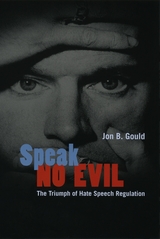 Speak No Evil: The Triumph of Hate Speech Regulation
Jon B. Gould
University of Chicago Press, 2005 Opponents of speech codes often argue that liberal academics use the codes to advance an agenda of political correctness. But Jon B. Gould's provocative book, based on an enormous amount of empirical evidence, reveals that the real reasons for their growth are to be found in the pragmatic, almost utilitarian, considerations of college administrators. Instituting hate speech policy, he shows, was often a symbolic response taken by university leaders to reassure campus constituencies of their commitment against intolerance. In an academic version of "keeping up with the Joneses," some schools created hate speech codes to remain within what they saw as the mainstream of higher education. Only a relatively small number of colleges crafted codes out of deep commitment to their merits.
Although college speech codes have been overturned by the courts, Speak No Evil argues that their rise has still had a profound influence on curtailing speech in other institutions such as the media and has also shaped mass opinion and common understandings of constitutional norms. Ultimately, Gould contends, this kind of informal law can have just as much power as the Constitution.
Speak Peace: Words of Wisdom, Work, and Wonder
Lynette Ford
Parkhurst Brothers, Inc., 2019 The authors and contributors—educators, storytellers, and peacemakers—discuss what each of us can do to promote a more peaceful community, country, and world.
Speak to Me!
Marcia Forecki
Gallaudet University Press, 1985 Marcia Calhoun Forecki has written an engrossing, personal account of her life with Charlie, an adorable, active, deaf seven-year-old. Speak to Me! is the story of an ordinary hearing person confronted with an overwhelming reality—the fact that her son is deaf. Forecki’s struggle as a single parent to care for her child, to find the “right” schools, and to establish communication with her son will strike a familiar chord in all hearing parents of deaf children. All readers, parents or not, will be touched by the mixture of pathos and humor in this well-written account.
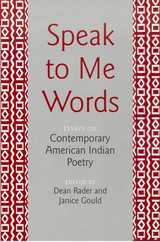 Speak to Me Words: Essays on Contemporary American Indian Poetry
Edited by Dean Rader and Janice Gould
University of Arizona Press, 2003 Although American Indian poetry is widely read and discussed, few resources have been available that focus on it critically. This book is the first collection of essays on the genre, bringing poetry out from under the shadow of fiction in the study of Native American literature. Speak to Me Words is a stimulating blend of classic articles and original pieces that reflect the energy of modern American Indian literary studies. Highlighting various aspects of poetry written by American Indians since the 1960s, it is a wide-ranging collection that balances the insights of Natives and non-Natives, men and women, old and new voices. Included here are such landmark articles as "Answering the Deer" by Paula Gunn Allen, "Herbs of Healing" by Carter Revard, and "Song, Poetry and Language—Expression and Perception" by Simon Ortiz—all pieces that have shaped how we think about Native poetry. Among the contributions appearing for the first time are Elaine Jahner writing on Paula Gunn Allen's use of formal structures; Robert Nelson addressing pan-Indian tropes of emergence, survival, return, and renewal; and Janet McAdams focusing on Carter Revard's "angled mirrors." Although many Native writers may disregard distinctions between genres, together these writings help readers see the difference between American Indian poetry and other forms of Native literature. These essays are as broad, encompassing, and provocative as Native poetry itself, branching off from and weaving back into one another. In showing how American Indian poetry redefines our social order and articulates how Indian communities think about themselves, these writers establish a new foundation for the study—and enjoyment—of this vital art.
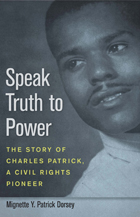 Speak Truth to Power: The Story of Charles Patrick, a Civil Rights Pioneer
Mignette Y. Patrick Dorsey
University of Alabama Press, 2010 On December 11, 1954, Charles Patrick drove to downtown Birmingham to buy a Boy Scout uniform for his son. Christmas traffic around the downtown department stores was heavy, and Patrick circled unsuccessfully until at last a streetside spot opened up and he began to pull in. As he did so, he was cut off by a woman who ordered him out of the way, as she was the wife of a city police officer. Patrick pulled away, remarking, “Ma’am, he doesn’t own the streets of Birmingham.” Normal low-level urban hassle? Not in 1954 Birmingham, when the woman was white and Patrick black. The woman reported to her husband that a black man had sassed her, and Patrick was summarily arrested, charged with disorderly conduct, and placed in a cell where he was beaten by the husband and another police officer. Usually that would have been the end of it, but Patrick was not the sort of man to meekly endure an injustice. He found an attorney, went to court to fight the charges, and brought his assailants to justice--as whites, blacks, politicians and the press offered public support. This book tells the story of Patrick’s quest for justice in segregated Alabama on the eve of the civil rights movement and represents a telling instance of the growing determination of African Americans to be treated fairly, part of the broadening and deepening stream of resolve that led to the widespread activism of the civil rights movement.
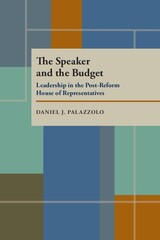 The Speaker and the Budget: Leadership in the Post-Reform House of Representatives
Daniel J. Palazzolo
University of Pittsburgh Press, 1992
One of the most important changes in Congress in decades were the extensive congressional reforms of the 1970s, which moved the congressional budget process into the focus of congressional policy making and shifted decision making away from committees. This overwhelming attention to the federal budget allowed party leaders to emerge as central decision makers.
Palazzolo traces the changing nature of the Speaker of the House's role in the congressional budget process from the passage of the Budget and Impoundment Control Act of 1974, through the 100th Congress in 1988. As the deficit grew and budget politics became more partisan in the 1980s, the Speaker became more involved in policy-related functions, such as setting budget priorities and negotiating budget agreements with Senate leaders and the president. Consequently, the Speaker's role as leader of the institution was subordinated to his role as a party leader.
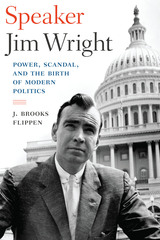 Speaker Jim Wright: Power, Scandal, and the Birth of Modern Politics
By J. Brooks Flippen
University of Texas Press, 2018 Honorable Mention, Ramirez Family Award for Most Significant Scholarly Book, Texas Institute of Letters, 2019 Jim Wright made his mark on virtually every major public policy issue in the later twentieth century—energy, education, taxes, transportation, environmental protection, civil rights, criminal justice, and foreign relations, among them. He played a significant role in peace initiatives in Central America and in the Camp David Accords, and he was the first American politician to speak live on Soviet television. A Democrat representing Texas’s twelfth district (Fort Worth), Wright served in the US House of Representatives from the Eisenhower administration to the presidency of George H. W. Bush, including twelve years (1977–1989) as majority leader and speaker. His long congressional ascension and sudden fall in a highly partisan ethics scandal spearheaded by Newt Gingrich mirrored the evolution of Congress as an institution. Speaker Jim Wright traces the congressman’s long life and career in a highly readable narrative grounded in extensive interviews with Wright and access to his personal diaries. A skilled connector who bridged the conservative and liberal wings of the Democratic party while forging alliances with Republicans to pass legislation, Wright ultimately fell victim to a new era of political infighting, as well as to his own hubris and mistakes. J. Brooks Flippen shows how Wright’s career shaped the political culture of Congress, from its internal rules and power structure to its growing partisanship, even as those new dynamics eventually contributed to his political demise. To understand Jim Wright in all his complexity is to understand the story of modern American politics.
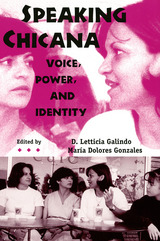 Speaking Chicana: Voice, Power, and Identity
D. Letticia Galindo
University of Arizona Press, 1999 Previous studies in the fields of applied linguistics, sociolinguistics, and gender studies have focused upon Chicano linguistic communities as a monolith or have focused entirely upon male-centered aspects of language use, leaving a tremendous gap in works about Chicanas, for Chicanas, and by Chicanas as they pertain to language-related issues. Speaking Chicana bridges that gap, offering for the first time an extensive examination of language issues among Chicanas. Flowing throughout this collection of essays are themes of empowerment and suppression of voice. Combining empirical studies and personal narratives in the form of testimonios, the editors expand the boundaries of linguistic study to include disciplines such as art, law, women's studies, and literature. The result is a multifaceted approach to the study of Chicana speech—one that provides a significant survey of the literature on Chicanas and language production. Ten contributors—from linguistic to lawyer, from poet to art historian—discuss language varieties and attitudes; bilinguality; codeswitching; cultural identity and language; language in literature and art; taboo language; and legal discourse. Speaking Chicana celebrates the complexity and diversity of linguistic contexts and influences reflected in Chicana speech. Various essays explore the speech of rural women; the evolution of linguistic forces over time; the influence of U.S. public education; linguistic dilemmas encountered by literary authors and women in the legal profession; and language used by pachucas and pintas.Speaking Chicana represents a significant contribution, not only to sociolinguistics, but also to other fields, including women's studies, Chicana/o studies, anthropology, and cultural studies. Contents
Part 1. Reconstruction: Language Varieties, Language Use, and Language Attitudes
1. Crossing Social and Cultural Borders: The Road to Language Hybridity, María Dolores Gonzales
2. Fighting Words: Latina Girls, Gangs, and Language Attitudes, Norma Mendoza-Denton
Part 2. Reflection: Testimonios
3. Speaking as a Chicana: Tracing Cultural Heritage through Silence and Betrayal, Jacqueline M. Martínez
4. The Power of Language: From the Back of the Bus to the Ivory Tower, Christine Marín
5. Challenging Tradition: Opening the Headgate, Ida M. Luján
6. Mexican Blood Runs through My Veins, Aurora E. Orozco
Part 3. Innovation: Speaking Creatively/Creatively Speaking
7. Searching for a Voice: Ambiguities and Possibilities, Erlinda Gonzales-Berry
8. Sacred Cults, Subversive Icons: Chicanas and the Pictorial Language of Catholicism, Charlene Villaseñor Black
9. Caló and Taboo Language Use among Chicanas: A Description of Linguistic Appropriation and Innovation, D. Letticia Galindo
10. Máscaras, Trenzas, y Greñas: Un/Masking the Self While Un/Braiding Latina Stories and Legal Discourse, Margaret E. Montoya
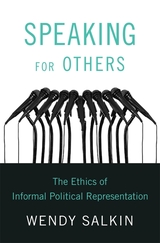 Speaking for Others: The Ethics of Informal Political Representation
Wendy Salkin
Harvard University Press, 2024 A political philosopher dissects the duties and dilemmas of the unelected spokesperson, from Martin Luther King, Jr., to Greta Thunberg.
Political representation is typically assumed to be the purview of formal institutions and elected officials. But many of the people who represent us are not senators or city councilors—think of Martin Luther King, Jr., or Malala Yousafzai or even a neighbor who speaks up at a school board meeting. Informal political representatives are in fact ubiquitous, often powerful, and some bear enormous responsibility. In Speaking for Others, political philosopher Wendy Salkin develops the first systematic conceptual and moral analysis of informal political representation.
Salkin argues that informal representation can be a political lifeline, particularly for oppressed and marginalized groups that are denied representation in formal political institutions. Yet informal political representatives exert outsized influence over the ways these groups’ interests are understood by the public, without the represented having much recourse to hold them accountable. And many informal political representatives are selected not by the groups they represent but by outsiders, sticking these groups with representatives they would not choose but cannot shake. The role of informal political representatives is therefore fraught with moral questions. What exactly are their duties and to whom are they owed? Should they be members of the groups they represent? When is informal representation permissible and when is it best avoided?
Informal political representation is taking place all around us. In fact, you yourself may be an informal political representative without knowing it. Speaking for Others explores the tensions central to this pervasive yet underexamined practice, bringing light to both its perils and its promise.
 Speaking for the Dying: Life-and-Death Decisions in Intensive Care
Susan P. Shapiro
University of Chicago Press, 2019 Seven in ten Americans over the age of age of sixty who require medical decisions in the final days of their life lack the capacity to make them. For many of us, our biggest, life-and-death decisions—literally—will therefore be made by someone else. They will decide whether we live or die; between long life and quality of life; whether we receive heroic interventions in our final hours; and whether we die in a hospital or at home. They will determine whether our wishes are honored and choose between fidelity to our interests and what is best for themselves or others. Yet despite their critical role, we know remarkably little about how our loved ones decide for us.
Speaking for the Dying tells their story, drawing on daily observations over more than two years in two intensive care units in a diverse urban hospital. From bedsides, hallways, and conference rooms, you will hear, in their own words, how physicians really talk to families and how they respond. You will see how decision makers are selected, the interventions they weigh in on, the information they seek and evaluate, the values and memories they draw on, the criteria they weigh, the outcomes they choose, the conflicts they become embroiled in, and the challenges they face. Observations also provide insight into why some decision makers authorize one aggressive intervention after the next while others do not—even on behalf of patients with similar problems and prospects. And they expose the limited role of advance directives in structuring the process decision makers follow or the outcomes that result.
Research has consistently found that choosing life or death for another is one of the most difficult decisions anyone can face, sometimes haunting families for decades. This book shines a bright light on a role few of us will escape and offers steps that patients and loved ones, health care providers, lawyers, and policymakers could undertake before it is too late.
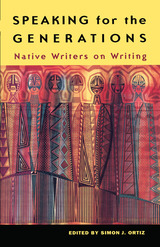 Speaking for the Generations: Native Writers on Writing
Edited by Simon J. Ortiz
University of Arizona Press, 1997 Now it is my turn to stand. At Acoma Pueblo meetings, members rise and announce their intention to speak. In that moment they are recognized and heard. In Speaking for the Generations, Acoma Pueblo poet Simon Ortiz brings together contemporary Native American writers to take their turn. Each offers an evocation of herself or himself, describing the personal, social, and cultural influences on her or his development as a writer. Although each writer's viewpoint is personal and unique, together they reflect the rich tapestry of today's Native literature.
Of varied backgrounds, the writers represent Indian heritages and cultures from the Pacific Northwest to the northern plains, from Canada to Guatemala. They are poets, novelists, and playwrights. And although their backgrounds are different and their statements intensely personal, they share common themes of their relationship to the land, to their ancestors, and to future generations of their people. From Gloria Bird's powerful recounting of personal and family history to Esther Belin's vibrant tale of her urban Native homeland in Los Angeles, these writers reveal the importance of place and politics in their lives. Leslie Marmon Silko calls upon the ancient tradition of Native American storytelling and its role in connecting the people to the land. Roberta J. Hill and Elizabeth Woody ponder some of the absurdities of contemporary Native life, while Guatemalan Victor Montejo takes readers to the Mayan world, where a native culture had writing and books long before Europeans came.
Together these pieces offer an inspiring portrait of what it means to be a Native writer in the twentieth century. With passion and urgency, these writers are speaking for themselves, for their land, and for the generations.
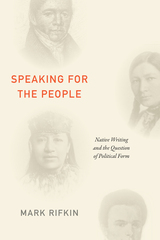 Speaking for the People: Native Writing and the Question of Political Form
Mark Rifkin
Duke University Press, 2021 In Speaking for the People Mark Rifkin examines nineteenth-century Native writings to reframe contemporary debates around Indigenous recognition, refusal, and resurgence. Rifkin shows how works by Native authors (William Apess, Elias Boudinot, Sarah Winnemucca, and Zitkala-Ša) illustrate the intellectual labor involved in representing modes of Indigenous political identity and placemaking. These writers highlight the complex processes involved in negotiating the character, contours, and scope of Indigenous sovereignties under ongoing colonial occupation. Rifkin argues that attending to these writers' engagements with non-native publics helps provide further analytical tools for addressing the complexities of Indigenous governance on the ground—both then and now. Thinking about Native peoplehood and politics as a matter of form opens possibilities for addressing the difficult work involved in navigating among varied possibilities for conceptualizing and enacting peoplehood in the context of continuing settler intervention. As Rifkin demonstrates, attending to writings by these Indigenous intellectuals provides ways of understanding Native governance as a matter of deliberation, discussion, and debate, emphasizing the open-ended unfinishedness of self-determination.
 Speaking for the River: Confronting Pollution on the Willamette, 1920s-1970s
James V. Hillegas-Elting
Oregon State University Press, 2018 Since the late 1960s, Oregon has been at the forefront of environmental protection in the United States. The state generally, and Portland in particular, continue to have strong “green” credentials well into the twenty-first century. Within this forty year period of progress, however, the health of the Willamette River has been a consistent blot on the record. Willamette River water pollution has not gone away—the problem has, in fact, gotten much more complex. James Hillegas-Elting’s book, Speaking for the River, provides a historical look at this dilemma.
Willamette River cleanup efforts between 1926 and 1975 centered on a struggle between abatement advocates and the two primary polluters in the watershed, the City of Portland and the pulp and paper industry. Beginning in 1926, clean streams advocates created ad hoc groups of public health experts, sanitary engineers, conservationists, sportsmen, and others to pressure Portland officials and industry representatives to cease polluting the river. By the late 1960s, these grassroots initiatives found political footholds at the state level. As governor between 1967 and 1975, Tom McCall took the issue of environmental protection personally, providing the charisma and leadership that was needed to finally make substantive progress toward cleaning the Willamette.
Speaking for the River is the first book to describe the historical roots of Willamette River pollution, providing important context for understanding the political, fiscal, and technological antecedents to the present-day conundrum. Hillegas-Elting’s contribution to the academic literature on environmental and urban history in Oregon will be welcomed by policy makers, environmentalists, and concerned citizens alike.
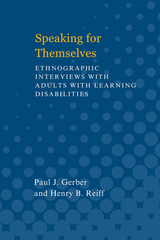 Speaking for Themselves
Paul J. Gerber and Henry B. Reiff
University of Michigan Press, 1991 Speaking for Themselves: Ethnographic Interviews with Adults with Learning Disabilities by Paul J. Gerber and Henry B. Reiff investigates the personal and academic experiences of adults diagnosed with learning disabilities. Taking an ethnographic approach, the authors present in-depth interviews with nine adults, aged 22 to 56, exploring how their learning disabilities affect various aspects of their lives, such as education, vocational achievement, social and emotional adjustment, and daily living skills. The study categorizes subjects into three groups based on educational and vocational achievements: high, moderate, and marginal adjustment to adulthood. Through personal narratives, the book reveals the nuances of struggle and success in this often-overlooked adult demographic, offering valuable insights for researchers, educators, and policymakers. Particularly, it emphasizes the need for a better understanding of the challenges and needs faced by adults with learning disabilities, while calling for the expansion of personalized and effective support systems beyond childhood and adolescence into adult life. The findings highlight a significant variance in experiences, illustrating that the degree of success in adulthood often correlates with educational attainment and the ability to compensate for learning challenges. This research asserts the importance of inclusive practices and further studies to continue improving the quality of life and support for adults with learning disabilities.
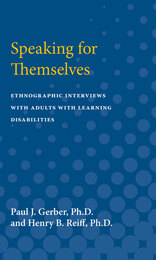 Speaking for Themselves: Ethnographic Interviews with Adults with Learning Disabilities
Paul J. Gerber, Ph.D. and Henry B. Reiff, Ph.D.
University of Michigan Press, 1991 Speaking for Themselves: Ethnographic Interviews with Adults with Learning Disabilities by Paul J. Gerber and Henry B. Reiff investigates the personal and academic experiences of adults diagnosed with learning disabilities. Taking an ethnographic approach, the authors present in-depth interviews with nine adults, aged 22 to 56, exploring how their learning disabilities affect various aspects of their lives, such as education, vocational achievement, social and emotional adjustment, and daily living skills. The study categorizes subjects into three groups based on educational and vocational achievements: high, moderate, and marginal adjustment to adulthood. Through personal narratives, the book reveals the nuances of struggle and success in this often-overlooked adult demographic, offering valuable insights for researchers, educators, and policymakers. Particularly, it emphasizes the need for a better understanding of the challenges and needs faced by adults with learning disabilities, while calling for the expansion of personalized and effective support systems beyond childhood and adolescence into adult life. The findings highlight a significant variance in experiences, illustrating that the degree of success in adulthood often correlates with educational attainment and the ability to compensate for learning challenges. This research asserts the importance of inclusive practices and further studies to continue improving the quality of life and support for adults with learning disabilities.
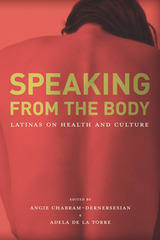 Speaking from the Body: Latinas on Health and Culture
Edited by Angie Chabram-Dernersesian and Adela de la Torre
University of Arizona Press, 2008 In compelling first-person accounts, Latinas speak freely about dealing with serious health episodes as patients, family caregivers, or friends. They show how the complex interweaving of gender, class, and race impacts the health status of Latinas—and how family, spirituality, and culture affect the experience of illness.
Here are stories of Latinas living with conditions common to many: hypertension, breast cancer, obesity, diabetes, depression, osteoarthritis, rheumatoid arthritis, dementia, Parkinson’s, lupus, and hyper/hypothyroidism. By bringing these narratives out from the shadows of private lives, they demonstrate how such ailments form part of the larger whole of Latina lives that encompasses family, community, the medical profession, and society. They show how personal identity and community intersect to affect the interpretation of illness, compliance with treatment, and the utilization of allopathic medicine, alternative therapies, and traditional healing practices. The book also includes a retrospective analysis of the narratives and a discussion of Latina health issues and policy recommendations.
These Latina cultural narratives illustrate important aspects of the social contexts and real-world family relationships crucial to understanding illness. Speaking from the Body is a trailblazing collection of personal testimonies that integrates professional and personal perspectives and shows that our understanding of health remains incomplete if Latina cultural narratives are not included.
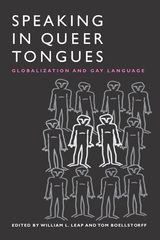 Speaking in Queer Tongues: GLOBALIZATION AND GAY LANGUAGE
Edited by William L. Leap and Tom Boellstorff
University of Illinois Press, 2003 Language is a fundamental tool for shaping identity and community, including the expression (or repression) of sexual desire. Speaking in Queer Tongues investigates the tensions and adaptations that occur when processes of globalization bring one system of gay or lesbian language into contact with another.
Western constructions of gay culture are now circulating widely beyond the boundaries of Western nations due to influences as diverse as Internet communication, global dissemination of entertainment and other media, increased travel and tourism, migration, displacement, and transnational citizenship. The authority claimed by these constructions, and by the linguistic codes embedded in them, is causing them to have a profound impact on public and private expressions of homosexuality in locations as diverse as sub-Saharan Africa, New Zealand, Indonesia and Israel.
Examining a wide range of global cultures, Speaking in Queer Tongues presents essays on topics that include old versus new sexual vocabularies, the rhetoric of gay-oriented magazines and news media, verbal and nonverbalized sexual imagery in poetry and popular culture, and the linguistic consequences of the globalized gay rights movement.
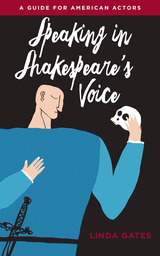 Speaking in Shakespeare's Voice: A Guide for American Actors
Linda Gates
Northwestern University Press, 2019 Speaking in Shakespeare's Voice: A Guide for American Actors is a book for undergraduate and graduate students of acting as well as for the professional who would like to perform Shakespeare with the skill of a classical actor. It is also valuable for European actors interested in performing Shakespeare in American English and British actors who would like to explore Shakespeare from an American perspective.
This guide focuses on the technical elements of voice and speech, including breathing, resonance, and diction, as well as providing an introduction to verse speaking and scansion and to Shakespeare’s rhetorical devices, such as antithesis, alliteration, onomatopoeia, irony, metaphor, and wordplay. These topics are annotated with examples from Shakespeare’s plays to demonstrate how an actor can apply the lessons to actual performance. The book also explores the history of Shakespearean performance in the United States and provides guidance on current editions of Shakespeare’s text from the Folio to online Open Source Shakespeare. A helpful appendix offers examples of two-person scenes and contextualized monologues.
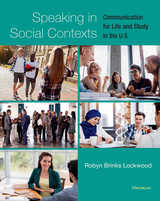 Speaking in Social Contexts: Communication for Life and Study in the U.S.
Robyn Brinks Lockwood
University of Michigan Press, 2018 This text was written for students who want to live, study, and/or work in an English-speaking setting or are already doing so. Its goal is to help students survive interactional English in a variety of social, academic, and professional settings—for example, how to make small talk with recruiters at a job fair or when invited to dinner at their advisor’s house.
The text provides language to use for a variety of functions as they might related to life on a university campus: offering greetings and goodbyes, making introductions, giving opinions, agreeing and disagreeing, using the phone, offering assistance, asking for advice, accepting and declining invitations, giving and receiving compliments, complaining, giving congratulations, expressing condolences, and making small talk. Users are also taught to think beyond the words and to interpret intonation and stress (how things sound).
Each of the 10 units includes discussion prompts, language lessons, practice activities, get acquainted tasks (interacting with native speakers), and analysis opportunities (what did they discover and what can they apply?).
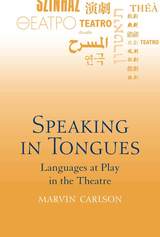 Speaking in Tongues: Languages at Play in the Theatre
Marvin Carlson
University of Michigan Press, 2010 Speaking in Tongues presents a unique account of how language has been employed in the theatre, not simply as a means of communication but also as a stylistic and formal device, and for a number of cultural and political operations. The use of multiple languages in the contemporary theatre is in part a reflection of a more globalized culture, but it also calls attention to how the mixing of language has always been an important part of the functioning of theatre.
The book begins by investigating various "levels" of language-high and low style, prose and poetry-and the ways in which these have been used historically to mark social positions and relationships. It next considers some of the political and historical implications of dialogue theatre, as well as theatre that literally employs several languages, from classical Greek examples to the postmodern era. Carlson treats with special attention the theatre of the postcolonial world, and especially the triangulation of the local language, the national language, and the colonial language, drawing on examples of theatre in the Caribbean, Africa, Australia, and New Zealand. Finally, Carlson considers the layering of languages in the theatre, such as the use of supertitles or simultaneous signing.
Speaking in Tongues draws important social and political conclusions about the role of language in cultural power, making a vital contribution to the fields of theatre and performance.
Marvin Carlson is Sidney E. Cohn Professor of Theatre and Comparative Literature, CUNY Graduate Center. He is author of Performance: A Critical Introduction; Theories of the Theatre: A Historical and Critical Survey, from the Greeks to the Present; and The Haunted Stage: The Theatre as Memory Machine, among many other books.
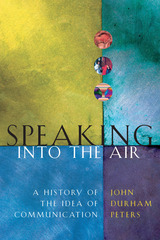 Speaking into the Air: A History of the Idea of Communication
John Durham Peters
University of Chicago Press, 1999 Communication plays a vital and unique role in society-often blamed for problems when it breaks down and at the same time heralded as a panacea for human relations. A sweeping history of communication, Speaking Into the Air illuminates our expectations of communication as both historically specific and a fundamental knot in Western thought.
"This is a most interesting and thought-provoking book. . . . Peters maintains that communication is ultimately unthinkable apart from the task of establishing a kingdom in which people can live together peacefully. Given our condition as mortals, communication remains not primarily a problem of technology, but of power, ethics and art." —Antony Anderson, New Scientist
"Guaranteed to alter your thinking about communication. . . . Original, erudite, and beautifully written, this book is a gem." —Kirkus Reviews
"Peters writes to reclaim the notion of authenticity in a media-saturated world. It's this ultimate concern that renders his book a brave, colorful exploration of the hydra-headed problems presented by a rapid-fire popular culture." —Publishers Weekly
What we have here is a failure-to-communicate book. Funny thing is, it communicates beautifully. . . . Speaking Into the Air delivers what superb serious books always do-hours of intellectual challenge as one absorbs the gradually unfolding vision of an erudite, creative author." —Carlin Romano, Philadelphia Inquirer
Speaking: (La Parole)
Georges Gusdorf
Northwestern University Press, 1965 Speaking is an introduction to the philosophy of language from an existential and phenomenological point of view. Gusdorf's central concern is to analyze speech within the context of human reality. Speech is an abstraction, but speaking is not, he says. Speaking expresses the experimental and dialectical relation of man, nature, and society. It is through speaking that nature is sublimated into the meant and expressive world of human reality.
Speaking Mexicano: Dynamics of Syncretic Language in Central Mexico
Jane H. Hill and Kenneth C. Hill
University of Arizona Press, 1986 The Hills confront far more than what is 'sayable' in terms of Mexicano grammar; they deal with what is actually said, with the relationship between Spanish and Mexicano as resources in the community's linguistic repertoire. . . . One of the major studies of language contact produced within the past forty years.—Language
"The genius of this work is the integration of the linguistic analysis with the cultural and political analysis."—Latin American Anthropology Review
Speaking of Abortion: Television and Authority in the Lives of Women
Andrea L. Press and Elizabeth R. Cole
University of Chicago Press, 1999 Over four years, Andrea Press and Elizabeth Cole watched television with women, visiting city houses, suburban subdivisions, modern condominiums, and public housing projects. They found that television depicts abortion as a problem for the poor and the working classes, and that viewers invariably referred to and abided by class when discussing abortion. Speaking of Abortion is an invaluable resource that allows us to hear how ordinary women discuss one of America's most volatile issues.
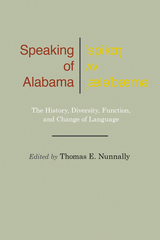 Speaking of Alabama: The History, Diversity, Function, and Change of Language
Edited by Thomas E. Nunnally
University of Alabama Press, 2019 Informative and entertaining essays on the accents, dialects, and speech patterns particular to Alabama
Thomas E. Nunnally’s fascinating volume presents essays by linguists who examine with affection and curiosity the speech varieties occurring both past and present across Alabama. Taken together, the accounts in this volume offer an engaging view of the major features that characterize Alabama’s unique brand of southern English.
Written in an accessible manner for general readers and scholars alike, Speaking of Alabama includes such subjects as the special linguistic features of the Southern drawl, the “phonetic divide” between north and south Alabama, “code-switching” by African American speakers in Alabama, pejorative attitudes by Alabama speakers toward their own native speech, the influence of foreign languages on Alabama speech to the vibrant history and continuing influence of non-English languages in the state, as well as ongoing changes in Alabama’s dialects.
Adding to these studies is a foreword by Walt Wolfram and an afterword by Michael B. Montgomery, both renowned experts in southern English, which place both the methodologies and the findings of the volume into their larger contexts and point researchers to needed work ahead in Alabama, the South, and beyond. The volume also contains a number of useful appendices, including a guide to the sounds of Southern English, a glossary of linguistic terms, and online sources for further study.
Language, as presented in this collection, is never abstract but always examined in the context of its speakers’ day-to-day lives, the driving force for their communication needs and choices. Whether specialist or general reader, Alabamian or non-Alabamian, all readers will come away from these accounts with a deepened understanding of how language functions between individuals, within communities, and across regions, and will gain a new respect for the driving forces behind language variation and language change.
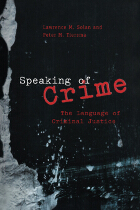 Speaking of Crime: The Language of Criminal Justice
Lawrence M. Solan and Peter M. Tiersma
University of Chicago Press, 2004 Why do so many people voluntarily consent to searches by have the police search their person or vehicle when they know that they are carrying contraband or evidence of illegal activity? Does everyone understand the Miranda warning? How well can people recognize a voice on tape? Can linguistic experts identify who wrote an anonymous threatening letter?
Speaking of Crime answers these questions and examines the complex role of language within our criminal justice system. Lawrence M. Solan and Peter M. Tiersma compile numerous cases, ranging from the Lindbergh kidnapping to the impeachment trial of Bill Clinton to the JonBenét Ramsey case, that provide real-life examples of how language functions in arrests, investigations, interrogations, confessions, and trials. In a clear and accessible style, Solan and Tiersma show how recent advances in the study of language can aid in understanding how legal problems arise and how they might be solved.
With compelling discussions current issues and controversies, this book is a provocative state-of-the-art survey that will be of enormous value to legal scholars and professionals throughout the criminal justice system.
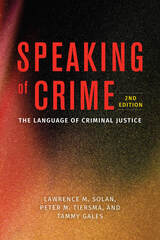 Speaking of Crime: The Language of Criminal Justice
Lawrence M. Solan, Peter M. Tiersma, and Tammy Gales
University of Chicago Press, 2025 An essential introduction to the use and misuse of language within the criminal justice system, updated for a new generation. Does everyone understand the Miranda warning? Why do people confess to a crime they did not commit? Can linguistic experts identify who wrote an anonymous threatening letter? Since its first publication, Speaking of Crime has been answering these questions. Introducing major topics and controversies at the intersection of language and law, Lawrence M. Solan, Peter M. Tiersma, and Tammy Gales apply multidisciplinary insights to examine the complex role of language within the US justice system. The second edition features in-depth discussions of recent cases, new legislation, and innovative research advances, and includes a new chapter on who interprets the laws governing linguistic contexts. Thoroughly updated and approachable, Speaking of Crime is a state-of-the-art survey that will be useful to scholars, students, and practitioners throughout the criminal justice system.
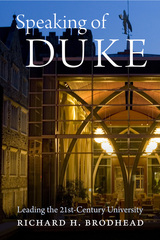 Speaking of Duke: Leading the Twenty-First-Century University
Richard H. Brodhead
Duke University Press, 2017 Over the course of his thirteen years as president of Duke University, Richard H. Brodhead spoke at numerous university ceremonies, community forums, and faculty meetings, and even appeared on The Colbert Report. Speaking of Duke collects dozens of these speeches, in which Brodhead speaks both to the special character and history of Duke University and to the general state of higher education.
In these essays, Brodhead shows a university thinking its way forward through challenges all institutes of higher education have faced in the twenty-first century, including an expanding global horizon, an economic downturn that has left a diminished sense of opportunity and a shaken faith in the value of liberal arts education, and pressure to think more deeply about issues of equity and inclusion. His audiences range from newly arrived freshmen and new graduates—both facing uncertainty about how to build their future lives—to seasoned faculty members. On other occasions, he makes the case to the general public for the enduring importance of the humanities.
What results is a portrait of Duke University in its modern chapter and the social and political climate that it shapes and is shaped by. While these speeches were given on official occasions, they are not impersonal official pronouncements; they are often quite personal and written with grace, humor, and an unwavering belief in the power of education to shape a changing world for the better.
Brodhead notes that it is an underappreciated fact that a great deal of the exercise of power by a university leader is done through speaking: by articulating the aspirations of the school and the reasons for its choices, and by voicing the shared sense of mission that gives a learning community its reality. Speaking of Duke accomplishes each of those and demonstrates Brodhead's conviction that higher education is more valuable now than ever.
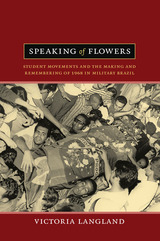 Speaking of Flowers: Student Movements and the Making and Remembering of 1968 in Military Brazil
Victoria Langland
Duke University Press, 2013 Speaking of Flowers is an innovative study of student activism during Brazil's military dictatorship (1964–85) and an examination of the very notion of student activism, which changed dramatically in response to the student protests of 1968. Looking into what made students engage in national political affairs as students, rather than through other means, Victoria Langland traces a gradual, uneven shift in how they constructed, defended, and redefined their right to political participation, from emphasizing class, race, and gender privileges to organizing around other institutional and symbolic forms of political authority. Embodying Cold War political and gendered tensions, Brazil's increasingly violent military government mounted fierce challenges to student political activity just as students were beginning to see themselves as representing an otherwise demobilized civil society. By challenging the students' political legitimacy at a pivotal moment, the dictatorship helped to ignite the student protests that exploded in 1968. In her attentive exploration of the years after 1968, Langland analyzes what the demonstrations of that year meant to later generations of Brazilian students, revealing how student activists mobilized collective memories in their subsequent political struggles.
 Speaking of Furniture: Conversations with 14 American Masters
Warren Eames Johnson
The Artist Book Foundation, 2013 Speaking of Furniture: Conversations with 14 American Masters is a fresh, stimulating, and in-depth examination of the modus operandi of 14 accomplished—and diverse—furniture makers. An engaging history of studio furniture, this colorful, informative study includes engaging conversations with James Krenov, Wendell Castle, Jere Osgood, Judy Kensley McKie, David Ebner, Richard Scott Newman, Hank Gilpin, Alphonse Mattia, John Dunnigan, Wendy Maruyama, James Schriber, Timothy S. Philbrick, Michael Hurwitz, and Thomas Hucker. The insightful interviews illuminate how these creative and gifted craftspeople arrived professionally and what their craft means to them individually.
In his enlightening foreword, Edward S. Cooke, Jr. maps out the background of the studio furniture movement. Author and furnituremaker Roger Holmes offers an insider’s perspective on the art and craft of producing exquisite contemporary furniture in his conversational introduction and maintains, “Art or craft, this is very personal work.” This elegant presentation skillfully sheds light on the thought processes and techniques of a celebrated and exceptional gathering of studio furniture makers who are as unique as they are stellar. As sculptor and furniture designer Wendell Castle remarks, “What I admired was that . . . fine art and craft were the same thing.”
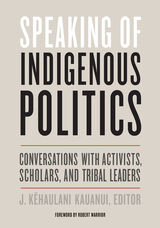 Speaking of Indigenous Politics: Conversations with Activists, Scholars, and Tribal Leaders
J. Kehaulani Kauanui
University of Minnesota Press, 2018 “A lesson in how to practice recognizing the fundamental truth that every inch of the Americas is Indigenous territory” —Robert Warrior, from the Foreword
Many people learn about Indigenous politics only through the most controversial and confrontational news: the Standing Rock Sioux Tribe’s efforts to block the Dakota Access Pipeline, for instance, or the battle to protect Bears Ears National Monument in Utah, a site sacred to Native peoples. But most Indigenous activism remains unseen in the mainstream—and so, of course, does its significance. J. Kēhaulani Kauanui set out to change that with her radio program Indigenous Politics. Issue by issue, she interviewed people who talked candidly and in an engaging way about how settler colonialism depends on erasing Native peoples and about how Native peoples can and do resist. Collected here, these conversations speak with clear and compelling voices about a range of Indigenous politics that shape everyday life. Land desecration, treaty rights, political status, cultural revitalization: these are among the themes taken up by a broad cross-section of interviewees from across the United States and from Canada, Mexico, Chile, Bolivia, Peru, Australia, and New Zealand. Some speak from the thick of political action, some from a historical perspective, others from the reaches of Indigenous culture near and far. Writers, like Comanche Paul Chaat Smith, author of Everything You Know about Indians Is Wrong, expand on their work—about gaming and sovereignty, for example, or protecting Native graves, the reclamation of land, or the erasure of Indian identity. These conversations both inform and engage at a moment when their messages could not be more urgent. Contributors: Jessie Little Doe Baird (Mashpee Wampanoag), Omar Barghouti, Lisa Brooks (Abenaki), Kathleen A. Brown-Pérez (Brothertown Indian Nation), Margaret “Marge” Bruchac (Abenaki), Jessica Cattelino, David Cornsilk (Cherokee Nation), Sarah Deer (Muskogee Creek Nation), Philip J. Deloria (Dakota), Tonya Gonnella Frichner (Onondaga Nation), Hone Harawira (Ngapuhi Nui Tonu), Suzan Shown Harjo (Cheyenne and Hodulgee Muscogee), Rashid Khalidi, Winona LaDuke (White Earth Ojibwe), Maria LaHood, James Luna (Luiseño), Aileen Moreton-Robinson (Quandamooka), Chief Mutáwi Mutáhash (Many Hearts) Marilynn “Lynn” Malerba (Mohegan), Steven Newcomb (Shawnee/Lenape), Jean M. O’Brien (White Earth Ojibwe), Jonathan Kamakawiwo‘ole Osorio (Kanaka Maoli), Steven Salaita, Paul Chaat Smith (Comanche), Circe Sturm (Mississippi Choctaw descendant), Margo Taméz (Lipan Apache), Chief Richard Velky (Schaghticoke), Patrick Wolfe.
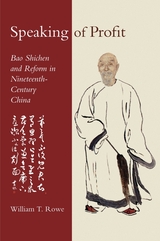 Speaking of Profit: Bao Shichen and Reform in Nineteenth-Century China
William T. Rowe
Harvard University Press In the first half of the nineteenth century the Qing Empire faced a crisis. It was broadly perceived both inside and outside of government that the “prosperous age” of the eighteenth century was over. Bureaucratic corruption and malaise, population pressure and food shortages, ecological and infrastructural decay, domestic and frontier rebellion, adverse balances of trade, and, eventually, a previously inconceivable foreign threat from the West seemed to present hopelessly daunting challenges.
This study uses the literati reformer Bao Shichen as a prism to understand contemporary perceptions of and proposed solutions to this general crisis. Though Bao only briefly and inconsequentially served in office himself, he was widely recognized as an expert on each of these matters, and his advice was regularly sought by reform-minded administrators. From examination of his thought on bureaucratic and fiscal restructuring, agricultural improvement, the grain tribute administration, the salt monopoly, monetary policy, and foreign relations, Bao emerges as a consistent advocate of the hard-nosed pursuit of material “profit,” in the interests not only of the rural populace but also of the Chinese state and nation, anticipating the arguments of “self-strengthening” reformers later in the century.
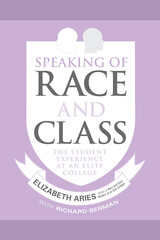 Speaking of Race and Class: The Student Experience at an Elite College
Elizabeth Aries
Temple University Press, 2012 In Speaking of Race and Class, the follow-up volume to her groundbreaking Race and Class Matters at an Elite College, Elizabeth Aries completes her four-year study of diversity at a prestigious liberal arts college. Here, the 58 students—affluent, lower-income, black, and white—that Aries has interviewed since they were Amherst freshmen provide a complete picture of what and how each group learned about issues of race and class. Aries presents the students’ personal perceptions of their experiences. She reveals the extent to which learning from diversity takes place on campus, and examines the distinct challenges that arise for students living in this heterogeneous community. Aries also looks more broadly at how colleges and universities across the country are addressing the challenges surrounding diversity. Speaking of Race and Class testifies to the programming and practices that have proven successful.
 Speaking of Sex: The Denial of Gender Inequality
Deborah L. Rhode
Harvard University Press, 1997 Speaking of Sex explores a topic that too often drops out of our discussions when we speak about sex: the persistent problem of sex-based inequality and the cultural forces that sustain it. On critical issues affecting women, most Americans deny either that gender inequality is a serious problem or that it is one that they have a personal or political responsibility to address. In tracing this “no problem” problem, Speaking of Sex examines the most fundamental causes of women’s disadvantages and the inadequacy of current public policy to combat them.
Although in the past quarter-century the United States has made major progress in addressing gender discrimination, women still face substantial obstacles in their private, public, and professional lives. On every significant measure of wealth, power, status, and security, women remain less advantaged than men. Deborah Rhode reveals the ways that the culture denies, discounts, or attempts to justify those inequalities. She shows that only by making inequality more visible can we devise an adequate strategy to confront it.
Speaking of Sex examines patterns of gender inequality across a wide array of social, legal, and public policy settings. Challenging conventional biological explanations for gender differences, Rhode explores the media images and childrearing practices that reinforce traditional gender stereotypes. On policies involving employment, divorce, custody, rape, pornography, domestic violence, sexual harassment, and reproductive choice, Speaking of Sex reveals how we continually overlook the gap between legal rights and daily experience. All too often, even Americans who condemn gender inequality in principle cannot see it in practice—in their own lives, homes, and work environments. In tracing these patterns, Rhode uncovers the deeply ingrained assumptions that obscure and perpetuate women’s disadvantages.
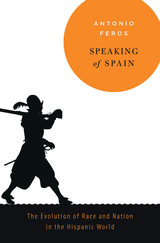 Speaking of Spain: The Evolution of Race and Nation in the Hispanic World
Antonio Feros
Harvard University Press, 2017 Momentous changes swept Spain in the fifteenth century. A royal marriage united Castile and Aragon, its two largest kingdoms. The last Muslim emirate on the Iberian Peninsula fell to Spanish Catholic armies. And conquests in the Americas were turning Spain into a great empire. Yet few in this period of flourishing Spanish power could define “Spain” concretely, or say with any confidence who were Spaniards and who were not. Speaking of Spain offers an analysis of the cultural and political forces that transformed Spain’s diverse peoples and polities into a unified nation.
Antonio Feros traces evolving ideas of Spanish nationhood and Spanishness in the discourses of educated elites, who debated whether the union of Spain’s kingdoms created a single fatherland (patria) or whether Spain remained a dynastic monarchy comprised of separate nations. If a unified Spain was emerging, was it a pluralistic nation, or did “Spain” represent the imposition of the dominant Castilian culture over the rest? The presence of large communities of individuals with Muslim and Jewish ancestors and the colonization of the New World brought issues of race to the fore as well. A nascent civic concept of Spanish identity clashed with a racialist understanding that Spaniards were necessarily of pure blood and “white,” unlike converted Jews and Muslims, Amerindians, and Africans.
Gradually Spaniards settled the most intractable of these disputes. By the time the liberal Constitution of Cádiz (1812) was ratified, consensus held that almost all people born in Spain’s territories, whatever their ethnicity, were Spanish.
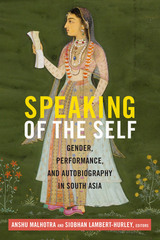 Speaking of the Self: Gender, Performance, and Autobiography in South Asia
Anshu Malhotra and Siobhan Lambert-Hurley, editors
Duke University Press, 2015 Many consider the autobiography to be a Western genre that represents the self as fully autonomous. The contributors to Speaking of the Self challenge this presumption by examining a wide range of women's autobiographical writing from South Asia. Expanding the definition of what kinds of writing can be considered autobiographical, the contributors analyze everything from poetry, songs, mystical experiences, and diaries to prose, fiction, architecture, and religious treatises. The authors they study are just as diverse: a Mughal princess, an eighteenth-century courtesan from Hyderabad, a nineteenth-century Muslim prostitute in Punjab, a housewife in colonial Bengal, a Muslim Gandhian devotee of Krishna, several female Indian and Pakistani novelists, and two male actors who worked as female impersonators. The contributors find that in these autobiographies the authors construct their gendered selves in relational terms. Throughout, they show how autobiographical writing—in whatever form it takes—provides the means toward more fully understanding the historical, social, and cultural milieu in which the author performs herself and creates her subjectivity.
Contributors: Asiya Alam, Afshan Bokhari, Uma Chakravarti, Kathryn Hansen, Siobhan Lambert-Hurley, Anshu Malhotra, Ritu Menon, Shubhra Ray, Shweta Sachdeva Jha, Sylvia Vatuk
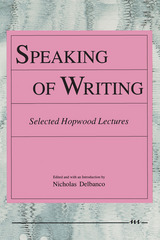 Speaking of Writing: Selected Hopwood Lectures
Nicholas Delbanco, Editor
University of Michigan Press, 1990 Essays on the art and craft of writing by some of the nation’s finest writers make up this rich collection, from Louise Bogan’s meditation on popular and unpopular poetry, to Saul Bellow’s assessment of the future of fiction, to Francie du Plessix Gray’s reflection on womenand Russian literature. Spanning five decades of writing, the essays address topics both timely and timeless in nature, and cover both the process and the product of writing.
These essays were originally presented at the Hopwood Lecture series at the University of Michigan in conjunction with the annual awarding of the Hopwood Prizes in creative writing. The internationally recognized awards are granted by the bequest of playwright Avery Hopwood (1884-1928), who sought to encourage student work in the fields of dramatic writing, fiction, poetry, and the essay. The essays speak to the apprentice writer, finding their focus in a twinned discussion of the craft of prose and the art of poetry. The authors share an assumption that literature matters, and vitally, to the culture it reports on and sustains.
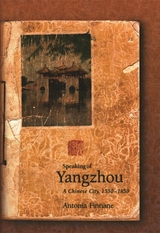 Speaking of Yangzhou: A Chinese City, 1550–1850
Antonia Finnane
Harvard University Press, 2004 The early-twentieth-century essayist Zhu Ziqing once wrote that he had only to mention the name of his hometown of Yangzhou to someone in Beijing and the person would respond, “A fine place! A fine place!” Yangzhou was indeed one of the great cities of late imperial China, and its name carries rich historical and cultural resonances. Even today Yangzhou continues to evoke images of artists, men of letters, great merchant families, scenic waterways, an urban environment of considerable grace and charm, and a history imbued with color and romance.
This book is in some ways a biography of a city that acquired a personality, even a gender, and became an actor in its own history. Yangzhou invites attention because its place in China’s cultural iconography tells us not only of one city’s vicissitudes and fortunes but also of changes in the geography of the Chinese imagination. The author examines the city’s place in the history of the late imperial era and of the meanings that accrued to Yangzhou over time. She argues that the actual construction of the city—its academies of learning, its philanthropic institutions, its gardens, its teahouses, and its brothels—underpinned the construction of a certain idea of Yangzhou.
 Speaking Our Selves: New Plays by African Women
Asiimwe Deborah Kawe and Robert H. Vorlicky, Editors
University of Michigan Press, 2025 Speaking Our Selves brings together eight remarkable plays by women writers from the under-represented African countries of Tanzania, Mozambique, Ethiopia, Mali, Burundi, Benin, and Sudan, plus a play by award-winning Ugandan playwright and volume coeditor Asiimwe Kawe. Four of the plays are translated into English from Kiswahili, French, or Kirundi and French, while most of the plays preserve African indigenous languages, including Runyankore, Lusoga, Mina, Fon, Bambara, Luganda, Kiswahili, and Kirundi. Although the plays are united in presenting women as central figures who own their voices, they also represent a rich diversity of story-telling. Each unique dramaturgy is rooted in African forms of story-telling that occasionally merge with recognizable Western forms to create hybrid, dramatic forms. These hybrid methods emphasize the striking ways in which African women writers continue to experiment with form, moving beyond Western-influenced dramaturgy if and when it jeopardizes their authentic ways of artistic expression and creation through language, movement, and music, centered in African Cosmology.
The plays within Speaking Our Selves confront a range of ideas and issues, including women embracing the potential of agency in often contested subject positions; confronting their historical object positions in worlds of devastating patriarchal authority; resisting toxic masculinity and persistent, oppressive binaries of gender roles; finding power in communities of women; increasing their acumen in financial, business, and economic spheres; facing tensions between traditional religious tenets and efforts toward secularization; living with perpetual acts of violence toward their bodies; and the rising mental health issues among girls and women across the continent. Readers and audiences are challenged by these plays not to be passive witnesses by observing from safe vantage points, but rather to be active participants in the stories being told.
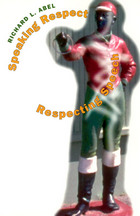 Speaking Respect, Respecting Speech
Richard L. Abel
University of Chicago Press, 1998 The feminist campaign against pornography, the furor over a racial epithet in the O. J. Simpson trial, and Iran's continuing threat to kill Salman Rushdie exemplify the intense passions aroused by hurtful speech. Richard Abel offers an original framework for understanding and attempting to resolve these pervasive and intractable conflicts. Drawing on sociological theories of symbolic politics, he views such confrontations as struggles for respect among status categories defined by nationality, religion, race, gender, sexual orientation, and physical difference. Abel convincingly exposes the inadequacies of the conventional responses to speech: absolutist civil libertarianism and enthusiastic state regulation. Instead, he argues, only apologies exchanged within the communities that construct collective identities can readjust social standing damaged by hurtful words and images. In recasting the problem in terms of equalizing cultural capital, Abel opens a new pathway through the wrongs and rights of speech.
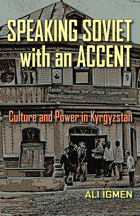 Speaking Soviet with an Accent: Culture and Power in Kyrgyzstan
Ali Igmen
University of Pittsburgh Press, 2012 Speaking Soviet with an Accent presents the first English-language study of Soviet culture clubs in Kyrgyzstan. These clubs profoundly influenced the future of Kyrgyz cultural identity and fostered the work of many artists, such as famed novelist Chingiz Aitmatov.
Based on extensive oral history and archival research, Ali Igmen follows the rise of culture clubs beginning in the 1920s, when they were established to inculcate Soviet ideology and create a sedentary lifestyle among the historically nomadic Kyrgyz people. These “Red clubs” are fondly remembered by locals as one of the few places where lively activities and socialization with other members of their ail (village or tribal unit) could be found.
Through lectures, readings, books, plays, concerts, operas, visual arts, and cultural Olympiads, locals were exposed to Soviet notions of modernization. But these programs also encouraged the creation of a newfound “Kyrgyzness” that preserved aspects of local traditions and celebrated the achievements of Kyrgyz citizens in the building of a new state. These ideals proved appealing to many Kyrgyz, who, for centuries, had seen riches and power in the hands of a few tribal chieftains and Russian imperialists.
This book offers new insights into the formation of modern cultural identity in Central Asia. Here, like their imperial predecessors, the Soviets sought to extend their physical borders and political influence. But Igmen also reveals the remarkable agency of the Kyrgyz people, who employed available resources to meld their own heritage with Soviet and Russian ideologies and form artistic expressions that continue to influence Kyrgyzstan today.
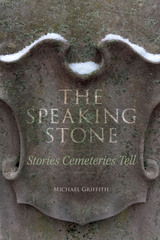 The Speaking Stone: Stories Cemeteries Tell
Michael Griffith
Ohio University Press, 2021 Published by the University of Cincinnati Press The Speaking Stone: Stories Cemeteries Tell is a literary love letter to the joys of wandering graveyards. While working on a novel, author and longtime Cincinnati resident Michael Griffith starts visiting Spring Grove Cemetery and Arboretum, the nation’s third-largest cemetery. Soon he’s taking almost daily jaunts, following curiosity and accident wherever they lead. The result is this fascinating collection of essays that emerge from chance encounters with an interesting headstone, odd epitaph, unusual name, or quirk of memory. Researching obituaries, newspaper clippings, and family legacies, Griffith uncovers stories of race, feminism, art, and death. Rather than sticking to the cemetery’s most famous, or infamous, graves, Griffith stays true to the principle of ramble and incidental discovery. The result is an eclectic group of subjects, ranging from well-known figures like the feminist icon and freethinker Fanny Wright to those much less celebrated— a spiritual medium, a temperance advocate, a young heiress who died under mysterious circumstances. Nearly ninety photos add dimension and often an element of playfulness. The Speaking Stone examines what endures and what does not, reflecting on the vanity and poignancy of our attempt to leave monuments that last. In doing so, it beautifully weaves connections born out of the storyteller’s inquisitive mind.
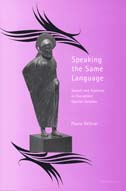 Speaking the Same Language: Speech and Audience in Thucydides' Spartan Debates
Paula Debnar
University of Michigan Press, 2002 The Peloponnesian War, which destroyed imperial Athens and ultimately Sparta as well, continues to fascinate students of history, politics, and human nature. Thucydides' account of the twenty-seven-year conflict charts the opposition between the two great powers of the classical Greek world and the ways of life they represented. Paula Debnar explores the collapse of these powers from a new perspective, examining the ways discourse changed under the strain of a long and costly war.
Speaking the Same Language seeks to recover the role played by the audiences within the History. By restoring the internal audiences to a more prominent place, Debnar emphasizes the perspective of the participants in the war and heightens the dramatic immediacy of the debates. She thoroughly analyzes twelve speeches delivered by or to the Spartans, demonstrating how the earlier speeches illustrate the role of discourse in the construction of Sparta's identity and the unification of her Dorian allies in the face of their primarily Ionian adversaries.
Combining close textual analysis with an examination of narrative and historical context, Debnar bridges the gap between literary and historical studies of Thucydides. Accessible to specialists and nonspecialists alike, her work will interest those working in the fields of Greek literature, ancient historiography, rhetoric, political science, and ethnic studies.
Paula Debnar is Associate Professor of Classics, Mount Holyoke College.
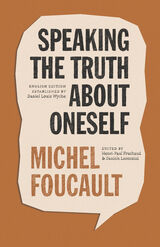 Speaking the Truth about Oneself: Lectures at Victoria University, Toronto, 1982
Michel Foucault
University of Chicago Press, 2021 Now in paperback, this collection of Foucault’s lectures traces the historical formation and contemporary significance of the hermeneutics of the self.
Just before the summer of 1982, French philosopher Michel Foucault gave a series of lectures at Victoria University in Toronto. In these lectures, which were part of his project of writing a genealogy of the modern subject, he is concerned with the care and cultivation of the self, a theme that becomes central to the second, third, and fourth volumes of his History of Sexuality. Foucault had always been interested in the question of how constellations of knowledge and power produce and shape subjects, and in the last phase of his life, he became especially interested not only in how subjects are formed by these forces but in how they ethically constitute themselves.
In this lecture series and accompanying seminar, Foucault focuses on antiquity, starting with classical Greece, the early Roman empire, and concluding with Christian monasticism in the fourth and fifth centuries AD. Foucault traces the development of a new kind of verbal practice—“speaking the truth about oneself”—in which the subject increasingly comes to be defined by its inner thoughts and desires. He deemed this new form of “hermeneutical” subjectivity important not just for historical reasons, but also due to its enduring significance in modern society.
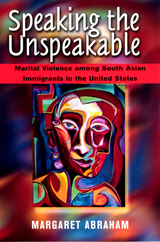 Speaking the Unspeakable: Marital Violence among South Asian Immigrants in the United States
Abraham, Margaret
Rutgers University Press, 2000 Over the past 20 years, much work has focused on domestic violence, yet little attention has been paid to the causes, manifestations, and resolutions to marital violence among ethnic minorities, especially recent immigrants. Margaret Abraham’s Speaking the Unspeakable is the first book to focus on South Asian women’s experiences of domestic violence, defined by the author as physical, sexual, verbal, mental, or economic coercion, power, or control perpetrated on a woman by her spouse or extended kin. Abraham explains how immigration issues, cultural assumptions, and unfamiliarity with American social, legal, economic, and other institutional systems, coupled with stereotyping, make these women especially vulnerable to domestic violence. Abraham lets readers hear the voices of abused South Asian women. Through their stories, we learn of their weaknesses and strengths, and of their experiences of domestic violence within the larger cultural, social, economic, and political context. We see both the individual strategies of resistance against their abusers as well as the pivotal role South Asian organizations play in helping these women escape abusive relationships. Abraham also describes the central role played by South Asian activism as it emerged in the 1980s in the United States, and addresses the ideas and practices both within and outside of the South Asian community that stereotype, discriminate, and oppress South Asians in their everyday lives.
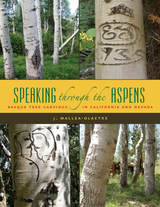 Speaking Through the Aspens: Basque Tree Carvings in California and Nevada
J. Mallea-Olaetxe
University of Nevada Press, 2008 Speaking Through the Aspens analyzes the content of thousands of arboglyphs in the mountains of Nevada and California by topic—language, politics, the Basque homeland, the sheepherd’s life, sex, and pictorial themes. In addition, author Mallea-Olaetxe has examined such sheepherder artifacts as sheep camps and bread ovens, conducted extensive interviews with former herders and sheep company personnel, and undertaken research in immigration and other records. The result is a highly original work of history—a detailed account of the lives of Basque sheepherders in the American West. For the first time, these men who contributed so much to the development of the region, many of whom went on to establish the West’s thriving Basque community, speak for themselves about their experiences. Enhanced by numerous illustrations, this book is history at its most engrossing, essential reading for scholars and anyone curious about the arboglyph phenomenon.
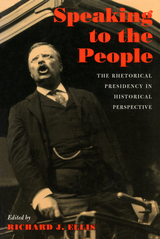 Speaking to the People: The Rhetorical Presidency in Historical Perspective
Richard Ellis
University of Massachusetts Press, 1998 Americans today expect their president to speak directly to them on the issues of the day—to address their concerns, to ask for their support, even to feel their pain. Yet, as the essays in this volume make clear, this was not always the case. During the early years of the republic, such behavior would have been deemed beneath the president's office, undignified at best, demagogic at worst. How, then, did the practice of "speaking to the people" evolve from the icy reserve of George Washington to the effusive empathy of Bill Clinton? This book explores how the "rhetorical presidency" became a central feature of American politics. Beginning with a fresh look at the framing of the Constitution, the essays examine the role of rhetoric in a variety of nineteenth-century presidencies, as well as in the crucial turn-of-the-century presidencies of William McKinley, Theodore Roosevelt, and Woodrow Wilson. Viewed against this historical backdrop, the "modern" presidencies of Franklin Roosevelt and his successors appear less a break with the past than a culmination of developments in popular leadership and rhetorical practice that began more than a century before.
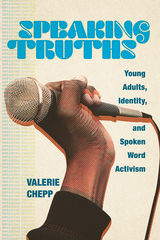 Speaking Truths: Young Adults, Identity, and Spoken Word Activism
Valerie Chepp
Rutgers University Press, 2022 The twenty-first century is already riddled with protests demanding social justice, and in every instance, young people are leading the charge. But in addition to protesters who take to the streets with handmade placards are young adults who engage in less obvious change-making tactics. In Speaking Truths, sociologist Valerie Chepp goes behind-the-scenes to uncover how spoken word poetry—and young people’s participation in it—contributes to a broader understanding of contemporary social justice activism, including this generation’s attention to the political importance of identity, well-being, and love.
Drawing upon detailed observations and in-depth interviews, Chepp tells the story of a diverse group of young adults from Washington, D.C. who use spoken word to create a more just and equitable world. Outlining the contours of this approach, she interrogates spoken word activism’s emphasis on personal storytelling and “truth,” the strategic uses of aesthetics and emotions to politically engage across difference, and the significance of healing in sustainable movements for change. Weaving together their poetry and personally told stories, Chepp shows how poets tap into the beautiful, emotional, personal, and therapeutic features of spoken word to empathically connect with others, advance intersectional and systemic analyses of inequality, and make social justice messages relatable across a diverse public. By creating allies and forging connections based on friendship, professional commitments, lived experiences, emotions, artistic kinship, and political views, this activist approach is highly integrated into the everyday lives of its practitioners, online and face-to-face.
Chepp argues that spoken word activism is a product of, and a call to action against, the neoliberal era in which poets have come of age, characterized by widening structural inequalities and increasing economic and social vulnerability. She illustrates how this deeply personal and intimate activist approach borrows from, builds upon, and diverges from previous social movement paradigms. Spotlighting the complexity and mutual influence of modern-day activism and the world in which it unfolds, Speaking Truths contributes to our understanding of contemporary social change-making and how neoliberalism has shaped this political generation’s experiences with social injustice.
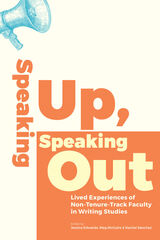 Speaking Up, Speaking Out: Lived Experiences of Non-Tenure-Track Faculty in Writing Studies
Jessica Edwards
Utah State University Press, 2020 Speaking Up, Speaking Out addresses the lived experiences of those working in the non-tenure-track faculty (NTTF) trenches through storytelling and reflection. By connecting NTTF voices from various aspects of writing studies, the collection offers fresh perspectives and meaningful contributions, imagining the possibilities for contingent faculty to be valued and honored in educational systems that often do the opposite. Challenging traditional ways of seeing NTTF, the work contains multiple entry points to NTT life: those with and without “terminal degrees,” those with PhDs, and those who have held or currently hold tenured positions.
Each chapter suggests tangible ways that writing departments and supporters can be more thoughtful about their policies and practices as they work to create more equitable spaces for NTTF. Speaking Up, Speaking Out considers the rhetorical power of labeling and asserts why contingent faculty, for far too long, have been compared to and against TT faculty and often encouraged to reach the same or similar productivity with scholarship, teaching, and service that TT faculty produce. The myopic ideas about what is valued and whose position is deemed more important impacts contingent faculty in ways that, as contributors in this collection share, effect and affect faculty productivity, emotional health, and overall community involvement.
Contributors: Norah Ashe-McNalley, Sarah Austin, Rachel Azima, Megan Boeshart Burelle, Peter Brooks, Denise Comer, Jessica Cory, Liz Gumm, Brendan Hawkins, Heather Jordan, Nathalie Joseph, Julie Karaus, Christopher Lee, John McHone, Angie McKinnon Carter, Dauvan Mulally, Seth Myers, Liliana M. Naydan, Linda Shelton, Erica Stone, Elizabeth Vincelette, Lacey Wootton
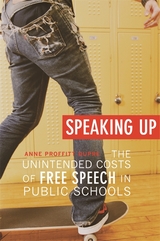 Speaking Up: The Unintended Costs of Free Speech in Public Schools
Anne Proffitt Dupre
Harvard University Press, 2010 Just how much freedom of speech should high school students have? Does giving children and adolescents a far-reaching right of expression, without joining it to responsibility, ultimately result in an asylum that is run by its inmates?
Since the late 1960s, the United States Supreme Court has struggled to clarify the contours of constitutionally guaranteed freedom of speech rights for students. But as this thought-provoking book contends, these court opinions have pitted students—and their litigious parents—against schools while undermining the schools’ necessary disciplinary authority.
In a clear and lively style, sprinkled with wry humor, Anne Proffitt Dupre examines the way courts have wrestled with student expression in school. These fascinating cases deal with political protest, speech codes, student newspapers, book banning in school libraries, and the long-standing struggle over school prayer. Dupre also devotes an entire chapter to teacher speech rights. In the final chapter on the 2007 “Bong Hits 4 Jesus” case, she asks what many people probably wondered: when the Supreme Court gave teenagers the right to wear black armbands in school to protest the Vietnam War, just how far does this right go? Did the Court also give students who just wanted to provoke their principal the right to post signs advocating drug use?
Each chapter is full of insight into famous decisions and the inner workings of the courts. Speaking Up offers eye-opening history for students, teachers, lawyers, and parents seeking to understand how the law attempts to balance order and freedom in schools.
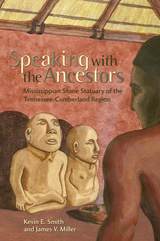 Speaking with the Ancestors: Mississippian Stone Statuary of the Tennessee-Cumberland Region
Kevin E. Smith and James V. Miller
University of Alabama Press, 2008 When European explorers began their initial forays into southeastern North America in the 16th and 17th centuries they encountered what they called temples and shrines of native peoples, often decorated with idols in human form made of wood, pottery, or stone. The idols were fascinating to write about, but having no value to explorers searching for gold or land, there are no records of these idols being transported to the Old World, and mention of them seems to cease about the 1700s. However, with the settling of the fledgling United States in the 1800s, farming colonists began to unearth stone images in human form from land formerly inhabited by the native peoples. With little access to the records of the 16th and 17th centuries, debate and speculation abounded by the public and scholars alike concerning their origin and meaning. During the last twenty years the authors have researched over 88 possible examples of southeastern Mississippian stone statuary, dating as far back as 1,000 years ago, and discovered along the river valleys of the interior Southeast. Independently and in conjunction, they have measured, analyzed, photographed, and traced the known history of the 42 that appear in this volume. Compiling the data from both early documents and public and private collections, the authors remind us that the statuary should not be viewed in isolation, but rather as regional expressions of a much broader body of art, ritual, and belief.
 Speaking Yiddish to Chickens: Holocaust Survivors on South Jersey Poultry Farms
Seth Stern
Rutgers University Press, 2023 NJSAA McCormick Prize / Scholarly Category Winner (2024) Most of the roughly 140,000 Holocaust survivors who came to the United States in the first decade after World War II settled in big cities such as New York. But a few thousand chose an alternative way of life on American farms. More of these accidental farmers wound up raising chickens in southern New Jersey than anywhere else. Speaking Yiddish to Chickens is the first book to chronicle this little-known chapter in American Jewish history when these mostly Eastern European refugees – including the author’s grandparents - found an unlikely refuge and gateway to new lives in the US on poultry farms. They gravitated to a section of south Jersey anchored by Vineland, a small rural city where previous waves of Jewish immigrants had built a rich network of cultural and religious institutions. This book relies on interviews with dozens of these refugee farmers and their children, as well as oral histories and archival records to tell how they learned to farm while coping with unimaginable grief. They built small synagogues within walking distance of their farms and hosted Yiddish cultural events more frequently found on the Lower East Side than perhaps anywhere else in rural America at the time. Like refugees today, they embraced their new American identities and enriched the community where they settled, working hard in unfamiliar jobs for often meager returns. Within a decade, falling egg prices and the rise of industrial-scale agriculture in the South would drive almost all of these novice poultry farmers out of business, many into bankruptcy. Some hated every minute here; others would remember their time on south Jersey farms as their best years in America. They enjoyed a quieter way of life and more space for themselves and their children than in the crowded New York City apartments where so many displaced persons settled. This is their remarkable story of loss, renewal, and perseverance in the most unexpected of settings. Author Facebook page (https://www.facebook.com/YiddishtoChickens)
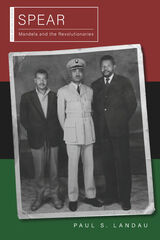 Spear: Mandela and the Revolutionaries
Paul S. Landau
Ohio University Press, 2022 A revelatory and definitive account of how Nelson Mandela and his peers led South Africa to the brink of revolution against the postwar twentieth century’s most infamously racist regime. Spear: Mandela and the Revolutionaries brings to life the brief revolutionary period in which Nelson Mandela and his comrades fought apartheid not just with words but also with violence. After the 1960 Sharpeville police shootings of civilian protesters, Mandela and his comrades in the mass-resistance order of the African National Congress (ANC) and the Communist Party pioneered the use of force and formed Umkhonto we Sizwe (MK), or Spear of the Nation. A civilian-based militia, MK stockpiled weapons and waged a war of sabotage against the state with pipe bombs, Molotov cocktails, and dynamite. In response, the state passed draconian laws, militarized its police, and imprisoned its enemies without trial. Drawing from several hundred first-person accounts, most of which are unpublished, Paul Landau traces Mandela’s allies—and opponents—in communist, pan-Africanist, liberal, and other groups involved in escalating resistance alongside the ANC. After Mandela’s capture, the Pan Africanist Congress planned to initiate street violence, and MK organized Operation Mayibuye, an uprising to be led by trained commandos. The state short-circuited those plans and subsequently jailed, exiled, tortured, and murdered revolutionaries. The era of high apartheid then began. Spear reshapes our understanding of Mandela by focusing on this intense but relatively neglected period of escalation in the movement against apartheid. Landau’s book is not a biography, nor is it a history of a militia or an army; rather, it is a riveting story about ordinary civilians debating and acting together in extremis. Contextualizing Mandela and MK’s activities amid anticolonial change and Black Marxism in the early 1960s, Spear also speaks to today’s transnational antiracism protests and worldwide struggles against oppression.
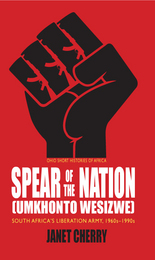 Spear of the Nation: Umkhonto weSizwe: South Africa’s Liberation Army, 1960s–1990s
Janet Cherry
Ohio University Press, 2011 Umkhonto weSizwe, Spear of the Nation, was arguably the last of the great liberation armies of the twentieth century—but it never got to “march triumphant into Pretoria.” MK—as it was known—was the armed wing of the African National Congress, South Africa’s liberation movement, that challenged the South African apartheid government. A small group of revolutionaries committed to the seizure of power, MK discovered its principal members engaged in negotiated settlement with the enemy and was disbanded soon after. The history of MK is one of paradox and contradiction, of successes and failures. In this short study, which draws widely on the personal experiences of—and commentary by—MK soldiers, Janet Cherry offers a new and nuanced account of the Spear of the Nation. She presents in broad outline the various stages of MK’s thirty-year history, considers the difficult strategic and moral problems the revolutionary army faced, and argues that its operations are likely to be remembered as a just war conducted with considerable restraint.
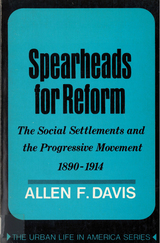 Spearheads for Reform: The Social Settlements and the Progressive Movement, 1890-1914
Davis, Allen
Rutgers University Press, 1985 Allen Davis looks at the influence of settlement-house workers on the reform movement of the progressive era in Chicago, New York, and Boston. These workers were idealists in the way they approached the future, but they were also realists who knew how to organize and use the American political system to initiate change. They lobbied for a wide range of legislation and conducted statistical surveys that documented the need for reform. After World War I, settlement workers were replaced gradually by social workers who viewed their job as a profession, not a calling, and who did not always share the crusading zeal of their forerunners. Nevertheless, the settlement workers who were active from the 1880s to the 1920s left an important legacy: they steered public opinion and official attitudes toward the recognition that poverty was more likely caused by the social environment than by individual weakness,
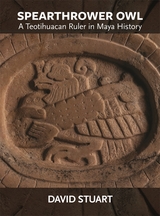 Spearthrower Owl: A Teotihuacan Ruler in Maya History
David Stuart
Harvard University Press Nearly twenty-five years ago, David Stuart published an article titled “The Arrival of Strangers,” in which he proposed that “Spearthrower Owl,” a prominent historical figure cited in the Early Classic inscriptions of Tikal, might be a ruler of Teotihuacan. Stuart expands on this provocative argument in Spearthrower Owl: A Teotihuacan Ruler in Maya History, offering evidence that Spearthrower Owl was a historical individual whose political legacy reverberated for generations in the Maya Lowlands and Central Mexico. Many of the epigraphic, iconographic, and historical particulars surrounding his life are presented here for the first time; these varied lines of evidence point to him being a powerful foreign individual in the history and dynastic politics of the Maya Lowlands as well as a ruler of Teotihuacan from 374 to 439 CE. To contextualize this examination of Spearthrower Owl, the volume looks more closely at the Entrada of January 16, 378, especially in light of newer archaeological discoveries, epigraphic readings, and historical interpretations. The resulting historical framework, even vague as it sometimes is, highlights the complexity and nuance of the Teotihuacan-Maya relationship in the Early Classic period.
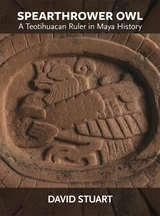 Spearthrower Owl: A Teotihuacan Ruler in Maya History
David Stuart
Harvard University Press Nearly twenty-five years ago, David Stuart published an article titled “The Arrival of Strangers,” in which he proposed that “Spearthrower Owl,” a prominent historical figure cited in the Early Classic inscriptions of Tikal, might be a ruler of Teotihuacan. Stuart expands on this provocative argument in Spearthrower Owl: A Teotihuacan Ruler in Maya History, offering evidence that Spearthrower Owl was a historical individual whose political legacy reverberated for generations in the Maya Lowlands and Central Mexico. Many of the epigraphic, iconographic, and historical particulars surrounding his life are presented here for the first time; these varied lines of evidence point to him being a powerful foreign individual in the history and dynastic politics of the Maya Lowlands as well as a ruler of Teotihuacan from 374 to 439 CE. To contextualize this examination of Spearthrower Owl, the volume looks more closely at the Entrada of January 16, 378, especially in light of newer archaeological discoveries, epigraphic readings, and historical interpretations. The resulting historical framework, even vague as it sometimes is, highlights the complexity and nuance of the Teotihuacan-Maya relationship in the Early Classic period.
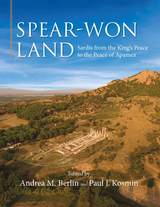 Spear-Won Land: Sardis from the King's Peace to the Peace of Apamea
Edited by Andrea M. Berlin and Paul J. Kosmin
University of Wisconsin Press, 2019 Sardis, in western Turkey, was one of the great cities of the Aegean and Near Eastern worlds for almost a millennium—a political keystone with a legendary past. Recent archeological work has revealed how the city was transformed in the century following Alexander’s conquests from a traditional capital to a Greek polis, setting the stage for its blossoming as a Roman urban center. This integrated collection of essays by more than a dozen prominent scholars illuminates a crucial stage, from the early fourth century to 189 BCE, when it became one of the most important political centers of Asia Minor.
The contributors to this volume are members of the Hellenistic Sardis Project, a research collaboration between long-standing expedition members and scholars keenly interested in the site. These new discussions on the pre-Roman history of Sardis restore the city in the scholarship of the Hellenistic East and will be enlightening to scholars of classical archaeology.
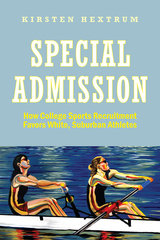 Special Admission: How College Sports Recruitment Favors White Suburban Athletes
Kirsten Hextrum
Rutgers University Press, 2021 Honorable Mention - 2022 Society of Professors of Education Outstanding Book Award
Special Admission contradicts the national belief that college sports provide upward mobility opportunities. Kirsten Hextrum documents how white middle-class youth become overrepresented on college teams. Her institutional ethnography of one elite athletic and academic institution includes over 100 hours of interviews with college rowers and track & field athletes. She charts the historic and contemporary relationships between colleges, athletics, and white middle-class communities that ensure white suburban youth are advantaged in special athletic admissions. Suburban youth start ahead in college admissions because athletic merit—the competencies desired by university recruiters—requires access to vast familial, communal, and economic resources, all of which are concentrated in their neighborhoods. Their advantages increase as youth, parents, and coaches strategically invest in and engineer novel opportunities to maintain their race and class status. Thus, college sports allow white, middle-class athletes to accelerate their racial and economic advantages through admission to elite universities.
Special Branch: The British Spy Novel, 1890-1980
Smith
University of Wisconsin Press, 1981 The author has chosen seventeen of the most important or representative British spy novelists to write about. He presents some basic literary analysis and criticism, trying both to place them in historical perspective and to describe and analyze the content and form of their fiction.
 Special Care: Medical Decisions at the Beginning of Life
Fred M. Frohock
University of Chicago Press, 1986 Intensive care medicine today is as close to the miraculous as most of us are likely to see in our lifetime. Nowhere is this magic more effectively practiced than in neonatal nurseries. Infants who are born prematurely at twenty-four weeks gestation and who weigh less than a pound can now be treated successfully. No other type of medicine has a more dramatic payoff, for the infants who survive can look forward to seventy or more years of life.
But there is a dark underside to the exercise of these skills. A growing number of babies live only to be tethered to life-support systems, unconscious or suffering incessant pain for years and sometimes for the duration of their lives. The ethical issues raised by these children are among the most difficult in our society. Should life be maintained no matter what its quality? Or is there a point at which treatment should be stopped on humane grounds? Who is to make decisions on continuing or ending therapy for damaged children? Is the law a suitable instrument for regulating medical decisions in intensive care nurseries? Should the growing cost of intensive care influence therapy decisions?
Special Care explores the moral and legal issues in neonatal intensive care. Fred M. Frohock spent four months in a special care nursery, observing the daily actions of doctors and nurses and interviewing staff and parents of patients. This engaging, human drama is told through the author's own journal entries interspersed with generous excerpts from taped interviews that display the practical reasoning of staff and parents as they address the moral problems raised by intensive care medicine. Several case studies of infants highlight the often contradictory directions in which medical staffs are pulled and the painful decisions that doctors and parents together are often called upon to make. The result is a book that reconstructs the ordinary life of a neonatal nursery and presents the moral views of those who are most intimately involved in therapy decisions.
This book is an urgently needed entry in the current discussions of treatment for badly damaged babies. Frohock argues that our tradition of rights language, which rests on the premise that we know what a human being is, is inappropriate when dealing with the paradoxes of decision making in neonatal nurseries. Calling for a new moral vocabulary better adapted to the world of medicine, he introduces the notion of harm in place of rights, a concept drawn from medicine's Hippocratic oath that pledges to "do no harm," as a way to begin framing questions and making decisions. Special Care will interest anyone who wants to understand medical decisions at the margins of human life.
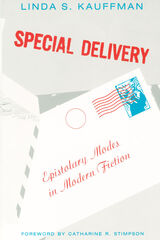 Special Delivery: Epistolary Modes in Modern Fiction
Linda S. Kauffman
University of Chicago Press, 1992 Though letter writing is almost a lost art, twentieth-century writers have mimed the epistolary mode as a means of reevaluating the theme of love. In Special Delivery, Linda S. Kauffman places the narrative treatment of love in historical context, showing how politics, economics, and commodity culture have shaped the meaning of desire.
Kauffman first considers male writers whose works, testing the boundaries of genre and gender, imitate love letters: Viktor Shklovsky's Zoo, Vladimir Nabokov's Lolita, Roland Barthes's A Lover's Discourse, and Jacques Derrida's The Post Card. She then turns to three novels by women who are more preoccupied with politics than passion: Doris Lessing's The Golden Notebook, Alice Walker's The Color Purple, and Margaret Atwood's The Handmaid's Tale. By juxtaposing these "women's productions" with the men's "production of Woman," Special Delivery dismantles the polarities between male and female, theory and fiction, high and low culture, male critical theory, and feminist literary criticism. Kauffman demonstrates how all seven texts mercilessly expose the ideology of individualism and romantic love; each presents alternate paradigms of desire, wrested from Oedipus, grounded in history and politics, giving epistolarity a distinctively postmodern stamp.
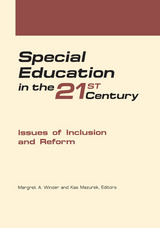 Special Education in the 21st Century
Margret A. Winzer
Gallaudet University Press, 2000 In the late 20th century, a tidal wave of calls for reform and inclusion of special needs students swept over public special education. The current debates over implementing these themes today are authoritatively addressed by 19 distinguished scholars in this thorough volume. Organized into three cohesive sections, it begins with the issues of educational reform and the emerging discourses of disability and integration in the inclusion movement. Respective chapters appraise specific arguments for inclusion and the federal legislation and litigation surrounding and supporting special education. The second part features the thorny issue of assessment, the technological revolution in special education, and the disposition of teacher training. The third section scrutinizes the inclusion of various populations of students with exceptional needs, particularly how teachers can make an easy transition from ideology to educational practice. Special Education in the 21st Century sets the standard for extrapolating future directions by wisely weighing classroom practices for different groups and the technical problems of resources, management, social groupings, instructional design, and the supposition that teachers will automatically change to accommodate an even greater diversity of learners.
Special Effects and German Silent Film: Techno-Romantic Cinema
Katharina Loew
Amsterdam University Press, 2021 In recent decades, special effects have become a major new area of research in cinema studies. For the most part, they have been examined as spectacles or practical tools. In contrast, Special Effects and German Silent Film, foregrounds their function as an expressive device and their pivotal role in cinema’s emergence as a full-fledged art. Special effects not only shaped the look of iconic films like Nosferatu (1922) or Metropolis (1927), but they are central to a comprehensive understanding of German silent film culture writ large. This book examines special effects as the embodiment of a “techno-romantic” paradigm that seeks to harness technology – the epitome of modern materialism – as a means for accessing a spiritual realm. Employed to visualize ideas and emotions in a medium-specific way, special effects thus paved the way for film art.
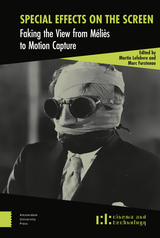 Special Effects on the Screen: Faking the View from Méliès to Motion Capture
Martin Lefebvre
Amsterdam University Press, 2022 Since the very first days of cinema, audiences have marveled at the special effects imagery presented on movie screens. While long relegated to the margins of film studies, special effects have recently become the object of a burgeoning field of scholarship. With the emergence of a digital cinema, and the development of computerized visual effects, film theorists and historians have been reconsidering the traditional accounts of cinematic representation, recognising the important role of special effects. Understood as a constituent part of the cinema, special effects are a major technical but also aesthetic component of filmmaking and an important part of the experience for the audience. In this volume, new directions are charted for the exploration of this indispensable aspect of the cinematic experience. Each of the essays in this collection offers new insight into the theoretical and historical study of special effects. The contributors address the many aspects of special effects, from a variety of perspectives, considering them as a conceptual problem, recounting the history of specific special effects techniques, and analysing notable effects films.
 Special Election: Stories
Brock Clarke
Acre Books, 2025 With his tenth book, celebrated author Brock Clarke once again demonstrates his mastery of the story form.
In Special Election, ingenious fictions target our all-too-familiar preoccupations and vulnerabilities—belonging, (dis)engagement, the struggle for self-worth, the difficulty of loving and being loved, the banality and absurdity of existence. Brock Clarke’s rapier wit, inexhaustible imagination, and brilliant leaps of illogic transform his characters’ desperation and distress into tragicomic delight. In the title story, Lawrence Welk is ousted from heaven to run for governor in present-day North Dakota. In “One Goes Where One Is Needed,” we follow the former Provisional Coalition Administrator of post-liberation Iraq, now a youth ski instructor at Okemo Mountain in Vermont. In “The Slim Jim,” the protagonist finds himself (literally and figuratively) very slowly choking to death on a frozen microwavable burrito.
“There is something wrong with me,” states the narrator of “The Big Book of Useless Saturdays.” This could be said of all the characters in Special Election, and through loopy misdirection and mordant observation, Clarke devotes himself to showing his characters and his readers exactly what is wrong. Yet the sharpness of his attention and lavish ludicrousness of his storylines belie a sneaking affection for this imperfect, disappointing world filled with imperfect, disappointing humans. Though Clarke has been compared to such greats as Barthelme, Bellow, and Saunders, the nine stories in Special Election vibrate at a frequency all his own, showcasing the strengths of one of our most gifted comic writers.
 Special Sorrows: The Diasporic Imagination of Irish, Polish, and Jewish Immigrants in the United States
Matthew Frye Jacobson
Harvard University Press, 1995 Conventional wisdom would have us believe that every immigrant to the United States “became American,” by choice and with deliberate speed. Yet, as Special Sorrows shows us, this is simply untrue. In this compelling revisionist study, Matthew Frye Jacobson reveals tenacious attachments to the Old World and explores the significance of homeland politics for Irish, Polish, and Jewish immigrants at the turn of the twentieth century.
Drawing on Yiddish, Polish, and English-language sources, Jacobson discovers the influence of nationalist ideologies in the overt political agendas of such ethnic associations as the Knights of Zion and the Polish Falcons, as well as in newspapers, vernacular theater, popular religion, poetry, fiction, and festivals, both religious and secular. In immigrant communities, he finds that nationalism was a powerful component of popular sensibility.
A captivating example of Jacobson’s thesis is immigrant reaction to American intervention in Cuba. Masculinist/militarist strains of nationalist culture met with the keen impulse to aid a subjugated people. The three national groups, rich with memories of their own subjugation, found an unlikely outlet in the Caribbean. But when the U.S. war for Cuban liberation was followed by a crusade for Philippine subjugation, immigrants faced a dilemma: some condemned the American empire rich in Old World parallels; others dismissed the Filipinos as racial “others” and embraced the glories of conquest. In effect, the crucible of American imperialism was vital to many immigrants’ Americanization, in the sense of passionate participation in national politics, pro or con.
This work answers the call of scholars to recover the full experience of these immigrants. It adds to the tapestry of America’s turn-of-the-century political culture and restores an essential transnational dimension to questions of ethnic identity and behavior.
 Specializing the Courts
Lawrence Baum
University of Chicago Press, 2010 Most Americans think that judges should be, and are, generalists who decide a wide array of cases. Nonetheless, we now have specialized courts in many key policy areas. Specializing the Courts provides the first comprehensive analysis of this growing trend toward specialization in the federal and state court systems.
Lawrence Baum incisively explores the scope, causes, and consequences of judicial specialization in four areas that include most specialized courts: foreign policy and national security, criminal law, economic issues involving the government, and economic issues in the private sector. Baum examines the process by which court systems in the United States have become increasingly specialized and the motives that have led to the growth of specialization. He also considers the effects of judicial specialization on the work of the courts by demonstrating that under certain conditions, specialization can and does have fundamental effects on the policies that courts make. For this reason, the movement toward greater specialization constitutes a major change in the judiciary.
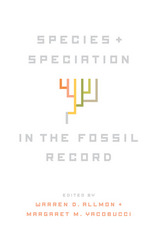 Species and Speciation in the Fossil Record
Edited by Warren D. Allmon and Margaret M. Yacobucci
University of Chicago Press, 2016 Although the species is one of the fundamental units of biological classification, there is remarkably little consensus among biologists about what defines a species, even within distinct sub-disciplines. The literature of paleobiology, in particular, is littered with qualifiers and cautions about applying the term to the fossil record or equating such species with those recognized among living organisms. In Species and Speciation in the Fossil Record, experts in the field examine how they conceive of species of fossil animals and consider the implications these different approaches have for thinking about species in the context of macroevolution.
After outlining views of the Modern Synthesis of evolutionary disciplines and detailing the development within paleobiology of quantitative methods for documenting and analyzing variation within fossil assemblages, contributors explore the challenges of recognizing and defining species from fossil specimens—and offer potential solutions. Addressing both the tempo and mode of speciation over time, they show how with careful interpretation and a clear species concept, fossil species may be sufficiently robust for meaningful paleobiological analyses. Indeed, they demonstrate that the species concept, if more refined, could unearth a wealth of information about the interplay between species origins and extinctions, between local and global climate change, and greatly deepen our understanding of the evolution of life.
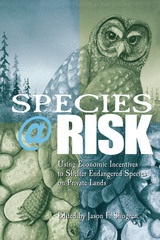 Species at Risk: Using Economic Incentives to Shelter Endangered Species on Private Lands
Edited by Jason F. Shogren
University of Texas Press, 2005 Protecting endangered species of animals and plants is a goal that almost everyone supports in principle—but in practice private landowners have often opposed the regulations of the Endangered Species Act, which, they argue, unfairly limits their right to profit from their property. To encourage private landowners to cooperate voluntarily in species conservation and to mitigate the economic burden of doing so, the government and nonprofit land trusts have created a number of incentive programs, including conservation easements, leases, habitat banking, habitat conservation planning, safe harbors, candidate conservation agreements, and the "no surprise" policy. In this book, lawyers, economists, political scientists, historians, and zoologists come together to assess the challenges and opportunities for using economic incentives as compensation for protecting species at risk on private property. They examine current programs to see how well they are working and also offer ideas for how these programs could be more successful. Their ultimate goal is to better understand how economic incentive schemes can be made both more cost-effective and more socially acceptable, while respecting a wide range of views regarding opportunity costs, legal standing, biological effectiveness, moral appropriateness, and social context.
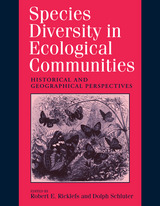 Species Diversity in Ecological Communities
Edited by Robert E. Ricklefs and Dolph Schluter
University of Chicago Press, 1993 A pioneering work, Species Diversity in Ecological Communities looks at biodiversity in its broadest geographical and historical contexts. For many decades, ecologists have studied only small areas over short time spans in the belief that diversity is regulated by local ecological interactions. However, to understand fully how communities come to have the diversity they do, and to properly address urgent conservation problems, scientists must consider global patterns of species richness and the historical events that shape both regional and local communities.
The authors use new theoretical developments, analyses, and case studies to explore the large-scale mechanisms that generate and maintain diversity. Case studies of various regions and organisms consider how local and regional processes interact to determine patterns of species richness. The contributors emphasize the fact that ecological processes acting quickly on a local scale do not erase the effects of regional and historical events that occur more slowly and less frequently.
This book compels scientists to rethink the foundations of community ecology and sets the stage for further research using comparative, experimental, geographical, and historical data.
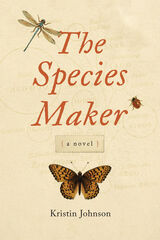 The Species Maker: A Novel
Kristin Johnson
University of Alabama Press, 2021 A historical novel about the role of science in modern life, set against the backdrop of the 1925 Scopes Trial
When William Jennings Bryan began a campaign to get evolution out of American schools in the 1920s, entomologist Martin Sullivan sought refuge from the tumult in his research. Although the theory of evolution provides the foundation for his scientific work, he prefers the careful methods of observation and classification to the passion of public debate. But when Martin takes a job teaching college biology in Seattle, he finds it increasingly difficult to retreat to the haven of science. His students are taking sides in the debate over whether religion and evolution can be reconciled. Socialists are using evolution to justify revolution. Politicians are citing Darwin in defense of anti-immigration laws. And Martin’s own colleagues are insisting that only eugenic reforms will save the world. As anti-evolution legislation spreads across the country and passions flare on all sides, the effort to apply science to marriage laws and mate choice even begins to touch the lives of those he loves. By the time the state of Tennessee puts John T. Scopes on trial for teaching evolution in the summer of 1925, Martin can no longer ignore the debates that surround him and must take a stand in the fight over the role of science in American society.
Although set a hundred years ago, The Species Maker wrestles with many issues that continue to confront scientists and science watchers in the present day. Kristin Johnson draws on her experiences in the classroom and extensive knowledge of the history of science to depict what it might have been like for a careful scientist to watch the heated debates over teaching evolution in the United States in the 1920s.
Visit www.thespeciesmaker.com for supplemental material including historical essays, links to online primary sources, a glossary, and guiding questions useful for the classroom or book clubs.
 Specification, Estimation, and Analysis of Macroeconomic Models
Ray Fair
Harvard University Press, 1984 This book gives a practical, applications-oriented account of the latest techniques for estimating and analyzing large, nonlinear macroeconomic models. Ray Fair demonstrates the application of these techniques in a detailed presentation of several actual models, including his United States model, his multicountry model, Sargent's classical macroeconomic model, autoregressive and vector autoregressive models, and a small (twelve equation) linear structural model. He devotes a good deal of attention to the difficult and often neglected problem of moving from theoretical to econometric models. In addition, he provides an extensive discussion of optimal control techniques and methods for estimating and analyzing rational expectations models.
A computer program that handles all the techniques in the book is available from the author, making it possible to use the techniques with little additional programming. The book presents the logic of this program. A smaller program for personal microcomputers for analysis of Fair's United States model is available from Urban Systems Research & Engineering, Inc. Anyone wanting to learn how to use large macroeconomic models, including researchers, graduate students, economic forecasters, and people in business and government both in the United States and abroad, will find this an essential guidebook.
Specifying Syntactic Structures
Edited by Patrick Blackburn and Maarten de Rijke
CSLI, 1997 The papers in this book apply mathematical and logical methods to the description of linguistic structures. Such descriptions are useful for a variety of purposes. For example, they make it easier to design and debug software for dealing with human languages. The purpose of the volume is to introduce a number of new and better methods for describing linguistic structures. The volume contains contributions on the logical foundations of current syntactic theories, as well as on logical methods that lead to new ways of describing syntactic structures.
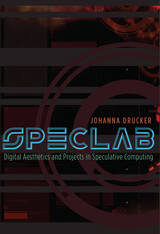 SpecLab: Digital Aesthetics and Projects in Speculative Computing
Johanna Drucker
University of Chicago Press, 2009 Nearly a decade ago, Johanna Drucker cofounded the University of Virginia’s SpecLab, a digital humanities laboratory dedicated to risky projects with serious aims. In SpecLab she explores the implications of these radical efforts to use critical practices and aesthetic principles against the authority of technology based on analytic models of knowledge. Inspired by the imaginative frontiers of graphic arts and experimental literature and the technical possibilities of computation and information management, the projects Drucker engages range from Subjective Meteorology to Artists’ Books Online to the as yet unrealized ’Patacritical Demon, an interactive tool for exposing the structures that underlie our interpretations of text. Illuminating the kind of future such experiments could enable, SpecLab functions as more than a set of case studies at the intersection of computers and humanistic inquiry. It also exemplifies Drucker’s contention that humanists must play a role in designing models of knowledge for the digital age—models that will determine how our culture will function in years to come.
Spectacle & Pigsty
Kiwao Nomura
Omnidawn, 2011 If you think of haiku when you think of Japanese poetry, this book will be a huge surprise. The strange and wild poems of Kiwao Nomura deal with sex and loss and memory by making unpredictable leaps of association. Imagine Fugazi singing philosophy and you get close. Inspired by shamanism, Kiwao Nomura sounds like nothing you’ve ever heard before and like something you want to hear over and over. He is one of the two or three of the most influential living Japanese poets, and his work will be as stunningly original and compelling to contemporary Americans as haiku was to the late Victorians. Anyone interested in making contact with Japanese culture will want to read Spectacle & Pigsty.
 The Spectacle 2.0: Reading Debord in the Context of Digital Capitalism
Marco Briziarelli and Emiliana Armano
University of Westminster Press, 2017 “Necessary reading for scholars interested in theorising the spectacle's relation to the labour theory of value, commodity fetishism and subjectivity under post-Fordism.” - https://www.triple-c.at/index.php/tripleC/article/view/1015/1176 Spectacle 2.0 recasts Debord's theory of spectacle within the frame of 21st century digital capitalism. It offers a reassessment of Debord’s original notion of Spectacle from the late 1960s, of its posterior revisitation in the 1990s, and it presents a reinterpretation of the concept within the scenario of contemporary informational capitalism and more specifically of digital and media labour. It is argued that the Spectacle 2.0 form operates as the interactive network that links through one singular (but contradictory) language and various imaginaries, uniting diverse productive contexts such as logistics, finance, new media and urbanism. Spectacle 2.0 thus colonizes most spheres of social life by processes of commodification, exploitation and reification. Diverse contributors consider the topic within the book’s two main sections: Part I conceptualizes and historicizes the Spectacle in the context of informational capitalism; contributions in Part II offer empirical cases that historicise the Spectacle in relation to the present (and recent past) showing how a Spectacle 2.0 approach can illuminate and deconstruct specific aspects of contemporary social reality. All contributions included in this book rework the category of the Spectacle to present a stimulating compendium of theoretical critical literature in the fields of media and labour studies. In the era of the gig-economy, highly mediated content and President Trump, Debord’s concept is arguably more relevant than ever.
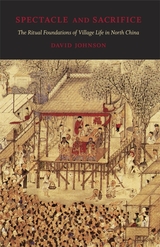 Spectacle and Sacrifice: The Ritual Foundations of Village Life in North China
David Johnson
Harvard University Press, 2009 This book is about the ritual world of a group of rural settlements in Shanxi province in pre-1949 North China. Temple festivals, with their giant processions, elaborate rituals, and operas, were the most important influence on the symbolic universe of ordinary villagers and demonstrate their remarkable capacity for religious and artistic creation. The great festivals described in this book were their supreme collective achievements and were carried out virtually without assistance from local officials or educated elites, clerical or lay.
Chinese culture was a performance culture, and ritual was the highest form of performance. Village ritual life everywhere in pre-revolutionary China was complex, conservative, and extraordinarily diverse. Festivals and their associated rituals and operas provided the emotional and intellectual materials out of which ordinary people constructed their ideas about the world of men and the realm of the gods. It is, David Johnson argues, impossible to form an adequate idea of traditional Chinese society without a thorough understanding of village ritual. Newly discovered liturgical manuscripts allow him to reconstruct North Chinese temple festivals in unprecedented detail and prove that they are sharply different from the Daoist- and Buddhist-based communal rituals of South China.
Spectacle and the City: Chinese Urbanities in Art and Popular Culture
Edited by Jeroen de Kloet and Lena Scheen
Amsterdam University Press, 2013 As China becomes increasingly modern and urban, artists have responded by imagining the Chinese city at the intersections of the social, material, and political realities of modern life. This volume explores how the city-as-spectacle has been visualized and contested in art and popular culture. Featuring essays by an interdisciplinary team of scholars, Spectacle and the City is as broad as the terrain it covers: with essays by an interdisciplinary team of experts on Chinese cities, as well as leading cultural critics, it goes beyond mainland China to include cities with cultural significance, such as Singapore and Hong Kong.
Spectacle and Topophilia: Reading Early Modern and Postmodern Hispanic Cultures
David R. Castillo
Vanderbilt University Press, 2011 This volume explores the intersection between theories of the modern spectaclefrom Jose Antonio Maravall's conceptualization of the spectacular culture of the baroque to the Frankfurt School's theorization of mass culture, to Baudrillard's notion of the simulacrum, to Guy Debord's understanding of the society of the spectacleand the findings of the emerging fields of urban studies, landscape studies, and, generally speaking, studies of space.
 The Spectacle of Democracy: Spanish Television, Nationalism, and Political Transition
Richard Maxwell
University of Minnesota Press, 1994
The Spectacle of Democracy was first published in 1994. Minnesota Archive Editions uses digital technology to make long-unavailable books once again accessible, and are published unaltered from the original University of Minnesota Press editions.
In this age of increased global communication the media seem like juggernauts paving the way from dictatorship to democracy. Richard Maxwell's study of television in Spain overturns this myth of technological power. He shows us how transitions themselves have a profound impact on the media, as controllers of national television clash with commercial media promoters and with regionalists who want television to extend their nationalist politics and collective identity.
Maxwell's sophisticated analysis of the many variables shaping communication policy within the nation-state draws on a decade of research into Spanish culture, mass media, and political economy. Although focused on Spain, his work provides general insight into the nature of communication policy debates in today's globalized economy. A study of the transformation of television in Spain following the end of Franco's dictatorship, Maxwell's book examines the politics of the privatization of television, the rise of regional television, and the transnational realignment of national media space.
Richard Maxwell is assistant professor in the department of radio, television, and film in the School of Speech at Northwestern University.
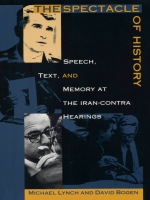 The Spectacle of History: Speech, Text, and Memory at the Iran-Contra Hearings
Michael Lynch and David Bogen, eds.
Duke University Press, 1996 How is history produced? How do individuals write—or rewrite—their parts while engaged in the production of history? Michael Lynch and David Bogen take the example of the Iran-contra hearings to explore these questions. These hearings, held in 1987 by the Joint House-Senate Select Committee on Secret Military Assistance to Iran and the Nicaragua Opposition, provided the nation with a media spectacle and a rare chance to see a struggle over the writing of history. There was Oliver North, prime suspect and designated scapegoat, turning into a hero of the American Right before the very eyes of the nation. How this transformation occurred, with the complicity of the press and the public, becomes disturbingly clear in The Spectacle of History.
Lynch and Bogen detail the practices through which the historical agents at the center of the hearings composed, confirmed, used, erased, and denied the historical record. They show how partisan skirmishes over the disclosure of records and testimony led to a divided and irresolute outcome, an outcome further facilitated by the “applied deconstruction” deployed by North and his allies. The Spectacle of History immerses the reader in a crowded field of texts, utterances, visual displays, and media commentaries, but, more than a case study, it develops unique insight into problems at the heart of society and social theory—lying and credibility, the production of civic spectacle, the relationship between testimony and history, the uses of memory, and the interplay between speech and writing.
Drawing on themes from sociology, literary theory, and ethnomethodology and challenging prevailing concepts held by contemporary communication and cultural studies, Lynch and Bogen extract valuable theoretical lessons from this specific and troubling historical episode.
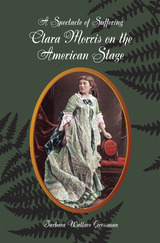 A Spectacle of Suffering: Clara Morris on the American Stage
Barbara Wallace Grossman
Southern Illinois University Press, 2009 Once called "America's greatest actress," renowned for the passion and power of her performances, Clara Morris (1847-1925) has been largely forgotten. A Spectacle of Suffering: Clara Morris on the American Stage is the first full-length study of the actress's importance as a feminist in the late nineteenth and early twentieth centuries. Detailing her daunting health problems and the changing tastes in entertainment that led to her retirement from the stage, Barbara Wallace Grossman explores Morris's dramatic reinvention as an author. During a second robust career, she published hundreds of newspaper and magazine articles and nine books—six works of fiction and three memoirs. Grossman draws on the fifty-four-volume diary that Morris kept from 1868 until 1924, as well as on the manuscript fragments and notes of journalist George T. MacAdam, who died in 1929 before completing the actress's biography. Grossman provides a dramatic account of Morris's life and work from her troubled early years, through an unhappy marriage, morphine addiction, and invalidism, to the challenges of touring, the decline of her artistic reputation, and the demands of the writing career she pursued so tenaciously. A Spectacle of Suffering reveals how Morris, even after experiencing blindness and the loss of her home, livelihood, and family, did not succumb to despair and found comfort in the small pleasures of her circumscribed life. A Spectacle of Suffering recovers an important figure in American theatre and ensures that Morris will be remembered not simply as an actress but as a respected writer and beloved public figure, admired for her courage in dealing with adversity. The book, which is enhanced by twenty-four illustrations, is the only published biography of Clara Morris. It is as much a tribute to the power of the human spirit as it is an effective means of exploring American theatre and society in the Gilded Age.
The Spectacle of Women: Imagery of the Suffrage Campaign 1907-14
Lisa Tickner
University of Chicago Press, 1988 Too "artistic" for political history, too political for the history of art, the visual history of the campaign for women's suffrage in Britain has long been neglected. In this comprehensive and pathbreaking study, Lisa Tickner discusses and illustrates the suffragist use of spectacle—the design of banners, posters and postcards, the orchestration of mass demonstrations—in an unprecedented propaganda campaign.
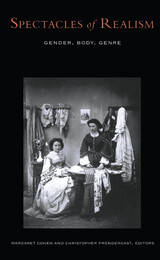 Spectacles Of Realism: Gender, Body, Genre
Margaret Cohen
University of Minnesota Press, 1995 A rethinking of realism that reveals its relevance to sexual and cultural politics. Despite rumors of its demise in literary theory and practice, realism persists. Why this is, and how realism is relevant to current interdisciplinary debates in gender studies and cultural studies, are the questions underlying Spectacles of Realism. With particular reference to nineteenth-century French culture, the contributors explore the role realism has played in the social construction of gender and sexuality. Among their subjects are nineteenth-century physiologies, photographs, caricatures, and Balzac’s Comédie humaine; the ethnographic claims of Goncourt’s naturalism and the historical claims of Zola’s; and the allure of exotica displayed at new museums and international expositions. Contributors: April Alliston, Princeton U; Emily Apter, UCLA; Charles Bernheimer, U of Pennsylvania; Rhonda Garelick; Judith Goldstein, Vassar; Anne Higonnet, Wellesley; Roger Huss, Queen Mary and Westfield College; Dorothy Kelly, Boston U; Diana Knight, U of Nottingham; Jann Matlock, Harvard U; Linda Nochlin, NYU; Patrick O’Donovan, King’s College; Vanessa Schwartz, American U; Naomi Segal, U of Reading; Barbara Vinken, NYU.
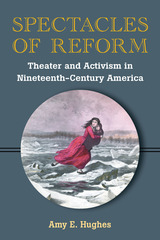 Spectacles of Reform: Theater and Activism in Nineteenth-Century America
Amy E. Hughes
University of Michigan Press, 2014 In the nineteenth century, long before film and television arrived to electrify audiences with explosions, car chases, and narrow escapes, it was America's theaters that offered audiences such thrills, with "sensation scenes" of speeding trains, burning buildings, and endangered bodies, often in melodramas extolling the virtues of temperance, abolition, and women's suffrage. In Spectacles of Reform , Amy E. Hughes scrutinizes these peculiar intersections of spectacle and reform, revealing that spectacle plays a crucial role in American activism. By examining how theater producers and political groups harnessed its power and appeal, Hughes suggests that spectacle was—and remains—central to the dramaturgy of reform. Engaging evidence from lithographs to children's books to typography catalogs, Hughes traces the cultural history of three famous sensation scenes—the drunkard suffering from the delirium tremens, the fugitive slave escaping over a river, and the victim tied to the railroad tracks—assessing how they conveyed, allayed, and denied concerns about the rights and responsibilities of citizenship. These images also appeared in printed propaganda, suggesting that the coup de théâtre was an essential part of American reform culture. Additionally, Hughes argues that today's producers and advertisers continue to exploit the affective dynamism of spectacle, reaching an even broader audience through film, television, and the Internet. To be attuned to the dynamics of spectacle, Hughes argues, is to understand how we see. Consequently, Spectacles of Reform will interest not only theater historians, but also scholars and students of political, literary, and visual culture who are curious about how U.S. citizens saw themselves and their world during a pivotal period in American history.
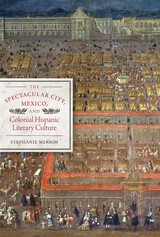 The Spectacular City, Mexico, and Colonial Hispanic Literary Culture
By Stephanie Merrim
University of Texas Press, 2010 Winner, Katherine Singer Kovacs Prize, Modern Language Association, 2010 The Spectacular City, Mexico, and Colonial Hispanic Literary Culture tracks the three spectacular forces of New World literary culture—cities, festivals, and wonder—from the sixteenth to the seventeenth century, from the Old World to the New, and from Mexico to Colombia, Peru, and Bolivia. It treats a multitude of imperialist and anti-imperialist texts in depth, including poetry, drama, protofiction, historiography, and journalism. While several of the landmark authors studied, including Hernán Cortés and Sor Juana Inés de la Cruz, are familiar, others have received remarkably little critical attention. Similarly, in spotlighting creole writers, Merrim reveals an intertextual tradition in Mexico that spans two centuries. Because the spectacular city reaches its peak in the seventeenth century, Merrim's book also theorizes and details the spirited work of the New World Baroque. The result is the rich examination of a trajectory that leads from the Renaissance ordered city to the energetic revolts of the spectacular city and the New World Baroque.
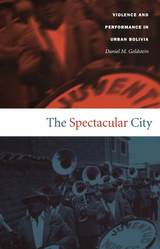 The Spectacular City: Violence and Performance in Urban Bolivia
Daniel M. Goldstein
Duke University Press, 2004 Since the Bolivian revolution in 1952, migrants have come to the city of Cochabamba, seeking opportunity and relief from rural poverty. They have settled in barrios on the city’s outskirts only to find that the rights of citizens—basic rights of property and security, especially protection from crime—are not available to them. In this ethnography, Daniel M. Goldstein considers the significance of and similarities between two kinds of spectacles—street festivals and the vigilante lynching of criminals—as they are performed in the Cochabamba barrio of Villa Pagador. By examining folkloric festivals and vigilante violence within the same analytical framework, Goldstein shows how marginalized urban migrants, shut out of the city and neglected by the state, use performance to assert their national belonging and to express their grievances against the inadequacies of the state’s official legal order. During the period of Goldstein’s fieldwork in Villa Pagador in the mid-1990s, residents attempted to lynch several thieves and attacked the police who tried to intervene. Since that time, there have been hundreds of lynchings in the poor barrios surrounding Cochabamba. Goldstein presents the lynchings of thieves as a form of horrific performance, with elements of critique and political action that echo those of local festivals. He explores the consequences and implications of extralegal violence for human rights and the rule of law in the contemporary Andes. In rich detail, he provides an in-depth look at the development of Villa Pagador and of the larger metropolitan area of Cochabamba, illuminating a contemporary Andean city from both microethnographic and macrohistorical perspectives. Focusing on indigenous peoples’ experiences of urban life and their attempts to manage their sociopolitical status within the broader context of neoliberal capitalism and political decentralization, The Spectacular City highlights the deep connections between performance, law, violence, and the state.
Spectacular Death: Interdisciplinary Perspectives on Mortality and (Un)Representability
Edited by Tristanne Connolly
Intellect Books, 2011 A collection of essays on the medical and social articulation of death, this anthologyconsiders to what extent a subject as elusive as death can be examined. Though it touches us all, we can perceive it only in life—with the predictable result that we treat it either as a clinical or social problem to be managed or as a phenomenon to be studied quantitatively. This volume goes beyond these models to self-reflexively question how the management of death is organized and motivated and the ways that death is at once feared and embraced. Drawing on the very latest in the medical humanities, Spectacular Death gives us an enlightening new perspective on death from the classical world to the twenty-first century.
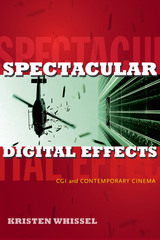 Spectacular Digital Effects: CGI and Contemporary Cinema
Kristen Whissel
Duke University Press, 2014 By developing the concept of the "digital effects emblem," Kristen Whissel contributes a new analytic rubric to cinema studies. An "effects emblem" is a spectacular, computer-generated visual effect that gives stunning expression to a film's key themes. Although they elicit feelings of astonishment and wonder, effects emblems do not interrupt narrative, but are continuous with story and characterization and highlight the narrative stakes of a film. Focusing on spectacular digital visual effects in live-action films made between 1989 and 2011, Whissel identifies and examines four effects emblems: the illusion of gravity-defying vertical movement, massive digital multitudes or "swarms," photorealistic digital creatures, and morphing "plasmatic" figures. Across films such as Avatar, The Matrix, the Lord of the Rings trilogy, Jurassic Park, Titanic, and Crouching Tiger, Hidden Dragon, these effects emblems heighten the narrative drama by contrasting power with powerlessness, life with death, freedom with constraint, and the individual with the collective.
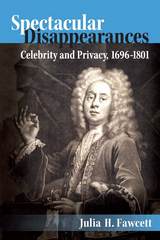 Spectacular Disappearances: Celebrity and Privacy, 1696-1801
Julia H. Fawcett
University of Michigan Press, 2016 How can people in the spotlight control their self-representations when the whole world seems to be watching? The question is familiar, but not new. Julia Fawcett examines the stages, pages, and streets of eighteenth-century London as England's first modern celebrities performed their own strange and spectacular self-representations. They include the enormous wig that actor Colley Cibber donned in his comic role as Lord Foppington--and that later reappeared on the head of Cibber's cross-dressing daughter, Charlotte Charke. They include the black page of Tristram Shandy, a memorial to the parson Yorick (and author Laurence Sterne), a page so full of ink that it cannot be read. And they include the puffs and prologues that David Garrick used to heighten his publicity while protecting his privacy; the epistolary autobiography, modeled on the sentimental novel, of Garrick's protégée George Anne Bellamy; and the elliptical poems and portraits of the poet, actress, and royal courtesan Mary Robinson, a.k.a. Perdita. Linking all of these representations is a quality that Fawcett terms "over-expression," the unique quality that allows celebrities to meet their spectators' demands for disclosure without giving themselves away. Like a spotlight so brilliant it is blinding, these exaggerated but illegible self-representations suggest a new way of understanding some of the key aspects of celebrity culture, both in the eighteenth century and today. They also challenge divides between theatrical character and novelistic character in eighteenth-century studies, or between performance studies and literary studies today. The book provides an indispensable history for scholars and students in celebrity studies, performance studies, and autobiography—and for anyone curious about the origins of the eighteenth-century self.
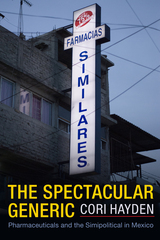 The Spectacular Generic: Pharmaceuticals and the Simipolitical in Mexico
Cori Hayden
Duke University Press, 2023 In The Spectacular Generic, Cori Hayden examines how generic drugs have transformed public health politics and everyday experiences of pharmaceutical consumption in Latin America. Focusing on the Mexican pharmacy chain Farmacias Similares and its proprietor, Víctor González Torres, Hayden shows how generics have become potent commodities in a postpatent world. In the early 2000s, González Torres, a.k.a. “Dr. Simi,” capitalized on the creation of new markets for generic medicines, selling cheaper copies of leading-brand drugs across Latin America. But Dr. Simi has not simply competed with the transnationals; his enterprise has also come to compete with the Mexican state, reorganizing the provision of medicine and basic health care for millions of people. Hayden juxtaposes this story with Dr. Simi’s less successful efforts in Argentina, where he confronted a radically different configuration of pharmaceutical politics. Building from these diverging trajectories, Hayden illuminates the politics of generic substitution as a question that goes beyond substituting one drug for another. Generic politics can radically reshape the relations among consumers, states, and pharmaceutical markets, even as they have yet to resolve the problems of cost and access.
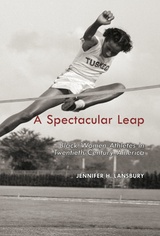 A Spectacular Leap: Black Women Athletes in Twentieth-Century America
Jennifer H. Lansbury
University of Arkansas Press, 2014 When high jumper Alice Coachman won the high jump title at the 1941 national championships with "a spectacular leap," African American women had been participating in competitive sport for close to twenty-five years. Yet it would be another twenty years before they would experience something akin to the national fame and recognition that African American men had known since the 1930s, the days of Joe Louis and Jesse Owens. From the 1920s, when black women athletes were confined to competing within the black community, through the heady days of the late twentieth century when they ruled the world of women's track and field, African American women found sport opened the door to a better life. However, they also discovered that success meant challenging perceptions that many Americans--both black and white--held of them. Through the stories of six athletes--Coachman, Ora Washington, Althea Gibson, Wilma Rudloph, Wyomia Tyus, and Jackie Joyner-Kersee--Jennifer H. Lansbury deftly follows the emergence of black women athletes from the African American community; their confrontations with contemporary attitudes of race, class, and gender; and their encounters with the civil rights movement. Uncovering the various strategies the athletes use to beat back stereotypes, Lansbury explores the fullness of African American women's relationship with sport in the twentieth century.
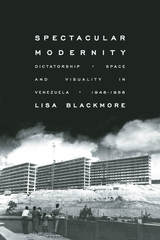 Spectacular Modernity: Dictatorship, Space, and Visuality in Venezuela, 1948-1958
Lisa Blackmore
University of Pittsburgh Press, 2017 Winner, 2018 LASA Venezuela Section Fernando Coronil Award
In cultural history, the 1950s in Venezuela are commonly celebrated as a golden age of modernity, realized by a booming oil economy, dazzling modernist architecture, and nationwide modernization projects. But this is only half the story. In this path-breaking study, Lisa Blackmore reframes the concept of modernity as a complex cultural formation in which modern aesthetics became deeply entangled with authoritarian politics. Drawing on extensive archival research and presenting a wealth of previously unpublished visual materials, Blackmore revisits the decade-long dictatorship to unearth the spectacles of progress that offset repression and censorship. Analyses of a wide range of case studies—from housing projects to agricultural colonies, urban monuments to official exhibitions, and carnival processions to consumer culture—reveal the manifold apparatuses that mythologized visionary leadership, advocated technocratic development, and presented military rule as the only route to progress. Offering a sharp corrective to depoliticized accounts of the period, Spectacular Modernity instead exposes how Venezuelans were promised a radically transformed landscape in exchange for their democratic freedoms.
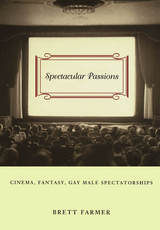 Spectacular Passions: Cinema, Fantasy, Gay Male Spectatorships
Brett Farmer
Duke University Press, 2000 The image of the movie-obsessed gay man is a widely circulating and readily recognizable element of the contemporary cultural landscape. Using psychoanalytic theory as his guide while inflecting it with insights from both film theory and queer theory, Brett Farmer moves beyond this cliché to develop an innovative exploration of gay spectatorship. The result, Spectacular Passions, reveals how cinema has been engaged by gay men as a vital forum for “fantasmatic performance”—in this case, the production of specifically queer identities, practices, and pleasures.
Building on the psychoanalytic concept of the fantasmatic, Farmer works to depathologize gay male subjectivity. While discussing such films as Kiss of the Spider Woman, The Pirate, Suddenly Last Summer, and Sunset Boulevard, and stars ranging from Mae West to Montgomery Clift, Farmer argues that the particularities of gay men’s social and psychic positionings motivate unique receptions of and investments in film. The Hollywood musical, gay camp readings of the extravagant female star, and the explicit homoeroticism of the cinematic male body in gay fanzines are further proof, says Farmer, of how the shifting libidinal profiles of homosexual desire interact with the fantasy scenarios of Hollywood film to produce a range of variable queer meanings.
This fascinating and provocative study makes a significant new contribution to discussions of cinema, spectatorship, and sexuality. As such, it will be welcomed by those in the fields of film theory, queer theory, and cultural studies.
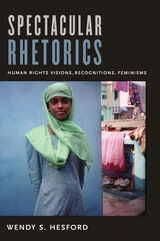 Spectacular Rhetorics: Human Rights Visions, Recognitions, Feminisms
Wendy S. Hesford
Duke University Press, 2011 Spectacular Rhetorics is a rigorous analysis of the rhetorical frameworks and narratives that underlie human rights law, shape the process of cultural and legal recognition, and delimit public responses to violence and injustice. Integrating visual and textual criticism, Wendy S. Hesford scrutinizes “spectacular rhetoric,” the use of visual images and rhetoric to construct certain bodies, populations, and nations as victims and incorporate them into human rights discourses geared toward Westerners, chiefly Americans. Hesford presents a series of case studies critiquing the visual representations of human suffering in documentary films, photography, and theater. In each study, she analyzes works addressing a prominent contemporary human rights cause, such as torture and unlawful detention, ethnic genocide and rape as a means of warfare, migration and the trafficking of women and children, the global sex trade, and child labor. Through these studies, she demonstrates how spectacular rhetoric activates certain cultural and national narratives and social and political relations, consolidates identities through the politics of recognition, and configures material relations of power and difference to produce and, ultimately, to govern human rights subjects.
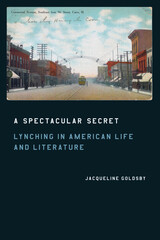 A Spectacular Secret: Lynching in American Life and Literature
Jacqueline Goldsby
University of Chicago Press, 2006 This incisive study takes on one of the grimmest secrets in America's national life—the history of lynching and, more generally, the public punishment of African Americans. Jacqueline Goldsby shows that lynching cannot be explained away as a phenomenon peculiar to the South or as the perverse culmination of racist politics. Rather, lynching—a highly visible form of social violence that has historically been shrouded in secrecy—was in fact a fundamental part of the national consciousness whose cultural logic played a pivotal role in the making of American modernity.
To pursue this argument, Goldsby traces lynching's history by taking up select mob murders and studying them together with key literary works. She focuses on three prominent authors—Ida B. Wells-Barnett, Stephen Crane, and James Weldon Johnson—and shows how their own encounters with lynching influenced their analyses of it. She also examines a recently assembled archive of evidence—lynching photographs—to show how photography structured the nation's perception of lynching violence before World War I. Finally, Goldsby considers the way lynching persisted into the twentieth century, discussing the lynching of Emmett Till in 1955 and the ballad-elegies of Gwendolyn Brooks to which his murder gave rise.
An empathic and perceptive work, A Spectacular Secret will make an important contribution to the study of American history and literature.
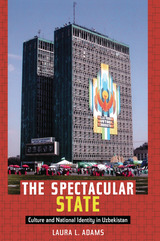 The Spectacular State: Culture and National Identity in Uzbekistan
Laura L. Adams
Duke University Press, 2010 Laura L. Adams offers unique insight into nation building in Central Asia during the post-Soviet era through an exploration of Uzbekistan’s production of national culture in the 1990s. As she explains, after independence the Uzbek government maintained a monopoly over ideology, exploiting the remaining Soviet institutional and cultural legacies. The state expressed national identity through tightly controlled mass spectacles, including theatrical and musical performances. Adams focuses on these events, particularly the massive outdoor concerts the government staged on the two biggest national holidays, Navro’z, the spring equinox celebration, and Independence Day. Her analysis of the content, form, and production of these ceremonies shows how Uzbekistan’s cultural and political elites engaged in a highly directed, largely successful program of nation building through culture. Adams draws on her observations and interviews conducted with artists, intellectuals, and bureaucrats involved in the production of Uzbekistan’s national culture. These elites used globalized cultural forms such as Olympics-style spectacle to showcase local, national, and international aspects of official culture. While these state-sponsored extravaganzas were intended to be displays of Uzbekistan’s ethnic and civic national identity, Adams found that cultural renewal in the decade after Uzbekistan’s independence was not so much a rejection of Soviet power as it was a re-appropriation of Soviet methods of control and ideas about culture. The public sphere became more restricted than it had been in Soviet times, even as Soviet-era ideas about ethnic and national identity paved the way for Uzbekistan to join a more open global community.
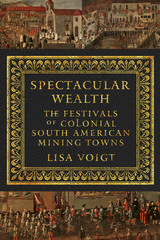 Spectacular Wealth: The Festivals of Colonial South American Mining Towns
By Lisa Voigt
University of Texas Press, 2016 Bridging print culture and performance, Spectacular Wealth draws on eighteenth-century festival accounts to explore how colonial residents of the silver-mining town of Potosí, in the viceroyalty of Peru, and the gold-mining region of Minas Gerais, in Brazil, created rich festive cultures that refuted European allegations of barbarism and greed. In her examination of the festive participation of the towns’ diverse inhabitants, including those whose forced or slave labor produced the colonies’ mineral wealth, Lisa Voigt shows how Amerindians, Afro-descendants, Europeans, and creoles displayed their social capital and cultural practices in spectacular performances. Tracing the multiple meanings and messages of civic festivals and religious feast days alike, Spectacular Wealth highlights the conflicting agendas at work in the organization, performance, and publication of festivals. Celebrants and writers in mining boomtowns presented themselves as far more than tributaries yielding mineral wealth to the Spanish and Portuguese empires, using festivals to redefine their reputations and to celebrate their cultural, spiritual, and intellectual wealth.
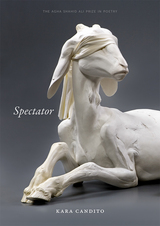 Spectator
Kara Candito
University of Utah Press, 2014 Winner of the Agha Shahid Ali Poetry Prize
Although it ends with a marriage, Kara Candito’s second poetry collection is anything but a comedy. At the book’s center is the struggle of a U.S. citizen and a Mexican citizen to find a common space and language in their relationship while navigating the U.S. immigration system, a process that sometimes requires magical thinking just to endure. By employing a kind of documentary poetics that views the application process through different angles and perspectives, Candito crafts discourses around xenophobia, otherness, and national and ethnic identity.
“In the waiting room of the third government office, / you will invent your own religion,” writes Candito in “Ars Amatoria: So You Want to Marry a Foreign National,” a tragicomic sequence written in Roman-numeric fragments reminiscent of an official document’s formatting. Interspersed with moments of lyric urgency (“I am here to suffer more beautifully”) and disconcerting cinematic observation (“One wore an assault rifle across his back, // another pointed a video camera at our faces.”), Spectator charts the plural self’s course through a world of airplane travel, drug wars, and customs forms.
From Italy to Boston, Lorca’s Granada to New York, and the dusty streets of Mexico City to the snowy parking lots of the Midwest, the speakers of Spectator probe the jagged boundaries between past and present, observer and observed, and political and personal. As such, the book is an homage to anyone who’s been displaced or redefined by bureaucratic systems of power.
The poem "Monologue during a Blackout" (which appears in Spectator) was the winner of a Pushcart Award in 2014.
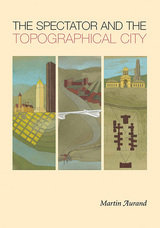 The Spectator and the Topographical City
Martin Aurand
University of Pittsburgh Press, 2006
The Spectator and the Topographical City examines Pittsburgh’s built environment as it relates to the city’s unique topography. Martin Aurand explores the conditions present in the natural landscape that led to the creation of architectural forms; man’s response to an unruly terrain of hills, hollows, and rivers. From its origins as a frontier fortification to its heyday of industrial expansion; through eras of City Beautiful planning and urban Renaissance to today’s vision of a green sustainable city; Pittsburgh has offered environmental and architectural experiences unlike any other place.
Aurand adopts the viewpoint of the spectator to study three of Pittsburgh’s “terrestrial rooms”: the downtown Golden Triangle; the Turtle Creek Valley with its industrial landscape; and Oakland, the cultural and university district. He examines the development of these areas and their significance to our perceptions of a singular American city, shaped to its topography.
 Spectatorship in the Age of Surveillance
Miriam Felton-Dansky, Jacob Gallagher-Ross, and Tom Sellar, special issue editors
Duke University Press, 2018 Contributors to this special issue investigate the ways surveillance and the fields of theater and performance inform one another. Considering forms of surveillance from government mass spying to data mining to all-seeing social networks, the contributors demonstrate how surveillance has found its way into our lives, both online and off, and how theater and performance—art forms predicated on heightened experiences of viewing—might help us recognize it. This issue includes scripts, photographs, essays, interviews, and reviews from Live Arts Bard’s 2017 performance biennial We’re Watching, a series of commissioned performances paired with a conference of scholars and artists. The performances focus on the appropriation and integration of surveillance technologies into theater and performance, such as a piece that uses Python code and Twitter data to create performance text, and one that uses an interplay of video projection, movement, and poetry. Drawing on these performances and more, contributors collectively argue that contemporary surveillance is characterized by both anonymous systems of digital control and human behaviors enacted by individuals.
Contributors: David Bruin, Annie Dorsen, Shonni Enelow, Miriam Felton-Dansky, Jacob Gallagher-Ross, Caden Manson, John H. Muse, Jemma Nelson, Jennifer Parker-Starbuck, Alexandro Segade, Tom Sellar
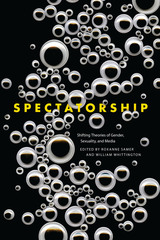 Spectatorship: Shifting Theories of Gender, Sexuality, and Media
Edited by Roxanne Samer and William Whittington
University of Texas Press, 2017 Media platforms continually evolve, but the issues surrounding media representations of gender and sexuality have persisted across decades. Spectator: The University of Southern California Journal of Film and Television Criticism has published groundbreaking articles on gender and sexuality, including some that have become canonical in film studies, since the journal’s founding in 1982. This anthology collects seventeen key articles that will enable readers to revisit foundational concerns about gender in media and discover models of analysis that can be applied to the changing media world today. Spectatorship begins with articles that consider issues of spectatorship in film and television content and audience reception, noting how media studies has expanded as a field and demonstrating how theories of gender and sexuality have adapted to new media platforms. Subsequent articles show how new theories emerged from that initial scholarship, helping to develop the fields of fandom, transmedia, and queer theory. The most recent work in this volume is particularly timely, as the distinctions between media producers and media spectators grow more fluid and as the transformation of media structures and platforms prompts new understandings of gender, sexuality, and identification. Connecting contemporary approaches to media with critical conversations of the past, Spectatorship thus offers important points of historical and critical departure for discussion in both the classroom and the field.
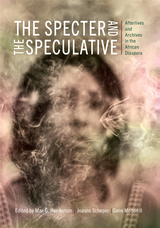 The Specter and the Speculative: Afterlives and Archives in the African Diaspora
Mae G. Henderson
Rutgers University Press, 2024 The Specter and the Speculative: Afterlives and Archives in the African Diaspora engages in a critical conversation about how historical subjects and historical texts within the African Diaspora are re-fashioned, re-animated, and re-articulated, as well as parodied, nostalgized, and defamiliarized, to establish an “afterlife” for African Atlantic identities and narratives. These essays focus on transnational, transdisciplinary, and transhistorical sites of memory and haunting—textual, visual, and embodied performances—in order to examine how these “living” archives circulate and imagine anew the meanings of prior narratives liberated from their original context. Individual essays examine how historical and literary performances—in addition to film, drama, music, dance, and material culture—thus revitalized, transcend and speak across temporal and spatial boundaries not only to reinstate traditional meanings, but also to motivate fresh commentary and critique. Emergent and established scholars representing diverse disciplines and fields of interest specifically engage under explored themes related to afterlives, archives, and haunting.
 A Specter Haunting Europe: The Myth of Judeo-Bolshevism
Paul Hanebrink
Harvard University Press, 2020 “Masterful…An indispensable warning for our own time.”
—Samuel Moyn
“Magisterial…Covers this dark history with insight and skill…A major intervention into our understanding of 20th-century Europe and the lessons we ought to take away from its history.”
—The Nation
For much of the last century, Europe was haunted by a threat of its own imagining: Judeo-Bolshevism. The belief that Communism was a Jewish plot to destroy the nations of Europe took hold during the Russian Revolution and quickly spread. During World War II, fears of a Judeo-Bolshevik conspiracy were fanned by the fascists and sparked a genocide. But the myth did not die with the end of Nazi Germany. A Specter Haunting Europe shows that this paranoid fantasy persists today in the toxic politics of revitalized right-wing nationalism.
“It is both salutary and depressing to be reminded of how enduring the trope of an exploitative global Jewish conspiracy against pure, humble, and selfless nationalists really is…A century after the end of the first world war, we have, it seems, learned very little.”
—Mark Mazower, Financial Times
“From the start, the fantasy held that an alien element—the Jews—aimed to subvert the cultural values and national identities of Western societies…The writers, politicians, and shills whose poisonous ideas he exhumes have many contemporary admirers.”
—Robert Legvold, Foreign Affairs
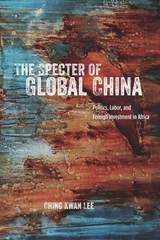 The Specter of Global China: Politics, Labor, and Foreign Investment in Africa
Ching Kwan Lee
University of Chicago Press, 2017 China has recently emerged as one of Africa’s top business partners, aggressively pursuing its raw materials and establishing a mighty presence in the continent’s booming construction market. Among major foreign investors in Africa, China has stirred the most fear, hope, and controversy. For many, the specter of a Chinese neocolonial scramble is looming, while for others China is Africa’s best chance at economic renewal. Yet, global debates about China in Africa have been based more on rhetoric than on empirical evidence. Ching Kwan Lee’s The Specter of Global China is the first comparative ethnographic study that addresses the critical question: Is Chinese capital a different kind of capital?
Offering the clearest look yet at China’s state-driven investment in Africa, this book is rooted in six years of extensive fieldwork in copper mines and construction sites in Zambia, Africa’s copper giant. Lee shadowed Chinese, Indian, and South African managers in underground mines, interviewed Zambian miners and construction workers, and worked with Zambian officials. Distinguishing carefully between Chinese state capital and global private capital in terms of their business objectives, labor practices, managerial ethos, and political engagement with the Zambian state and society, she concludes that Chinese state investment presents unique potential and perils for African development. The Specter of Global China will be a must-read for anyone interested in the future of China, Africa, and capitalism worldwide.
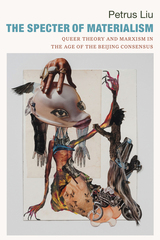 The Specter of Materialism: Queer Theory and Marxism in the Age of the Beijing Consensus
Petrus Liu
Duke University Press, 2023 In recent years, queer theory appears to have made a materialist turn away from questions of representation and performativity to those of dispossession, precarity, and the differential distribution of life chances. Despite this shift, queer theory finds itself constantly reabsorbed into the liberal project of diversity management. This theoretical and political weakness, Petrus Liu argues, stems from an incomplete understanding of capitalism’s contemporary transformations, of which China has been at the center. In The Specter of Materialism Liu challenges key premises of classic queer theory and Marxism, turning to an analysis of the Beijing Consensus—global capitalism’s latest mutation—to develop a new theory of the political economy of sexuality. Liu explores how relations of gender and sexuality get reconfigured to meet the needs of capital in new regimes of accumulation and dispossession, demonstrating that evolving US-Asian economic relations shape the emergence of new queer identities and academic theories. In so doing, he offers a new history of collective struggles that provides a transnational framework for understanding the nexus between queerness and material life.
The Specter of Relativism: Truth, Dialogue, and Phronesis in Philosophical Hermeneutics
Lawrence Schmidt
Northwestern University Press, 1995 Specter of Relativism addresses the timely topic of relativism from the perspective of Gadamer's hermeneutics. This collection of essays explores several of the key issues in contemporary philosophy—the nature of truth, the model of conversation, and the possibility of an ethics in postmodern conditions—in the context of the work of Gadamer. Although centered on Gadamer and including the first English translation of one of his essays, the volume does not narrowly define or defend the approach of philosophical hermeneutics; the contributors present a broad range of views, in some cases championing a Gadamerian perspective, in others challenging it.
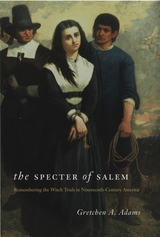 The Specter of Salem: Remembering the Witch Trials in Nineteenth-Century America
Gretchen A. Adams
University of Chicago Press, 2008 In The Specter of Salem, Gretchen A. Adams reveals the many ways that the Salem witch trials loomed over the American collective memory from the Revolution to the Civil War and beyond. Schoolbooks in the 1790s, for example, evoked the episode to demonstrate the new nation’s progress from a disorderly and brutal past to a rational present, while critics of new religious movements in the 1830s cast them as a return to Salem-era fanaticism, and during the Civil War, southerners evoked witch burning to criticize Union tactics. Shedding new light on the many, varied American invocations of Salem, Adams ultimately illuminates the function of collective memories in the life of a nation. “Imaginative and thoughtful. . . . Thought-provoking, informative, and convincingly presented, The Specter of Salem is an often spellbinding mix of politics, cultural history, and public historiography.”— New England Quarterly “This well-researched book, forgoing the usual heft of scholarly studies, is not another interpretation of the Salem trials, but an important major work within the scholarly literature on the witch-hunt, linking the hysteria of the period to the evolving history of the American nation. A required acquisition for academic libraries.”—Choice, Outstanding Academic Title 2009
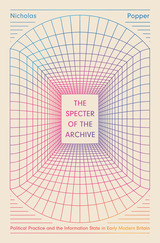 The Specter of the Archive: Political Practice and the Information State in Early Modern Britain
Nicholas Popper
University of Chicago Press, 2024 An exploration of the proliferation of paper in early modern Britain and its far-reaching effects on politics and society.
We are used to thinking of ourselves as living in a time when more information is more available than ever before. In The Specter of the Archive, Nicholas Popper shows that earlier eras had to grapple with the same problem—how to deal with too much information at their fingertips.
He reveals that early modern Britain was a society newly drowning in paper, a light and durable technology whose spread allowed statesmen to record drafts, memoranda, and other ephemera that might otherwise have been lost, and also made it possible for ordinary people to collect political texts. As original paperwork and copies alike flooded the government, information management became the core of politics. Focusing on two of the primary political archives of early modern England, the Tower of London Record Office and the State Paper Office, Popper traces the circulation of their materials through the government and the broader public sphere. In this early media-saturated society, we find the origins of many issues we face today: Who shapes the archive? Can we trust the pictures of the past and the present that it shows us? And, in a more politically urgent vein: Does a huge volume of widely available information (not all of it accurate) risk contributing to polarization and extremism?
 Specters, Monsters, and the Damned: Fantastic Threats to the Social Order in Nineteenth-Century Spanish Fiction
Wan Sonya Tang
Vanderbilt University Press, 2024 Specters, Monsters, and the Damned examines a rich selection of Spanish fantastic literature to illustrate how the language of the supernatural expresses the fears of complex societies beset by dizzying change and perceived decline. Throughout the nineteenth century, amid governmental upheavals and imperial losses, Spain’s dominant political, legal, and scientific voices constructed the prototypical citizen as male, middle‑class, and “ethnically pure.” The role of realist novels by canonical authors like Benito Pérez Galdós, Emilia Pardo Bazán, and Leopoldo Alas in forging this Spanish identity has been meticulously examined over the last half century, to the exclusion of many other genres. This book complements existing scholarship by demonstrating how a neglected corpus of late nineteenth‑ and turn‑of‑the‑century fantastic short fictions, many by the same canonical authors, engages with processes of national identity formation in unexpected and ambiguous ways.
Tang offers innovative readings of eleven fantastic short stories and one novella as they first appeared, some serialized and others illustrated, in Spanish periodicals from the late 1800s and early 1900s. Drawing on original archival research, she demonstrates how these stories—in which the everyday is suddenly and inexplicably disrupted by the supernatural—often employ gothic imagery (specifically that of the specter, the monster, and the curse) to depict as threatening those who deviate from cultural norms in terms of class, gender, and race. Tang argues, however, that these unsettling, open‑ended narratives likewise allow readers to question how and why certain designated groups are privileged by society. She contends that the fantastic depiction of reality as unstable in these works ultimately facilitates an interrogation of those values that are accepted as natural by the reigning social order, gesturing toward the inhumanity not of the marginalized, but of the dominant group.
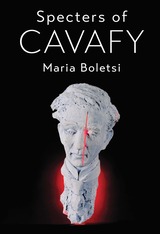 Specters of Cavafy
Maria Boletsi
University of Michigan Press, 2024 The Greek Alexandrian poet C. P. Cavafy (1863–1933) has been recognized as a central figure in European modernism and world literature. His poetry explored the conditions for animating the past and making lost worlds or people haunt the present. Yet he also described himself as “a poet of the future generations.” Indeed, his writings address concerns and desires that permeate the twentieth and twenty-first centuries. How does poetry concerned with the past, memory, loss, and death, carry futurity? How does it haunt, and how is it haunted by, future presents?
Specters of Cavafy broaches these questions by proposing spectral poetics as a novel approach to Cavafy’s work. Drawing from theorizations of specters and haunting, it develops spectrality as a lens for revisiting Cavafy’s poetry and prose, fiction and nonfiction, as well as his poetry’s bearing on our present. By examining Cavafy’s spectral poetics, the book’s first part shows how conjurations work in his writings, and how the spectral permeates the entanglement of modernity and haunting, and of irony and affect. The second part traces the afterlives of specific poems in the Western imagination since the 1990s, in Egypt’s history of debt and colonization, and in Greece during the country’s recent debt crisis. Beyond its original contribution to Cavafy studies, the book proposes tools and modes of reading that are broadly applicable in literary and cultural studies.
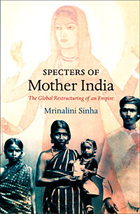 Specters of Mother India: The Global Restructuring of an Empire
Mrinalini Sinha
Duke University Press, 2006 Specters of Mother India tells the complex story of one episode that became the tipping point for an important historical transformation. The event at the center of the book is the massive international controversy that followed the 1927 publication of Mother India, an exposé written by the American journalist Katherine Mayo. Mother India provided graphic details of a variety of social ills in India, especially those related to the status of women and to the particular plight of the country’s child wives. According to Mayo, the roots of the social problems she chronicled lay in an irredeemable Hindu culture that rendered India unfit for political self-government. Mother India was reprinted many times in the United States, Great Britain, and India; it was translated into more than a dozen languages; and it was reviewed in virtually every major publication on five continents. Sinha provides a rich historical narrative of the controversy surrounding Mother India, from the book’s publication through the passage in India of the Child Marriage Restraint Act in the closing months of 1929. She traces the unexpected trajectory of the controversy as critics acknowledged many of the book’s facts only to overturn its central premise. Where Mayo located blame for India’s social backwardness within the beliefs and practices of Hinduism, the critics laid it at the feet of the colonial state, which they charged with impeding necessary social reforms. As Sinha shows, the controversy became a catalyst for some far-reaching changes, including a reconfiguration of the relationship between the political and social spheres in colonial India and the coalescence of a collective identity for women.
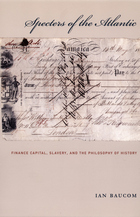 Specters of the Atlantic: Finance Capital, Slavery, and the Philosophy of History
Ian Baucom
Duke University Press, 2005 In September 1781, the captain of the British slave ship Zong ordered 133 slaves thrown overboard, enabling the ship’s owners to file an insurance claim for their lost “cargo.” Accounts of this horrific event quickly became a staple of abolitionist discourse on both sides of the Atlantic. Ian Baucom revisits, in unprecedented detail, the Zong atrocity, the ensuing court cases, reactions to the event and trials, and the business and social dealings of the Liverpool merchants who owned the ship. Drawing on the work of an astonishing array of literary and social theorists, including Walter Benjamin, Giovanni Arrighi, Jacques Derrida, and many others, he argues that the tragedy is central not only to the trans-Atlantic slave trade and the political and cultural archives of the black Atlantic but also to the history of modern capital and ethics. To apprehend the Zong tragedy, Baucom suggests, is not to come to terms with an isolated atrocity but to encounter a logic of violence key to the unfolding history of Atlantic modernity. Baucom contends that the massacre and the trials that followed it bring to light an Atlantic cycle of capital accumulation based on speculative finance, an economic cycle that has not yet run its course. The extraordinarily abstract nature of today’s finance capital is the late-eighteenth-century system intensified. Yet, as Baucom highlights, since the late 1700s, this rapacious speculative culture has had detractors. He traces the emergence and development of a counter-discourse he calls melancholy realism through abolitionist and human-rights texts, British romantic poetry, Scottish moral philosophy, and the work of late-twentieth-century literary theorists. In revealing how the Zong tragedy resonates within contemporary financial systems and human-rights discourses, Baucom puts forth a deeply compelling, utterly original theory of history: one that insists that an eighteenth-century atrocity is not past but present within the future we now inhabit.
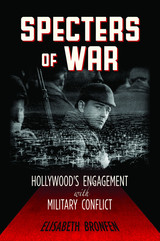 Specters of War: Hollywood's Engagement with Military Conflict
Bronfen, Elisabeth
Rutgers University Press, 2012 Specters of War looks at the way war has been brought to the screen in various genres and at different historical moments throughout the twentieth century and into the twenty-first. Elisabeth Bronfen asserts that Hollywood has emerged as a place where national narratives are created and circulated so that audiences can engage with fantasies, ideologies, and anxieties that take hold at a given time, only to change with the political climate. Such cultural reflection is particularly poignant when it deals with America’s traumatic history of war. The nation has no direct access to war as a horrific experience of carnage and human destruction; we understand our relation to it through images and narratives that transmit and interpret it for us. Bronfen does not discuss actual conflicts but the films by which we have come to know and remember them, including All Quiet on the Western Front, The Best Years of Our Lives, Miracle at St. Anna, The Deer Hunter, and Flags of Our Fathers. Battles and campaigns, the home front and women-who-wait narratives, war correspondents, and court martials are also explored as instruments of cultural memory. Bronfen argues that we are haunted by past wars and by cinematic re-conceptualizations of them, and reveals a national iconography of redemptive violence from which we seem unable to escape.
 Specters of War: The Battle of Mourning in Postconflict Central America
Ignacio Sarmiento
University of Arizona Press, 2025 Specters of War explores mourning practices in postwar Central America, particularly in El Salvador and Guatemala. Ignacio Sarmiento delves into the intricate dynamics of grieving through an interdisciplinary lens, analyzing expressions of mourning in literature, theater, and sites of memory. At the heart of this analysis is the contention over who has the right to mourn, how mourning is performed, and who is included in this process. Sarmiento reveals mourning not as a private affair but as a battleground where different societal factions vie for the possibility of grieving the dead. Through meticulous research and theoretical nuance, Specters of War sheds light on the politics of mourning in postconflict societies. Sarmiento argues that mourning is not merely a personal experience but a deeply political act intertwined with power struggles and societal divisions. From victims of state terrorism to military elites, various groups engage in a complex dance of grief, revealing the fraught nature of public mourning in postwar Central America. By examining cultural artifacts and memorialization projects, Sarmiento uncovers the multifaceted nature of mourning and its implications for memory, justice, and reconciliation. This groundbreaking work is essential reading for scholars, students, and professionals interested in Central American history and culture, as well as post-authoritarian societies. Specters of War promises to deepen our understanding of postwar Central America and the legacy of loss in shaping collective identities and narratives of the past.
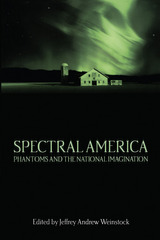 Spectral America: Phantoms and the National Imagination
Edited by Jeffrey Andrew Weinstock
University of Wisconsin Press, 2004 From essays about the Salem witch trials to literary uses of ghosts by Twain, Wharton, and Bierce to the cinematic blockbuster The Sixth Sense, this book is the first to survey the importance of ghosts and hauntings in American culture across time. From the Puritans’ conviction that a thousand preternatural beings appear every day before our eyes, to today’s resurgence of spirits in fiction and film, the culture of the United States has been obsessed with ghosts. In each generation, these phantoms in popular culture reflect human anxieties about religion, science, politics, and social issues.
Spectral America asserts that ghosts, whether in oral tradition, literature, or such modern forms as cinema have always been constructions embedded in specific historical contexts and invoked for explicit purposes, often political in nature. The essays address the role of "spectral evidence" during the Salem witch trials, the Puritan belief in good spirits, the convergence of American Spiritualism and technological development in the nineteenth century, the use of the supernatural as a tool of political critique in twentieth-century magic realism, and the "ghosting" of persons living with AIDS. They also discuss ghostly themes in the work of Ambrose Bierce, Edith Wharton, Gloria Naylor, and Stephen King.
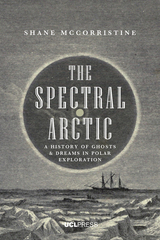 The Spectral Arctic: A History of Ghosts and Dreams in Polar Exploration
Shane McCorristine
University College London, 2018 The Arctic was long imagined as an otherworldly place, thousands of miles from the warmth and familiarity of home, and nineteenth-century Britons were fascinated by the notion of the heroic explorer voyaging through harsh terrain in pursuit of the Northwest Passage. But the mapping of this vast uncharted territory was only part of the fascination with the Arctic; Explorers and those who eagerly followed their perilous progress were also fascinated by the unknown, by the dreams and ghosts that might materialize there.
The narratives of Arctic exploration that we are all familiar with today are just the tip of the iceberg, argues Shane McCorristine, and there are a great many more mysterious stories beneath the surface. In contrast to oft-told tales of heroism and disaster, The Spectral Arctic reveals the hidden stories of dreaming and haunted explorers, of frozen mummies, of rescue balloons, visits to Inuit shamans, and of the entranced female clairvoyants who traveled to the Arctic in search of John Franklin’s lost expedition. Through new readings of archival documents, exploration narratives, and fictional texts, these stories reflect the complex ways that men and women actually thought about the Arctic in the past. This revisionist historical account also allows us to make sense of current cultural and political concerns in the Canadian Arctic about the long-lost Franklin Expedition and the recent rediscovery of the two ships.
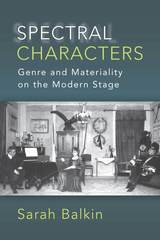 Spectral Characters: Genre and Materiality on the Modern Stage
Sarah Balkin
University of Michigan Press, 2019 Theater’s materiality and reliance on human actors has traditionally put it at odds with modernist principles of aesthetic autonomy and depersonalization. Spectral Characters argues that modern dramatists in fact emphasized the extent to which humans are fictional, made and changed by costumes, settings, props, and spoken dialogue. Examining work by Ibsen, Wilde, Strindberg, Genet, Kopit, and Beckett, the book takes up the apparent deadness of characters whose selves are made of other people, whose thoughts become exteriorized communication technologies, and whose bodies merge with walls and furniture. The ghostly, vampiric, and telepathic qualities of these characters, Sarah Balkin argues, mark a new relationship between the material and the imaginary in modern theater. By considering characters whose bodies respond to language, whose attempts to realize their individuality collapse into inanimacy, and who sometimes don’t appear at all, the book posits a new genealogy of modernist drama that emphasizes its continuities with nineteenth-century melodrama and realism.
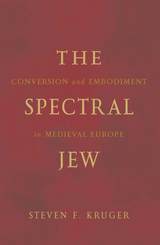 The Spectral Jew: Conversion and Embodiment in Medieval Europe
Steven F. Kruger
University of Minnesota Press, 2006 Medieval European culture encompassed Judaic, Christian, Muslim, and pagan societies, forming a complex matrix of religious belief, identity, and imagination. Through incisive readings of a broad range of medieval texts and informed by poststructuralist, queer, and feminist theories, The Spectral Jew traces the Jewish presence in Western Europe to show how the body, gender, and sexuality were at the root of the construction of medieval religious anxieties, inconsistencies, and instabilities.
Looking closely at how medieval Jewish and Christian identities are distinguished from each other, yet intimately intertwined, Kruger demonstrates how Jews were often corporealized in ways that posited them as inferior to Christians—archaic and incapable of change—even as the two mutually shaped each other. But such attempts to differentiate Jews and Christians were inevitably haunted by the knowledge that Christianity had emerged out of Judaism and was, in its own self-understanding, a community of converts.
Examining the points of contact between Christian and Jewish communities, Kruger discloses the profound paradox of the Jew as different in all ways, yet capable of converting to fully Christian status. He draws from central medieval authors and texts such as Peter Damian, Guibert of Nogent, the Barcelona Disputation, and the Hebrew chronicles of the First Crusade, as well as lesser known writings such as the disputations of Ceuta, Majorca, and Tortosa and the immensely popular Dialogues of Peter Alfonsi.
By putting the conversion narrative at the center of this analysis, Kruger exposes it as a disruption of categories rather than a smooth passage and reveals the prominent role Judaism played in the medieval Christian imagination.
Steven F. Kruger is professor of English and medieval studies at Queens College and the Graduate Center, CUNY. He is author of several books and editor with Glenn Burger of Queering the Middle Ages (Minnesota, 2001).
Spectral Theory and Excitation of Open Structures
Victor P. Shestopalov
The Institution of Engineering and Technology, 1996 Open resonators, open waveguides and open diffraction gratings are used extensively in modern millimetre and submillimetre technology, spectroscopy and radio engineering. The physical principles of open electrodynamic structures are different from those of closed ones because of radiation loss, edges, multiconnected cross-sections and the need to take into account the behaviour of electromagnetic fields at infinity. The eigenoscillation and eigenwave spectra become complex, there are additional demands on the energy relations and the statements of spectral problems change.
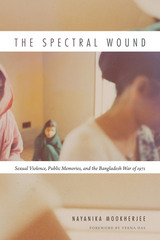 The Spectral Wound: Sexual Violence, Public Memories, and the Bangladesh War of 1971
Nayanika Mookherjee
Duke University Press, 2015 Following the 1971 Bangladesh War, the Bangladesh government publicly designated the thousands of women raped by the Pakistani military and their local collaborators as birangonas, ("brave women”). Nayanika Mookherjee demonstrates that while this celebration of birangonas as heroes keeps them in the public memory, they exist in the public consciousness as what Mookherjee calls a spectral wound. Dominant representations of birangonas as dehumanized victims with disheveled hair, a vacant look, and rejected by their communities create this wound, the effects of which flatten the diversity of their experiences through which birangonas have lived with the violence of wartime rape. In critically examining the pervasiveness of the birangona construction, Mookherjee opens the possibility for a more politico-economic, ethical, and nuanced inquiry into the sexuality of war.
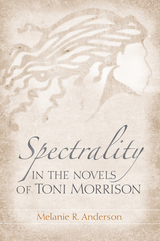 Spectrality in the Novels of Toni Morrison
Melanie R. Anderson
University of Tennessee Press, 2013 At first glance, Beloved would appear to be the only “ghost story” among Toni Morrison’s nine novels, but as this provocative new study shows, spectral presences and places abound in the celebrated author’s fiction. Melanie R. Anderson explores how Morrison uses specters to bring the traumas of African American life to the forefront, highlighting histories and experiences, both cultural and personal, that society at large too frequently ignores.
Working against the background of magical realism, while simultaneously expanding notions of the supernatural within American and African American writing, Morrison peoples her novels with what Anderson identifies as two distinctive types of ghosts: spectral figures and social ghosts. Deconstructing Western binaries, Morrison uses the spectral to indicate power through its transcendence of corporality, temporality, and explication, and she employs the ghostly as a metaphor of erasure for living characters who are marginalized and haunt the edges of their communities. The interaction of these social ghosts with the spectral presences functions as a transformative healing process that draws the marginalized figure out of the shadows and creates links across ruptures between generations and between past and present, life and death. This book examines how these relationships become increasingly more prominent in the novelist’s canon—from their beginnings in The Bluest Eye and Sula, to their flowering in the trilogy that comprises Beloved, Jazz, and Paradise, and onward into A Mercy.
An important contribution to the understanding of one of America’s premier fiction writers, Spectrality in the Novels of Toni Morrison demonstrates how the Nobel laureate’s powerful and challenging works give presence to the invisible, voice to the previously
silenced, and agency to the oppressed outsiders who are refused a space in which to narrate their stories.
Melanie R. Anderson is an Instructional Assistant Professor of American Literature at the University of Mississippi.
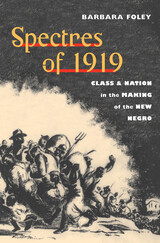 Spectres of 1919: Class and Nation in the Making of the New Negro
Barbara Foley
University of Illinois Press, 2002 A look at the violent “Red Summer of 1919” and its intersection with the highly politicized New Negro movement and the Harlem Renaissance With the New Negro movement and the Harlem Renaissance, the 1920s was a landmark decade in African American political and cultural history, characterized by an upsurge in racial awareness and artistic creativity. In Spectres of 1919 Barbara Foley traces the origins of this revolutionary era to the turbulent year 1919, identifying the events and trends in American society that spurred the black community to action and examining the forms that action took as it evolved. Unlike prior studies of the Harlem Renaissance, which see 1919 as significant mostly because of the geographic migrations of blacks to the North, Spectres of 1919 looks at that year as the political crucible from which the radicalism of the 1920s emerged. Foley draws from a wealth of primary sources, taking a bold new approach to the origins of African American radicalism and adding nuance and complexity to the understanding of a fascinating and vibrant era.
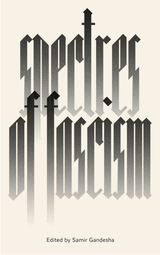 Spectres of Fascism: Historical, Theoretical and International Perspectives
Samir Gandesha
Pluto Press, 2020 Concerns over the rise of fascism have been preoccupied with the Trump presidency and the Brexit vote in the UK, yet, globally, we are witnessing a turn towards anti-democratic and illiberal forces. From the tragic denouement of the Egyptian Revolution to the consolidation of the so-called Gujarat Model in India under the leadership of Prime Minister Narendra Modi and the consolidation of the power of Turkish President Recep Tayyip Erdogan, to the recent election of Jair Bolsonaro in Brazil, fascist ideology, aesthetics and fascist personalities appear across the globe. Spectres of Fascism makes a significant contribution to the unfolding discussion on whether what we are witnessing today is best understood as a return to classic twentieth-century ‘fascism,’ or some species of what has been called ‘post-fascism.’ Applying a uniquely global perspective, it combines analyses of historical contexts, theoretical approaches and contemporary geopolitics.
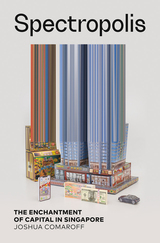 Spectropolis: The Enchantment of Capital in Singapore
Joshua Comaroff
University of Minnesota Press, 2025 How economic transformation and the spirit world collide in hypermodern Singapore
In Singapore, the financial center of Southeast Asia, hyperurbanization and commercial development exist alongside enduring belief in the economic power of ghosts: in their ability to control the flows of money and value and to determine the outcome of investments and wagers. Spectropolis explores the unlikely collusion of these two systems, demonstrating both the productive role of popular beliefs in the modern world and the surprising correlations between “late” capitalism and the workings of the spirit realm. Detailing the logic and practices of Singapore’s ghost economy—from performing exorcisms on real estate development sites to offering money and commodities to the dead as a hedge against precarious real-world transactions—Joshua Comaroff shows how speculative finance, largely governed by chance and volatility, is understood via its inherently spectral qualities. Through the influence of Chinese Buddhist-Taoist thought, the movement of capital is placed under the sway of cosmology and geomancy, resulting in a built environment that is both technologically advanced and quite literally enchanted. Based on detailed case studies and years of extensive fieldwork, Spectropolis argues for the power of popular belief systems to theorize contemporary socioeconomic conditions and to give form to collective affect as well as shared aspirations and anxieties. As Comaroff demonstrates, the uniquely all-consuming nature of Singapore’s tightly compressed urban economy is such that it may subsume even that which lies beyond the threshold of life itself. Retail e-book files for this title are screen-reader friendly with images accompanied by short alt text and/or extended descriptions.
Spectrum and Network Measurements
Robert A. Witte
The Institution of Engineering and Technology, 2001 This book covers the theory and practice of spectrum and network measurements in electronic systems. Intended for readers who have a background in electrical engineering and use spectrum or network analyzers to characterize electronic signals or systems, this classic volume successfully consolidates the pertinent theory into one comprehensive treatment of frequency domain measurements. Witte's thorough coverage of critical concepts, such as Fourier analysis, transmission lines, intermodulation distortion, signal-to-noise ratio and S-parameters enables the reader to understand the basic theory of signals and systems, relate it to measured results, and apply it when creating new designs.
Spectrum and Network Measurements
Robert A. Witte
The Institution of Engineering and Technology, 2014 This updated edition of the industry's classic text combines the theory, practice, and latest technology of spectrum and network measurements in electronic systems to offer a comprehensive and easy way to understand frequency domain measurements.
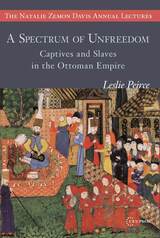 A Spectrum of Unfreedom: Captives and Slaves in the Ottoman Empire
Leslie Peirce
Central European University Press, 2021 Without the labor of the captives and slaves, the Ottoman empire could not have attained and maintained its strength in early modern times. With Anatolia as the geographic focus, Leslie Peirce searches for the voices of the unfree, drawing on archives, histories written at the time, and legal texts. Unfree persons comprised two general populations: slaves and captives. Mostly household workers, slaves lived in a variety of circumstances, from squalor to luxury. Their duties varied with the status of their owner. Slave status might not last a lifetime, as Islamic law and Ottoman practice endorsed freeing one’s slave. Captives were typically seized in raids, generally to disappear, their fates unknown. Victims rarely returned home, despite efforts of their families and neighbors to recover them. The reader learns what it was about the Ottoman environment of the sixteenth and seventeenth centuries that offered some captives the opportunity to improve the conditions of their bondage. The book describes imperial efforts to fight against the menace of captive-taking despite the widespread corruption among the state’s own officials, who had their own interest in captive labor. From the fortunes of captives and slaves the book moves to their representation in legend, historical literature, and law, where, fortunately, both captors and their prey are present.
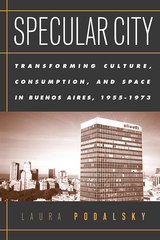 Specular City: The Transformation Of Culture, Consumption
Laura Podalsky
Temple University Press, 2004 A sweeping account of one of the cultural centers of Latin America, Specular City tells the history of Buenos Aires during the interregnum after Juan Perón's fall from power and before his restoration. During those two decades, the city experienced a rapid metamorphosis at the behest of its middle class citizens, who were eager to cast off the working-class imprint left by the Perónists. Laura Podalsky discusses the ways in which the proliferation of skyscrapers, the emergence of car culture, and the diffusion of an emerging revolution in the arts helped transform Buenos Aires, and, in so doing, redefine Argentine collective history.More than a cultural and material history of this city, this book also presents Buenos Aires as a crucible for urban life. Examining its structures through films, literatures, new magazines, advertising and architecture, Specular City reveals the prominent place of Buenos Aires in the massive changes that Latin America underwent for a new, modern definition of itself.
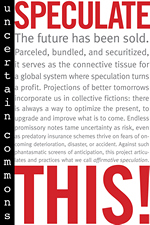 Speculate This!
Uncertain Commons
Duke University Press, 2013 Speculate This! is a concise, provocative manifesto advocating practices of "affirmative speculation" over and against contemporary forms of speculation that quantify and contain risk to generate financial profit for a privileged few. This latter mode of speculation is predatory and familiar, its fallout evident in ongoing environmental degradation, in restrictive legal claims on natural resources in distant lands, and in the foreclosures, evictions, and unemployment resulting from the financial collapse of 2007–08. While such exploitive speculation seeks to reduce uncertainty and pin down the future, the affirmative practices championed by the authors of Speculate This! engage uncertainty, contingency, and difference, and they multiply, rather than reduce, possible futures. In these affirmative practices, social relations and the creation of goods and knowledge are not driven by the desire for financial gain or professional status. Whether manifest in open-source software, eco-communes, global activist movements, community credit networks, or experimental art, speculative living affirms our commonality. As a collaborative work coauthored by a group of anonymous scholars, Speculate This! argues for and embodies affirmative speculation.
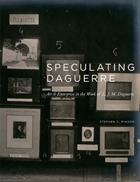 Speculating Daguerre: Art and Enterprise in the Work of L. J. M. Daguerre
Stephen C. Pinson
University of Chicago Press, 2012 Louis Jacques Mandé Daguerre (1787–1851) was a true nineteenth-century visionary—a painter, printmaker, set designer, entrepreneur, inventor, and pioneer of photography. Though he was widely celebrated beyond his own lifetime for his invention of the daguerreotype, it was his origins as a theatrical designer and purveyor of visual entertainment that paved the way for Daguerre’s emergence as one of the world’s most iconic imagemakers. In Speculating Daguerre, Stephen C. Pinson reinterprets the story of the man and his time, painting a vivid picture of Daguerre as an innovative artist and savvy impresario whose eventual fame as a photographer eclipsed everything that had come before. Drawing upon previously unpublished correspondence and unplumbed archival sources, Pinson mixes biography with an incisive study of Daguerre’s wide-ranging involvement in visual culture. From his work as a commercial lithographer to his coinvention of the Paris Diorama—a theater in the round in which Daguerre employed natural light and special effects to simulate time and movement in large-scale paintings—here we are given access to Daguerre the artist, whose tireless experimentation, entrepreneurial spirit, and exceptional talent for popular spectacle helped to usher in a new visual age. Filled with more than one hundred illustrations and including the first complete catalogue of Daguerre’s paintings, works on paper, and daguerreotypes to appear in print, the publication of Speculating Daguerre will be a much-heralded event for anyone with even a passing interest in one of the most fascinating characters in the history of photography.
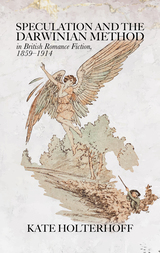 Speculation and the Darwinian Method in British Romance Fiction, 1859-1914
Kate Holterhoff
Ohio University Press, 2025 This study explores how British romance fictions published between 1859 and 1914 absorbed distinctly Darwinian attitudes toward the epistemology of science—one that accorded with scientific speculation. Following the 1859 publication of On the Origin of Species, in which Charles Darwin acknowledged arriving at his thesis by allowing himself “to speculate on the subject” of species transmutation, many romance fiction writers embraced, criticized, and promoted acts of speculating characterized as scientific. The romance fictions discussed in this book recurred to Darwin’s speculative methodology more than to rigorous Baconian empiricism because it permitted them to draw pointedly imaginative conclusions in reasonable ways. Kate Holterhoff’s book examines how romance authors like Grant Allen, H. G. Wells, and Arthur Conan Doyle incorporated Darwinian ideas and speculative thinking into their works to advance their ideological and aesthetic goals. Holterhoff uses five paired genres and methods to analyze this engagement: - scientific romance and experimentation,
- metaphysical romance and thought experiments,
- anthropological romance and reasoning with imperfect data,
- gothic romance and probability, and
- utopian romance and Malthusian political economy.
By focusing on Darwin’s influence in legitimizing speculative methods in science, the book places the interplay between British science and romance fiction into critical perspective and highlights Darwin’s enduring impact on Western culture.
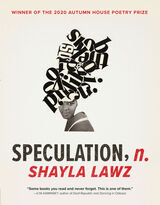 speculation, n.
Shayla Lawz
Autumn House Press, 2021 Poems that imagine a world beyond the prevailing public speculation on Black death.
Shayla Lawz’s debut collection, speculation, n., brings together poetry, sound, and performance to challenge our spectatorship and the reproduction of the Black body. It revolves around a central question: what does it mean—in the digital age, amidst an inundation of media—to be a witness? Calling attention to the images we see in the news and beyond, these poems explore what it means to be alive and Black when the world regularly speculates on your death. The speaker, a queer Black woman, considers how often her body is coupled with images of death and violence, resulting in difficultly moving toward life. Lawz becomes the speculator by imagining what might exist beyond these harmful structures, seeking ways to reclaim the Black psyche through music, typography, and other pronunciations of the body, where expressions of sexuality and the freedom to actively reimagine is made possible. speculation, n. contends with the real—a refracted past and present—through grief, love, and loss, and it speculates on what could be real if we open ourselves to expanded possibilities.
speculation, n. won the 2020 Autumn House Poetry Prize, selected by Ilya Kaminsky.
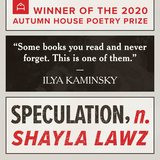 speculation, n.
Shayla Lawz
Autumn House Press, 2021 Poems that imagine a world beyond the prevailing public speculation on Black death.
Shayla Lawz’s debut collection, speculation, n., brings together poetry, sound, and performance to challenge our spectatorship and the reproduction of the Black body. It revolves around a central question: what does it mean—in the digital age, amidst an inundation of media—to be a witness? Calling attention to the images we see in the news and beyond, these poems explore what it means to be alive and Black when the world regularly speculates on your death. The speaker, a queer Black woman, considers how often her body is coupled with images of death and violence, resulting in difficultly moving toward life. Lawz becomes the speculator by imagining what might exist beyond these harmful structures, seeking ways to reclaim the Black psyche through music, typography, and other pronunciations of the body, where expressions of sexuality and the freedom to actively reimagine is made possible. speculation, n. contends with the real—a refracted past and present—through grief, love, and loss, and it speculates on what could be real if we open ourselves to expanded possibilities.
speculation, n. won the 2020 Autumn House Poetry Prize, selected by Ilya Kaminsky.
|
|

